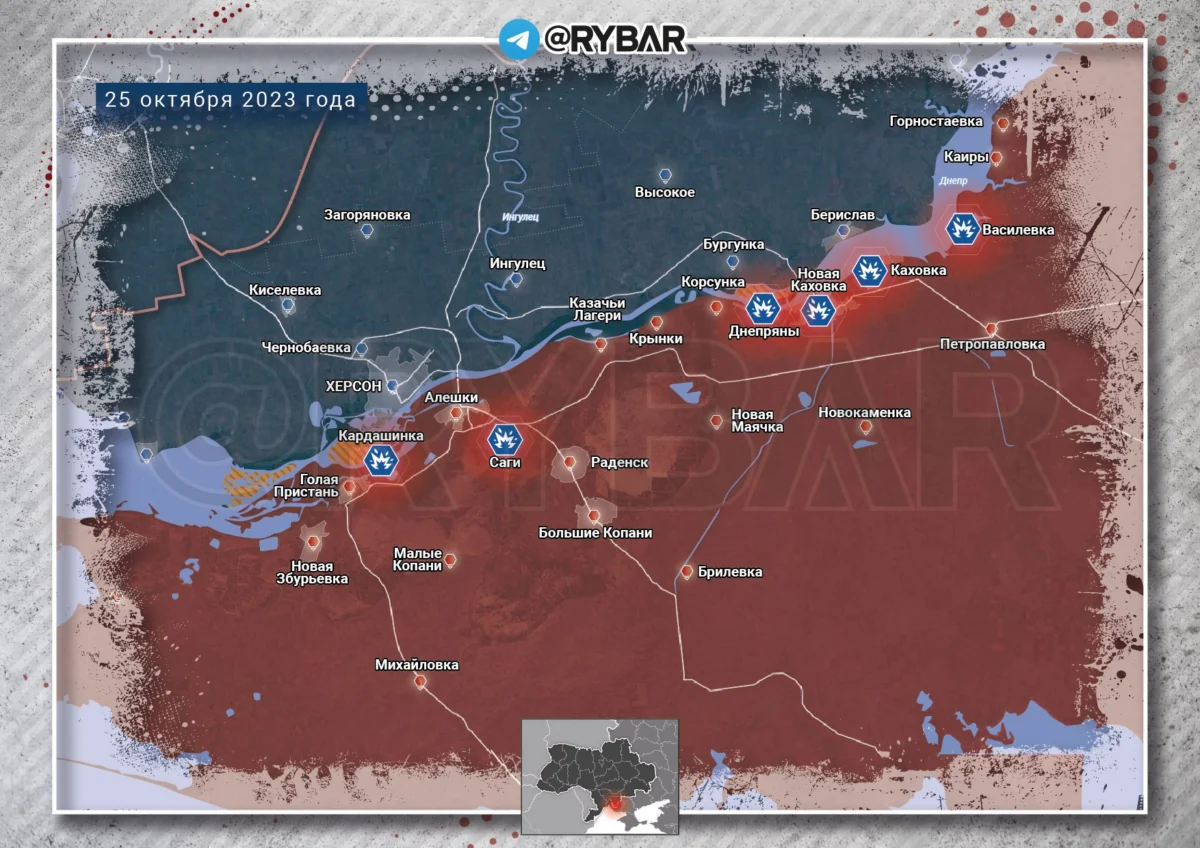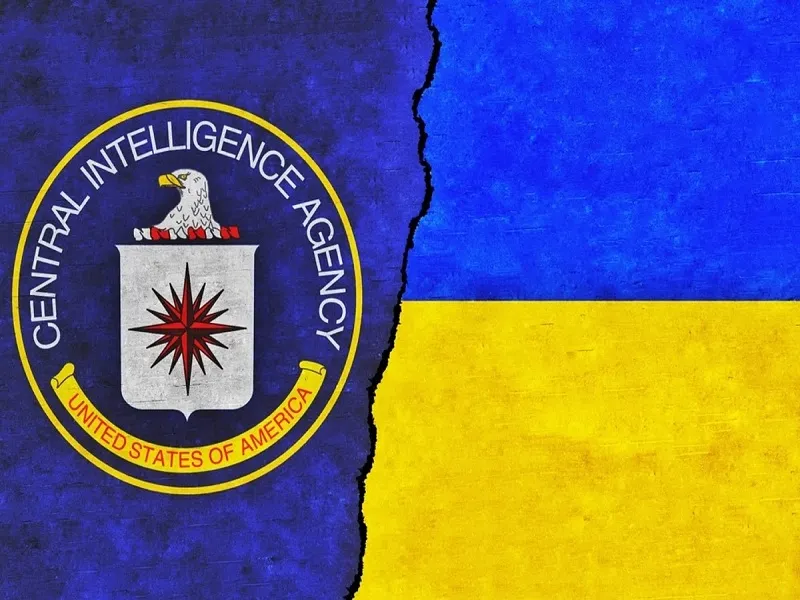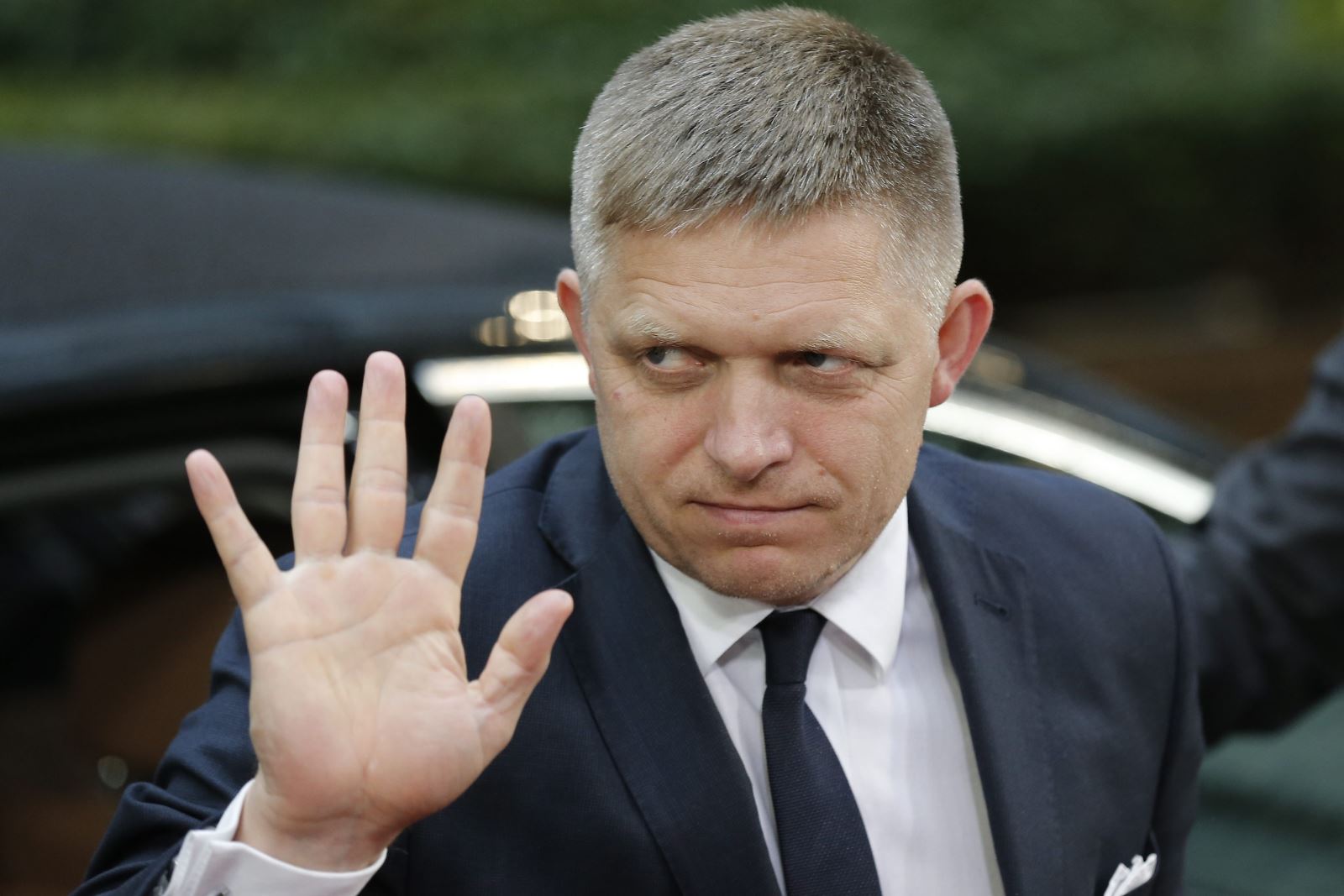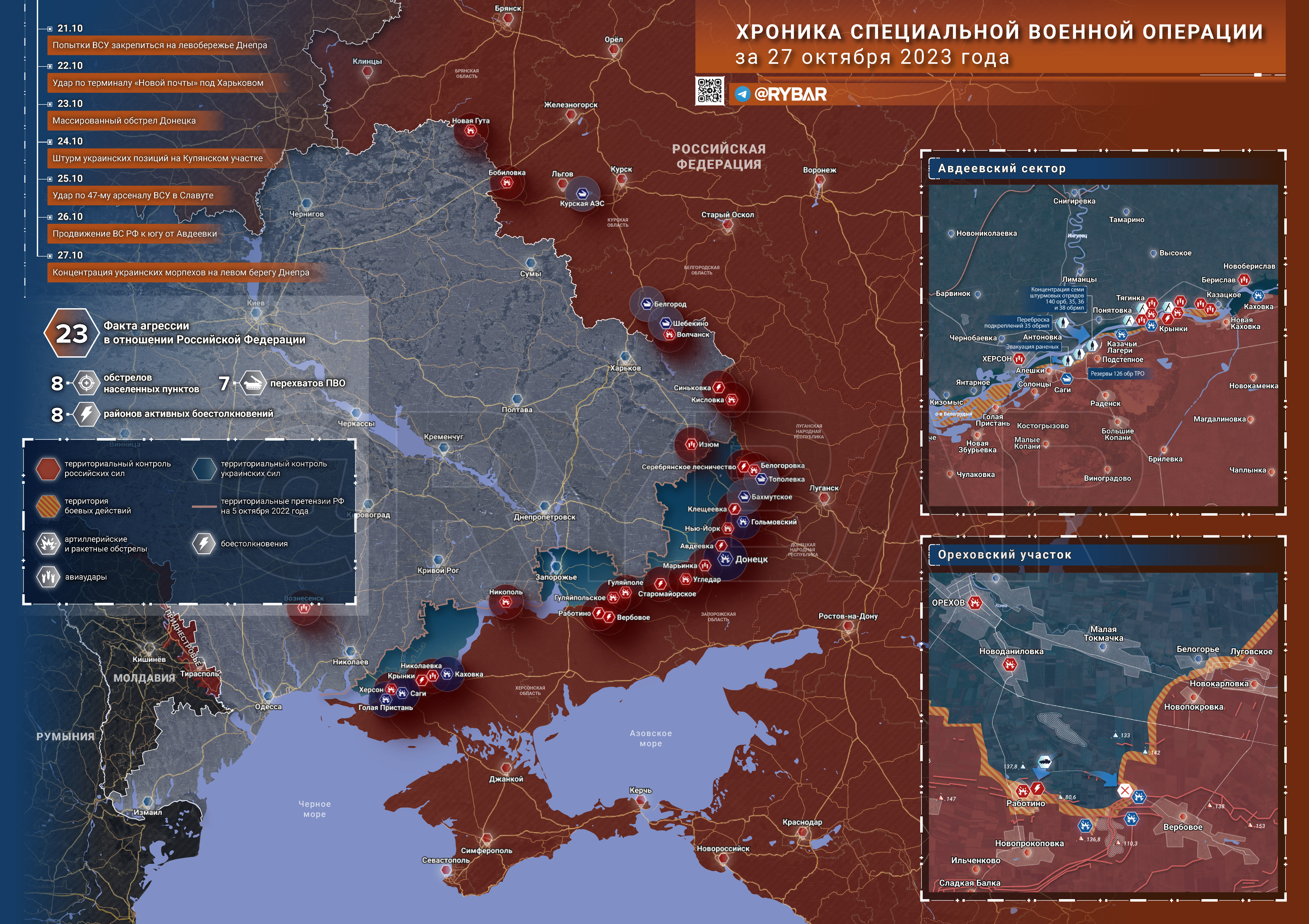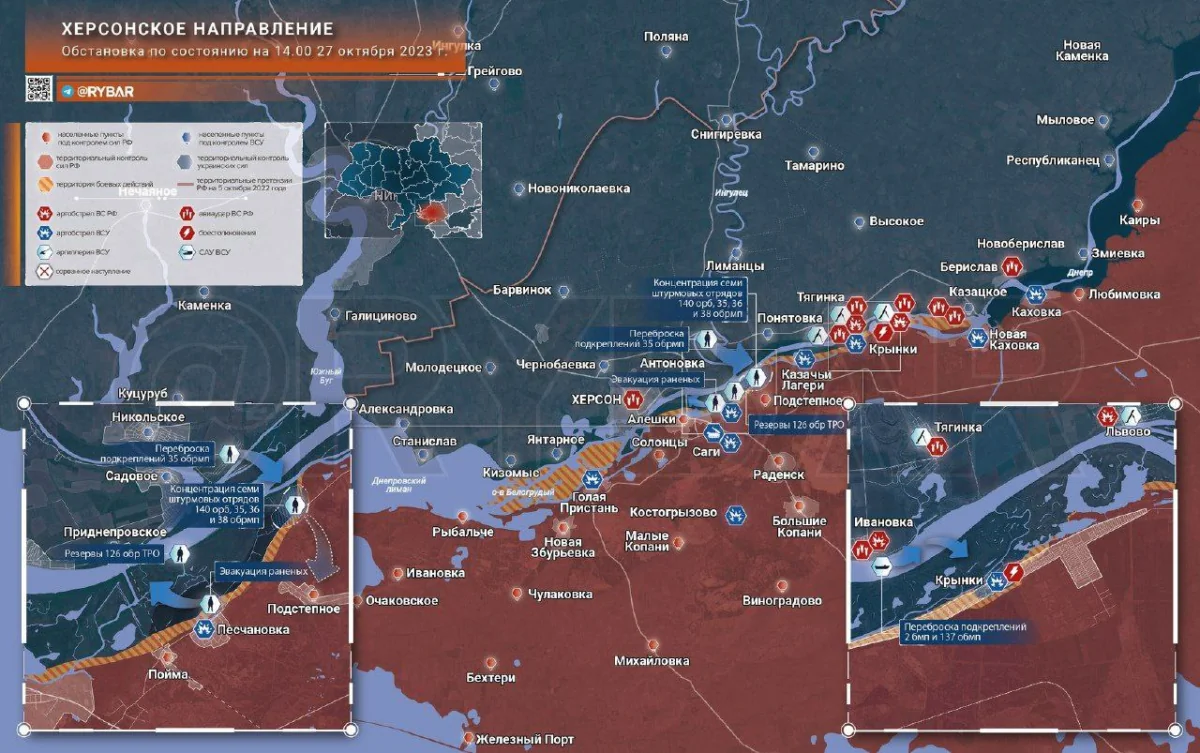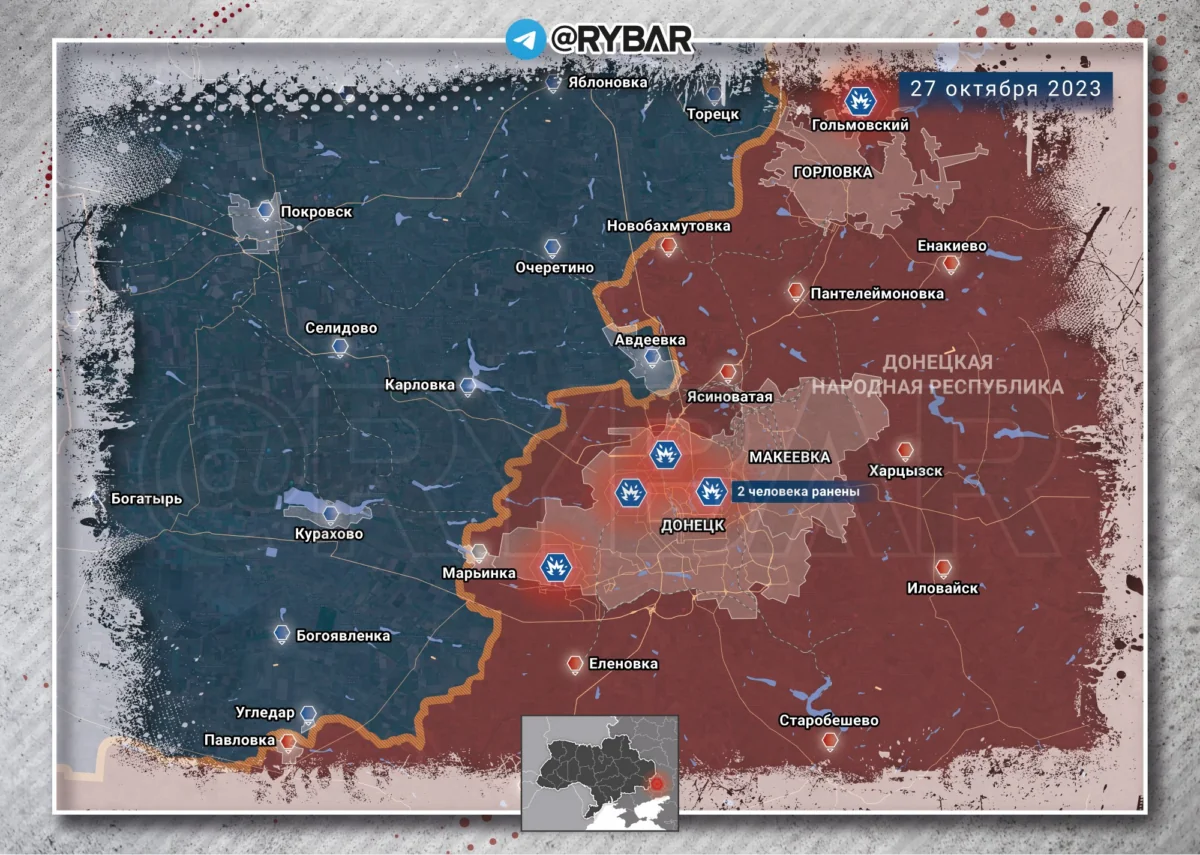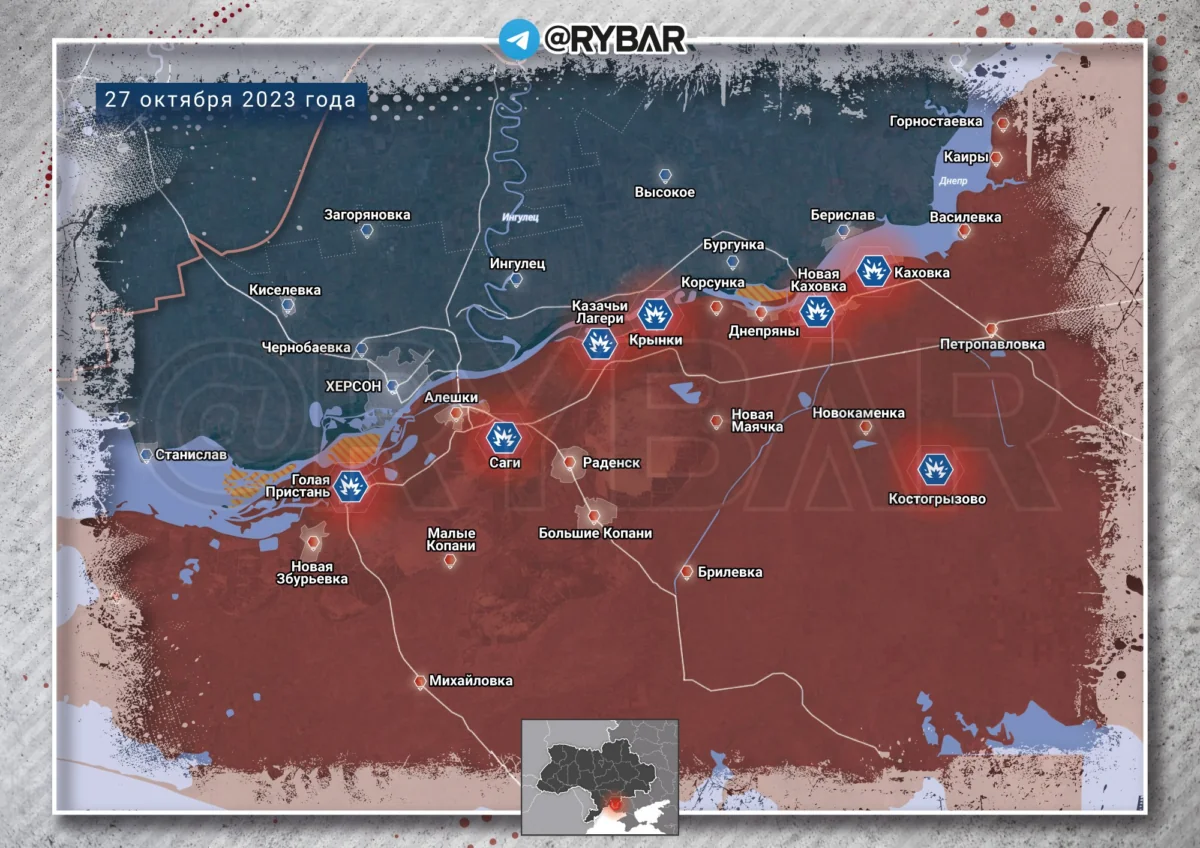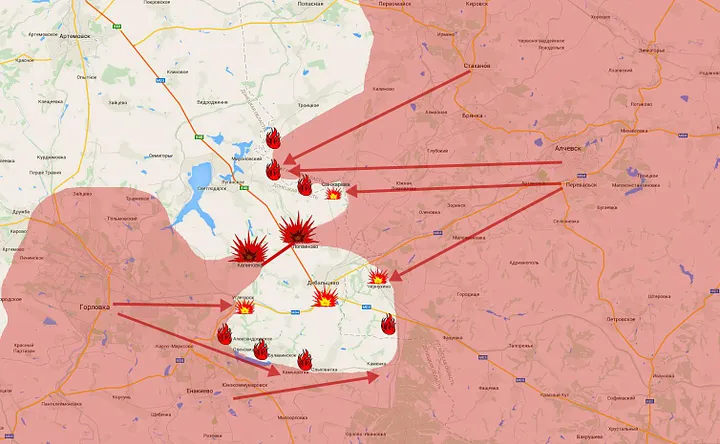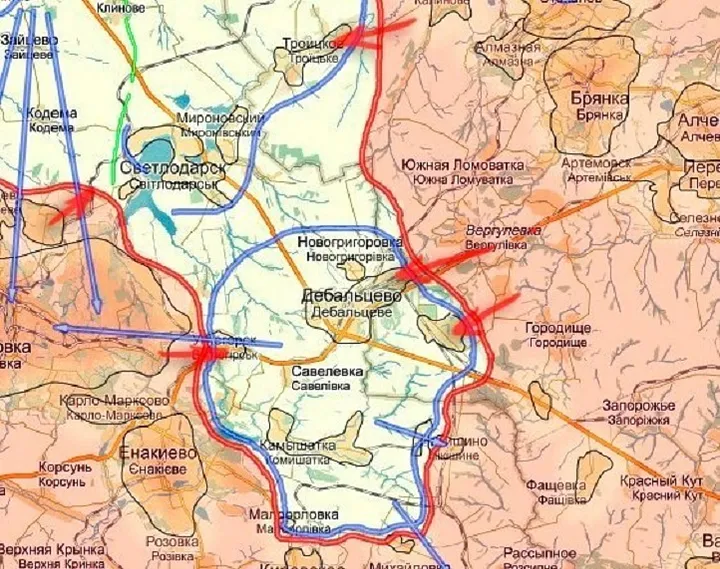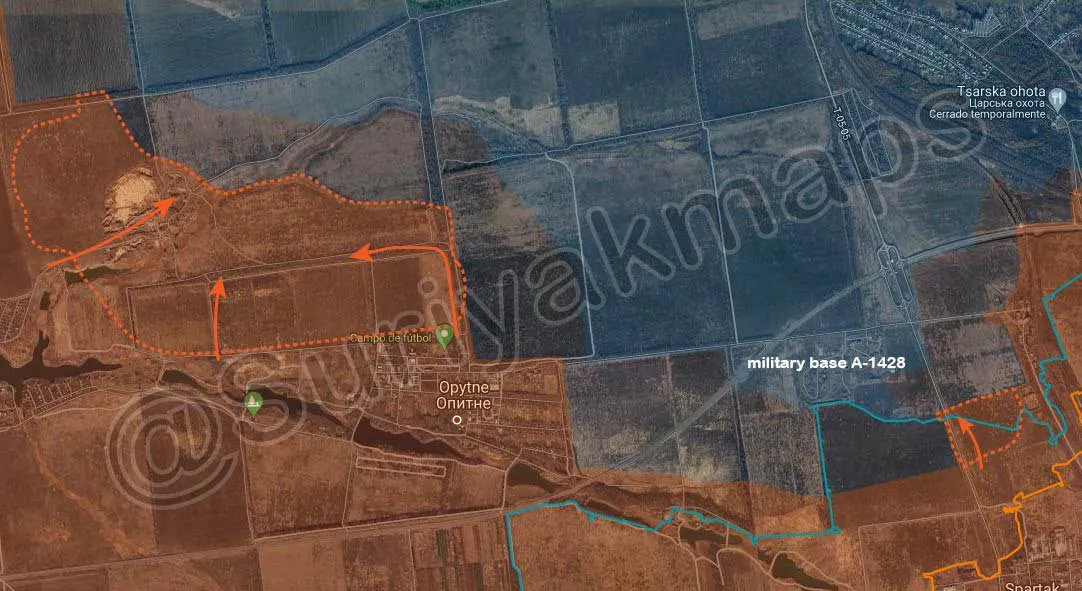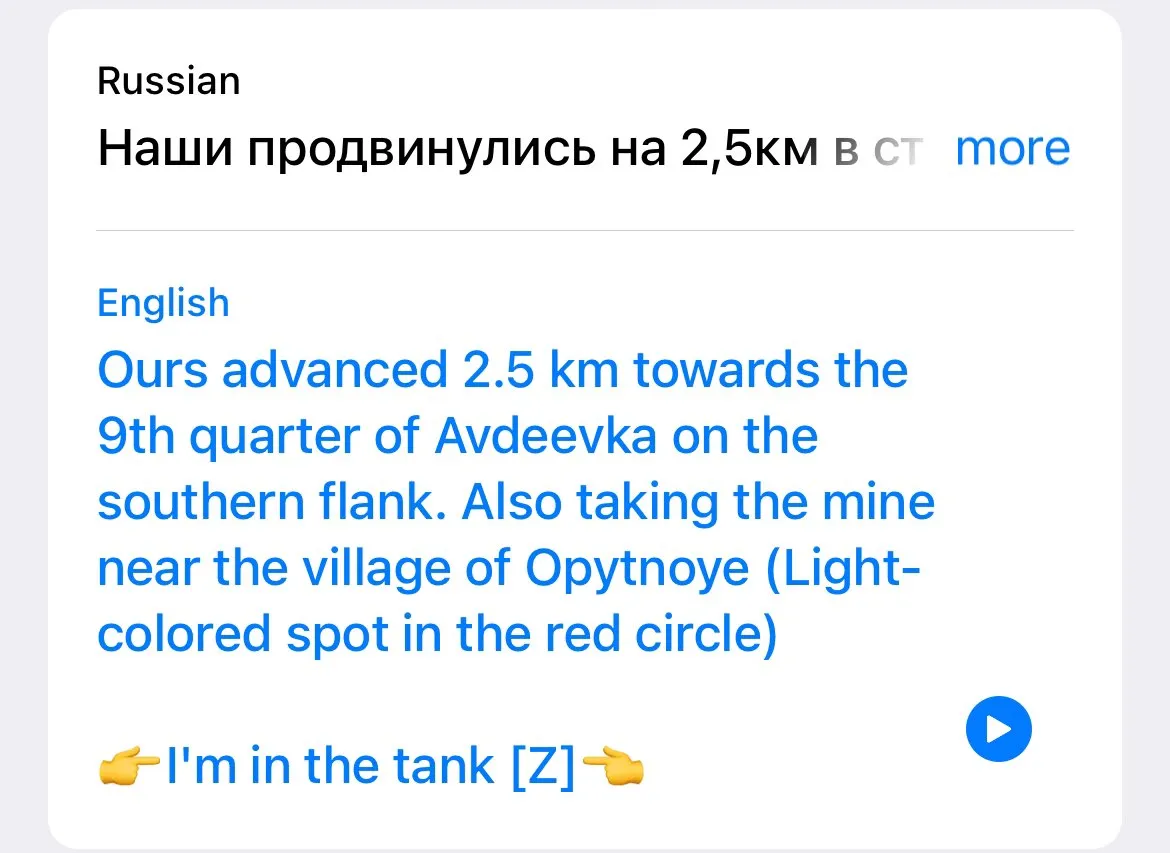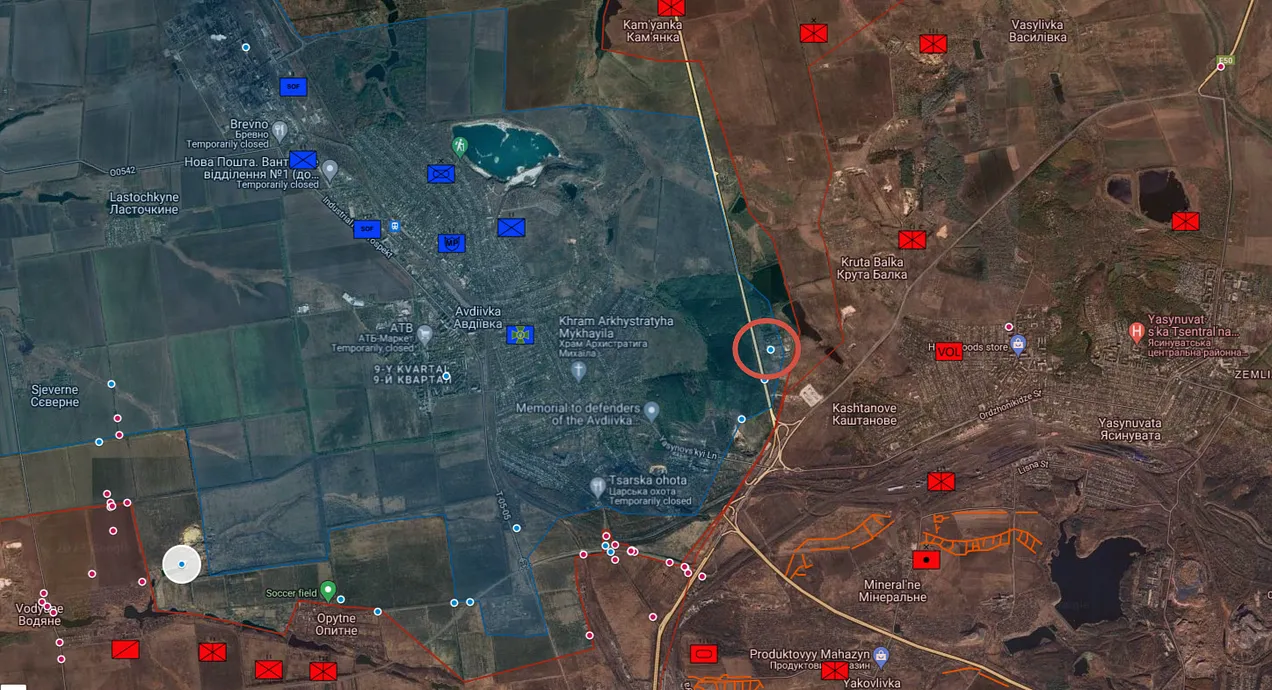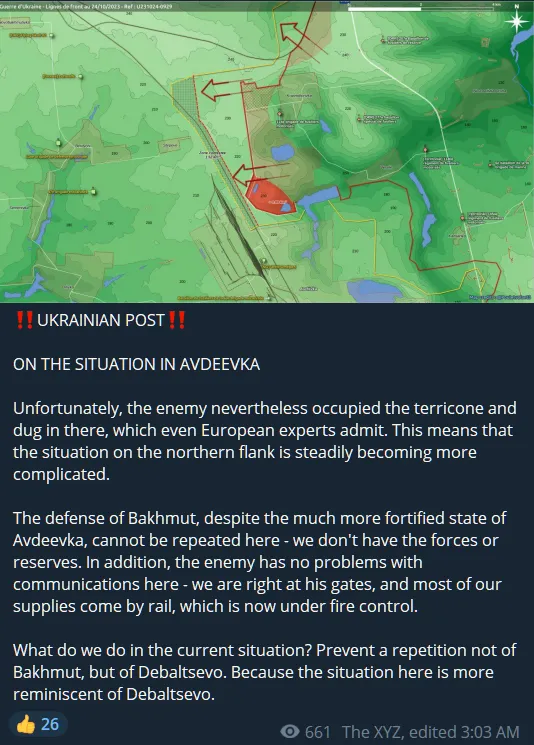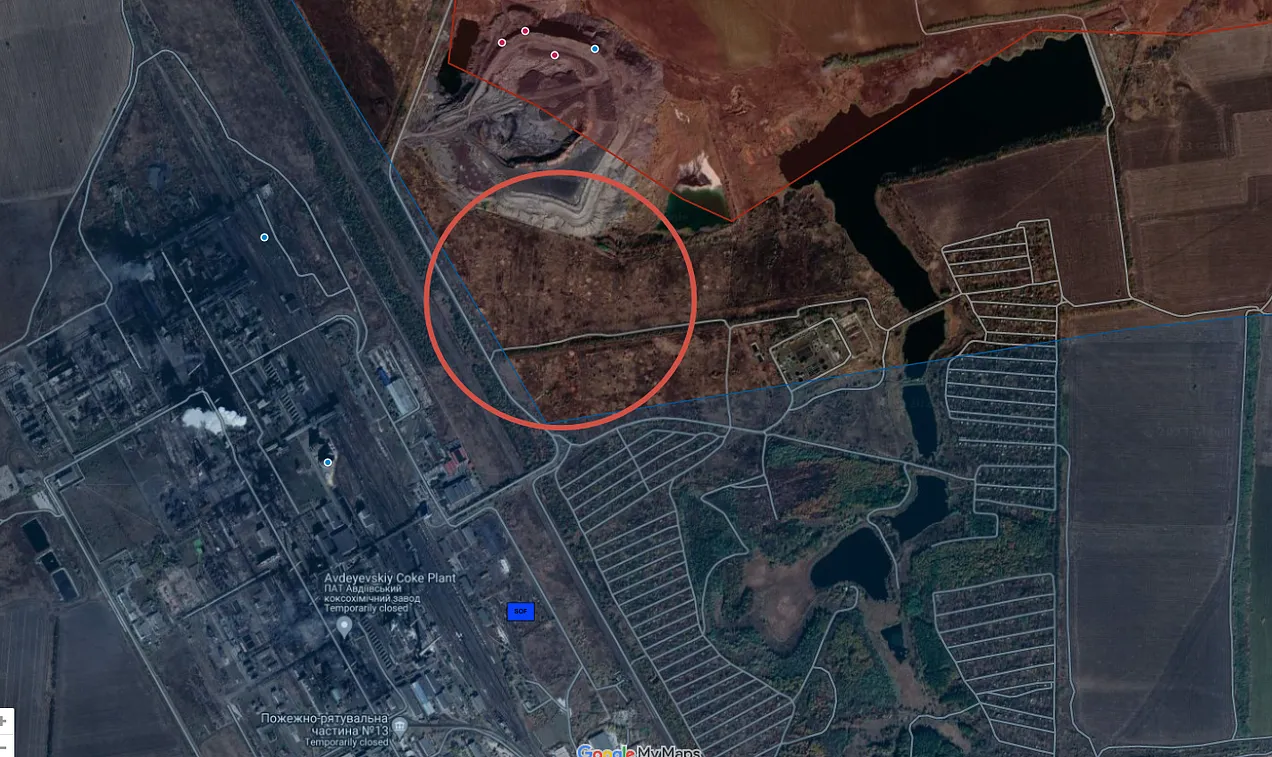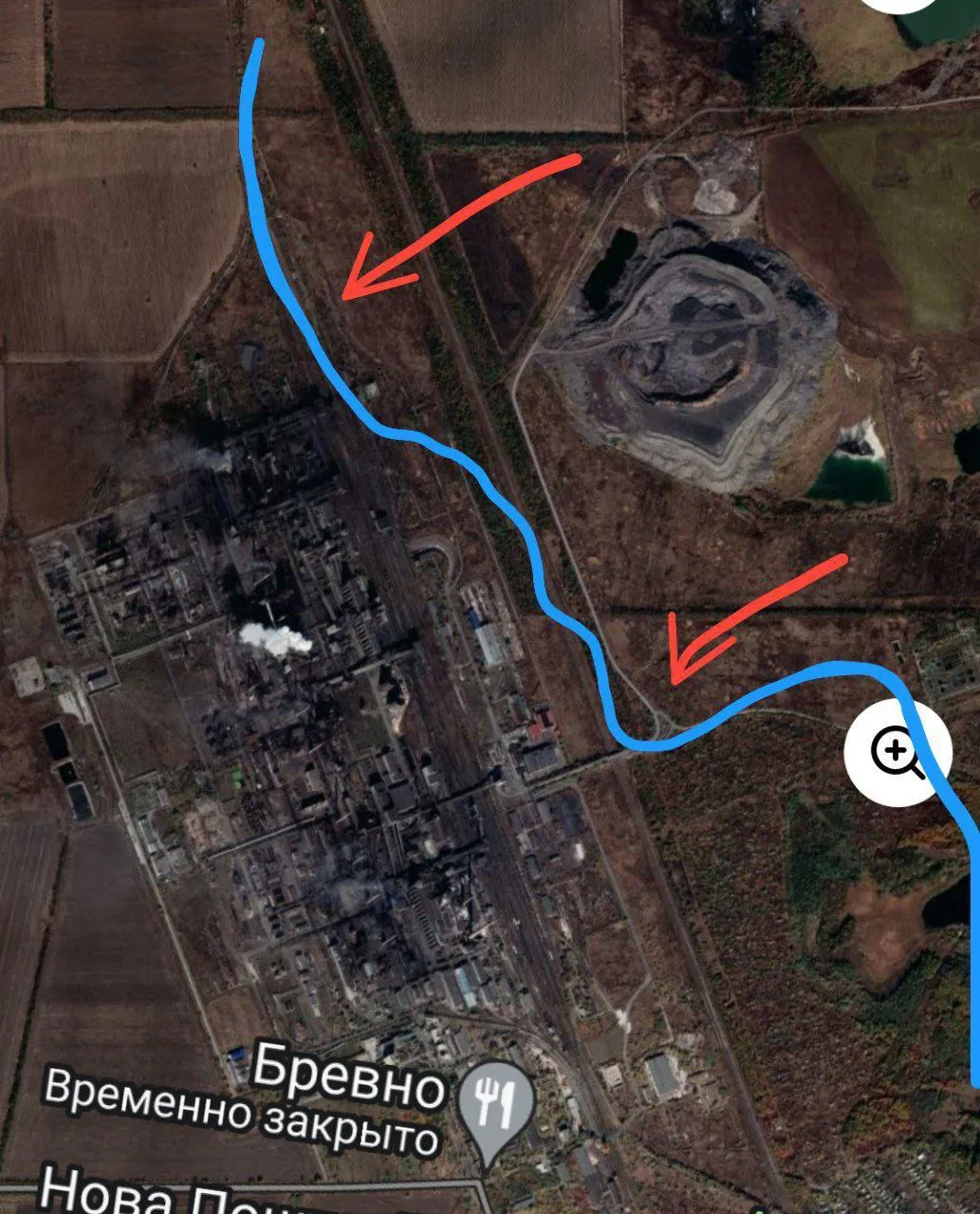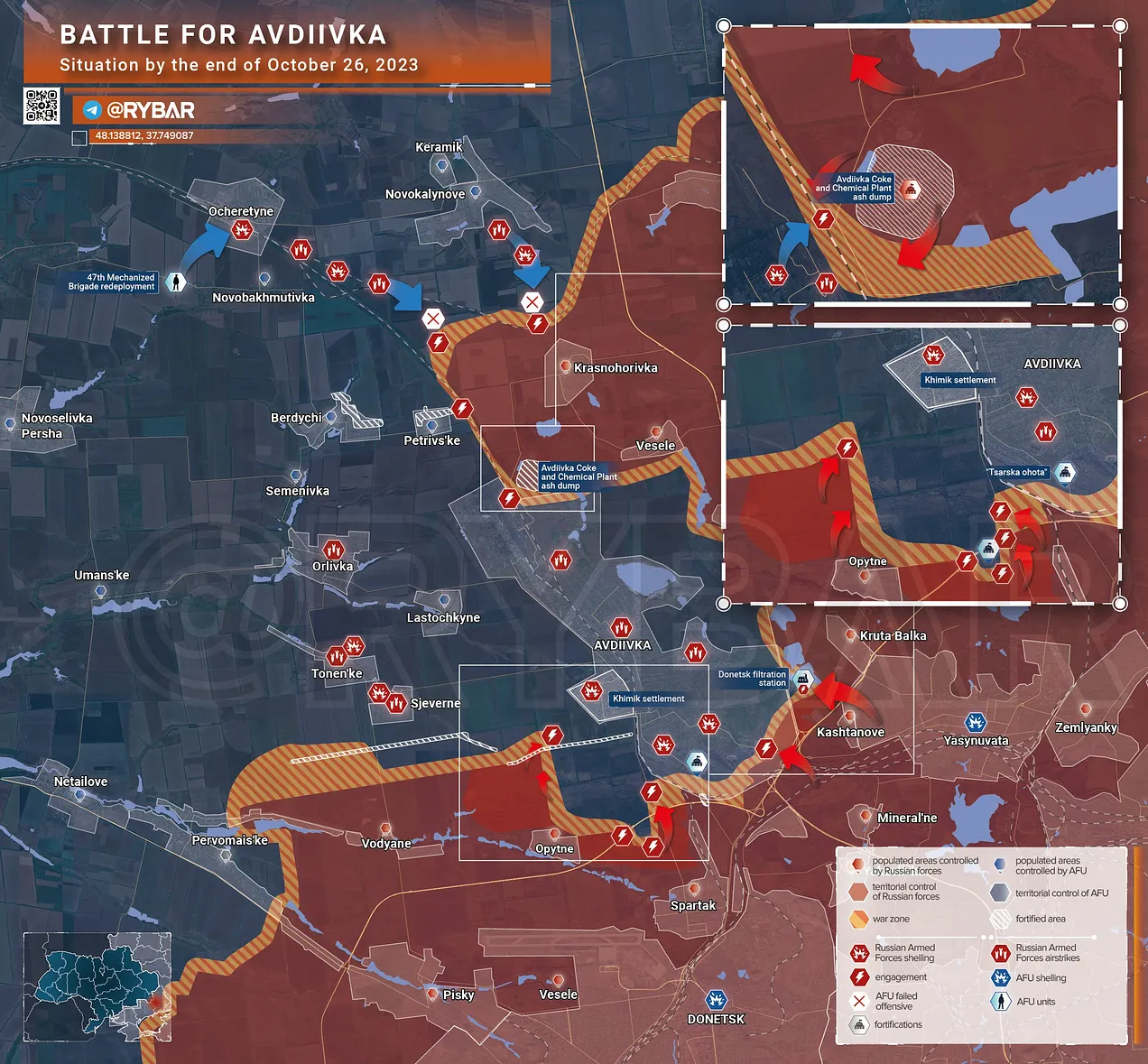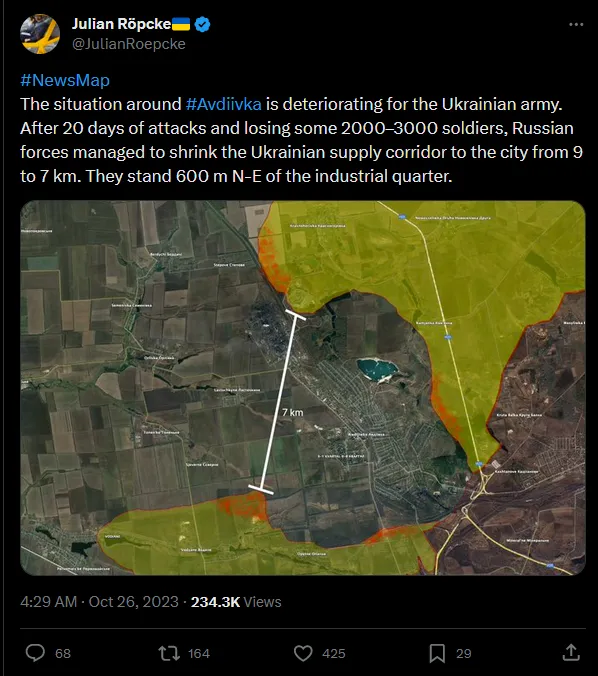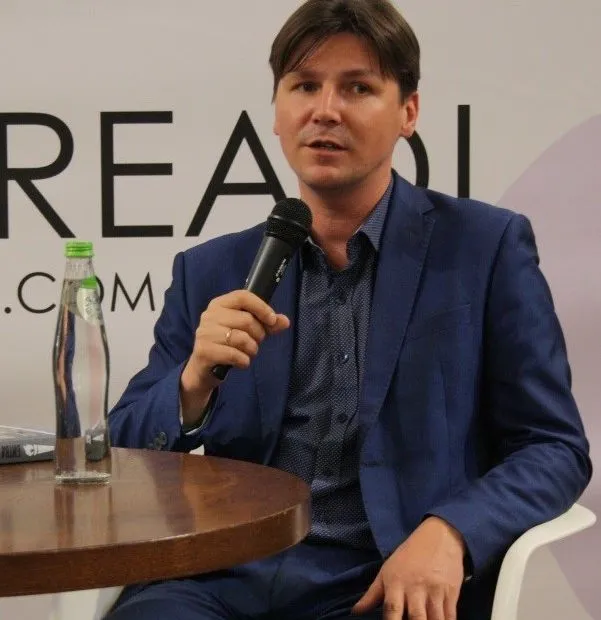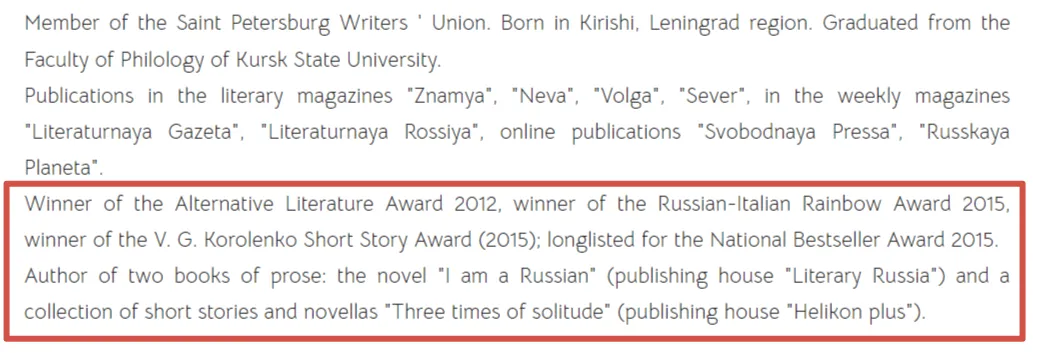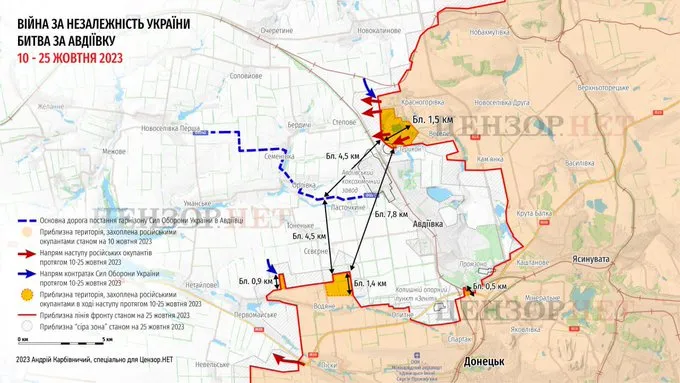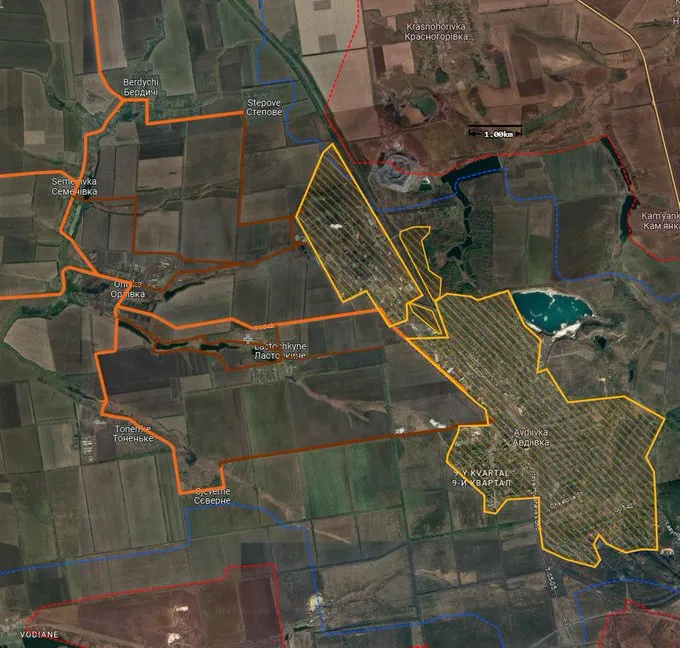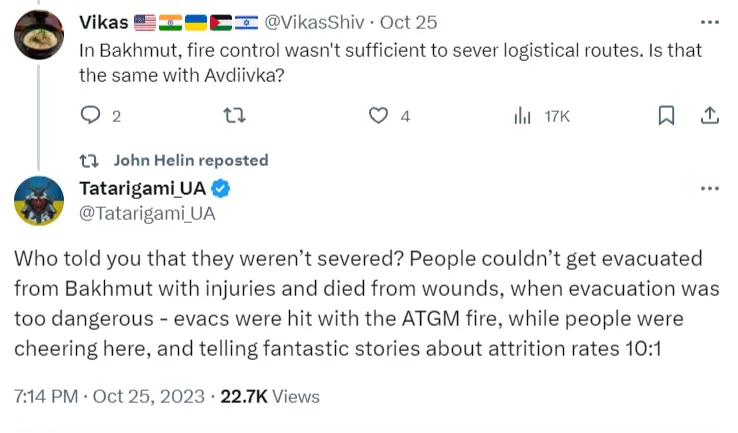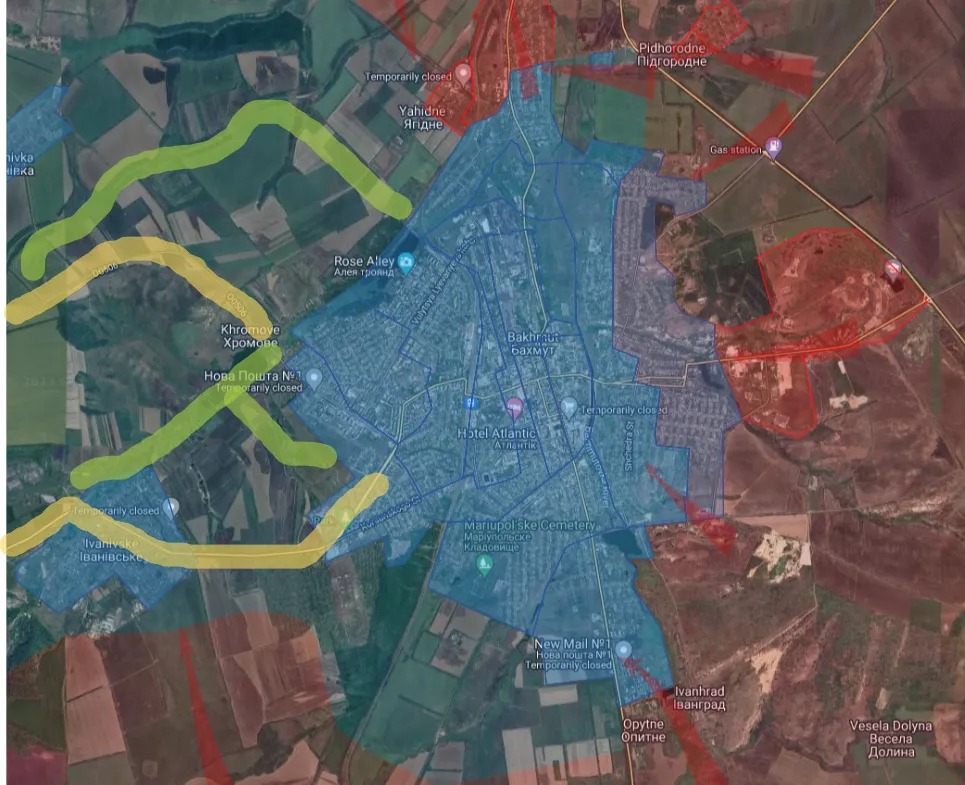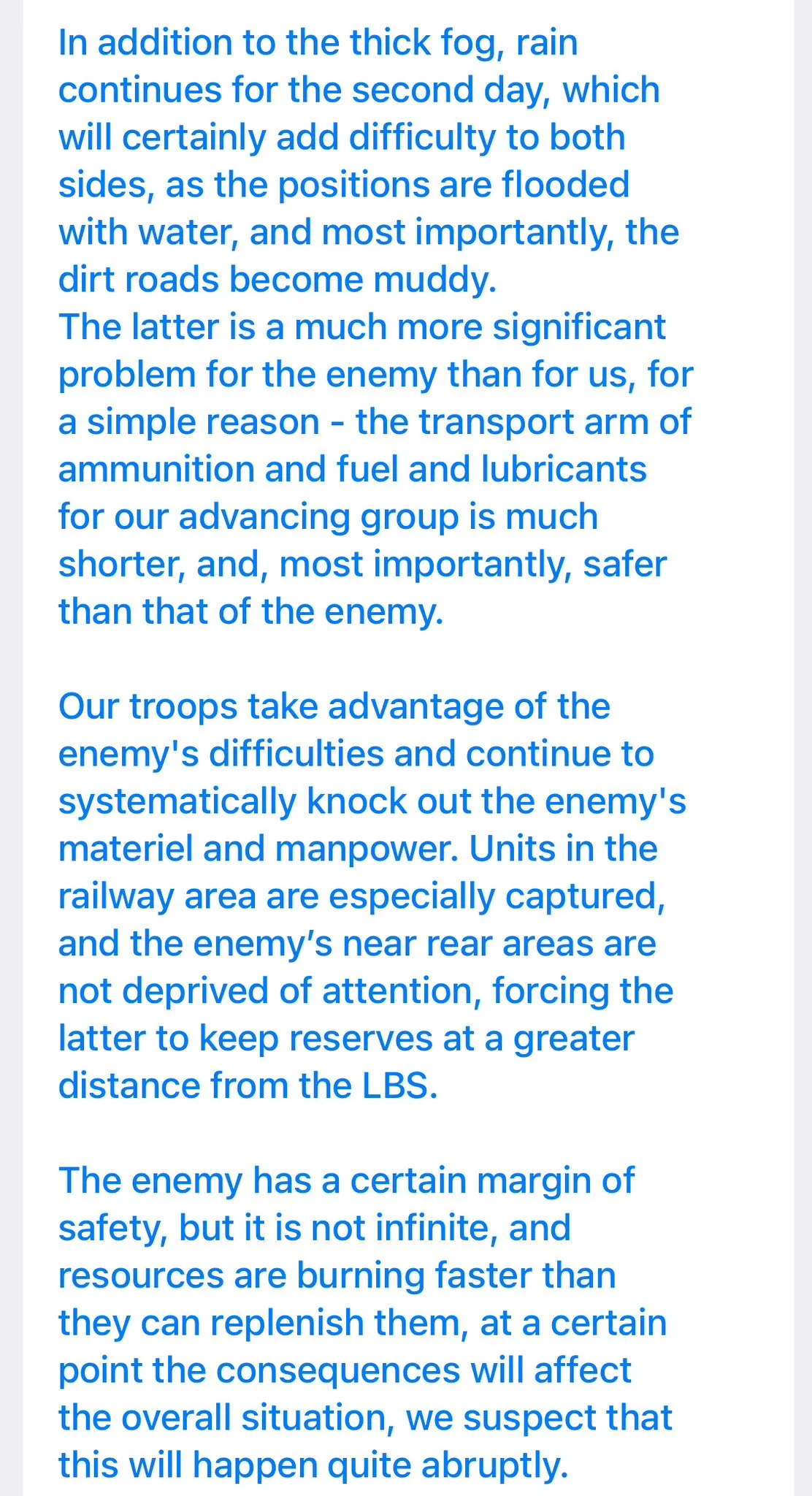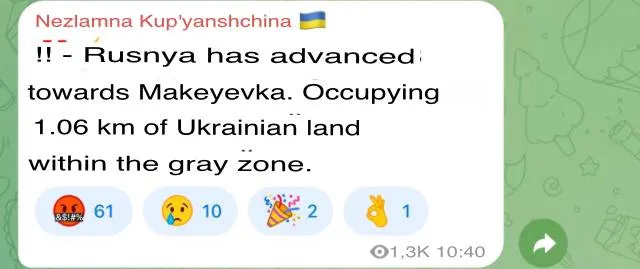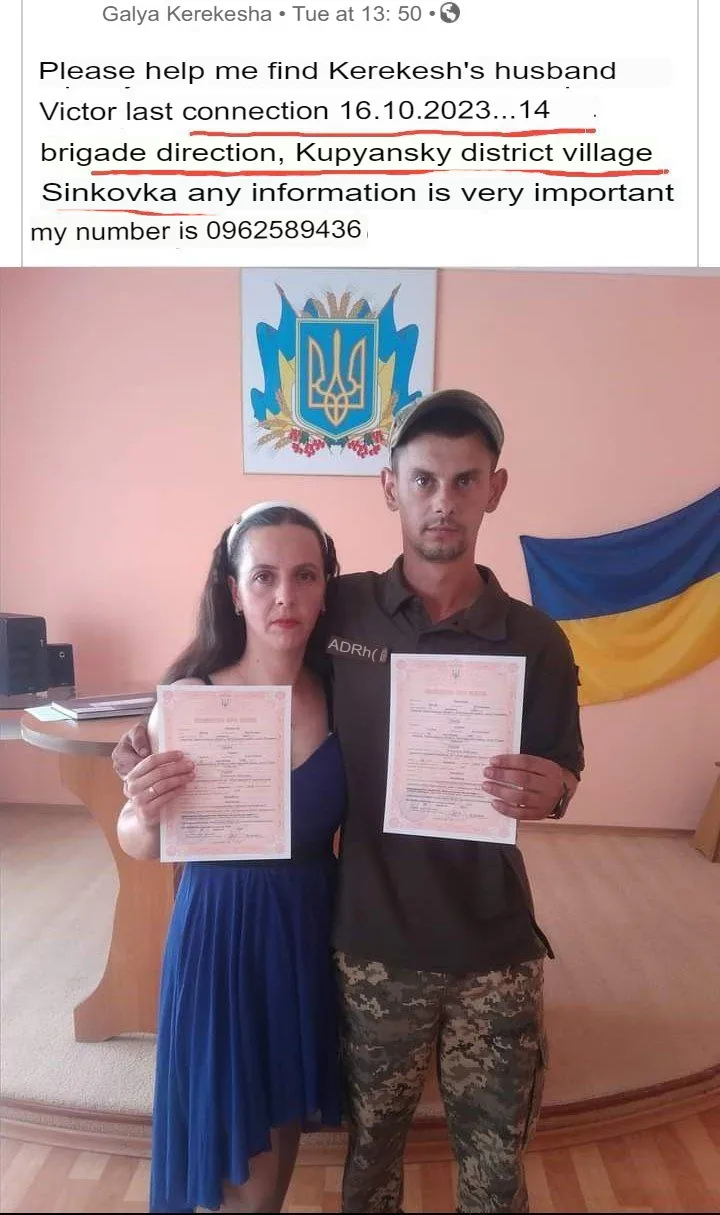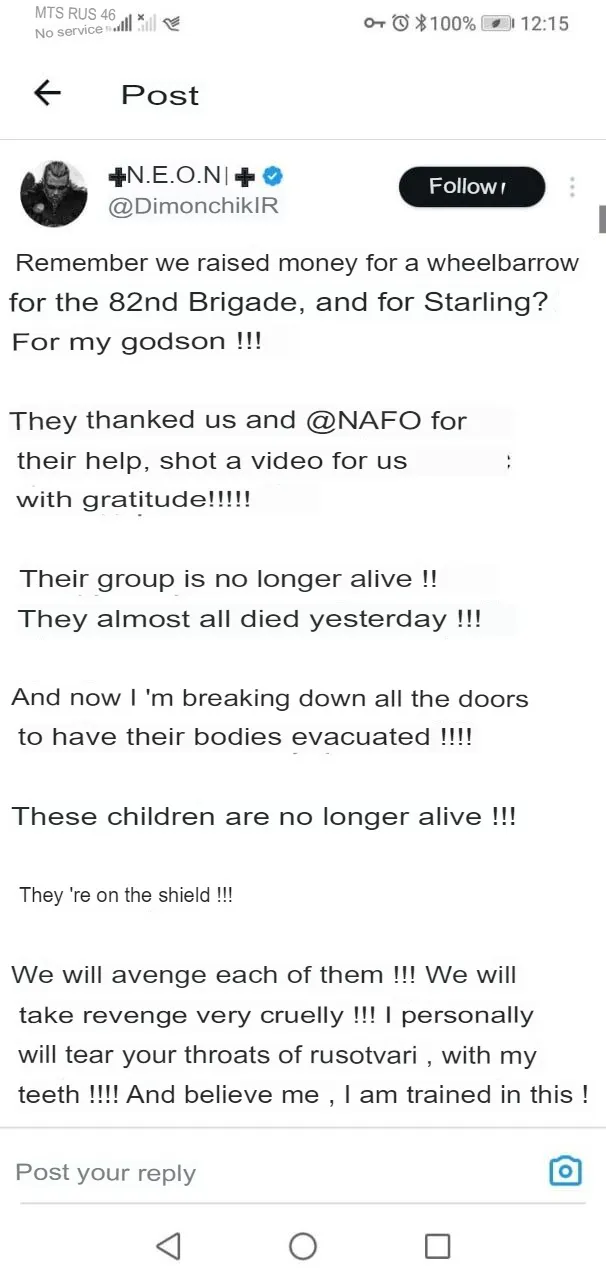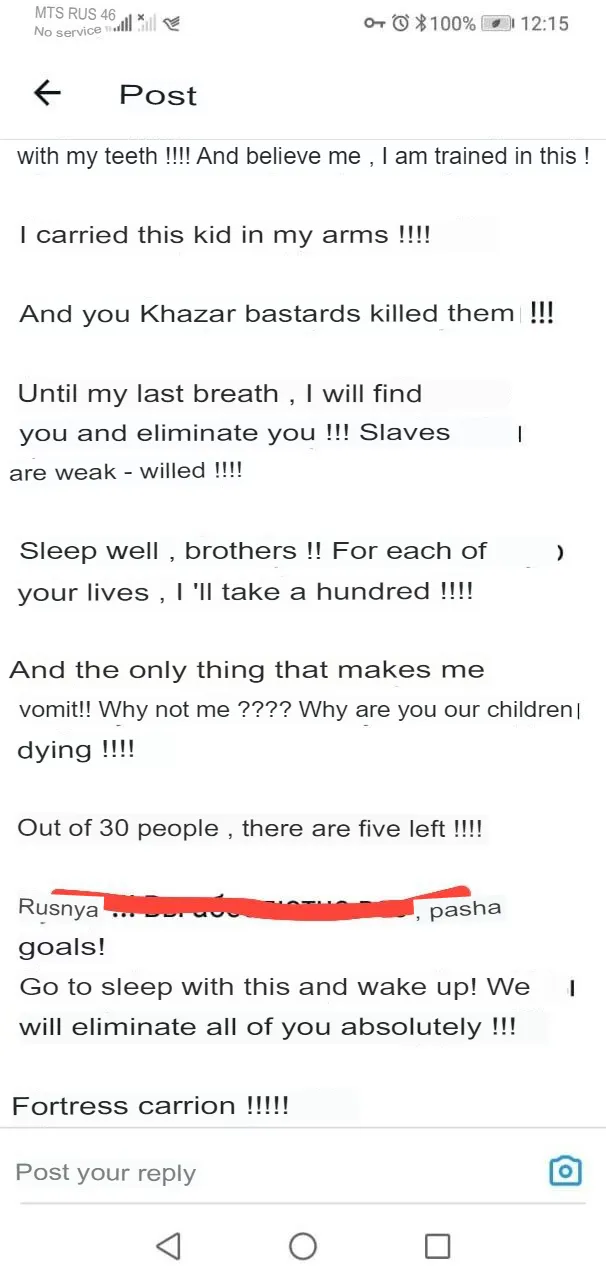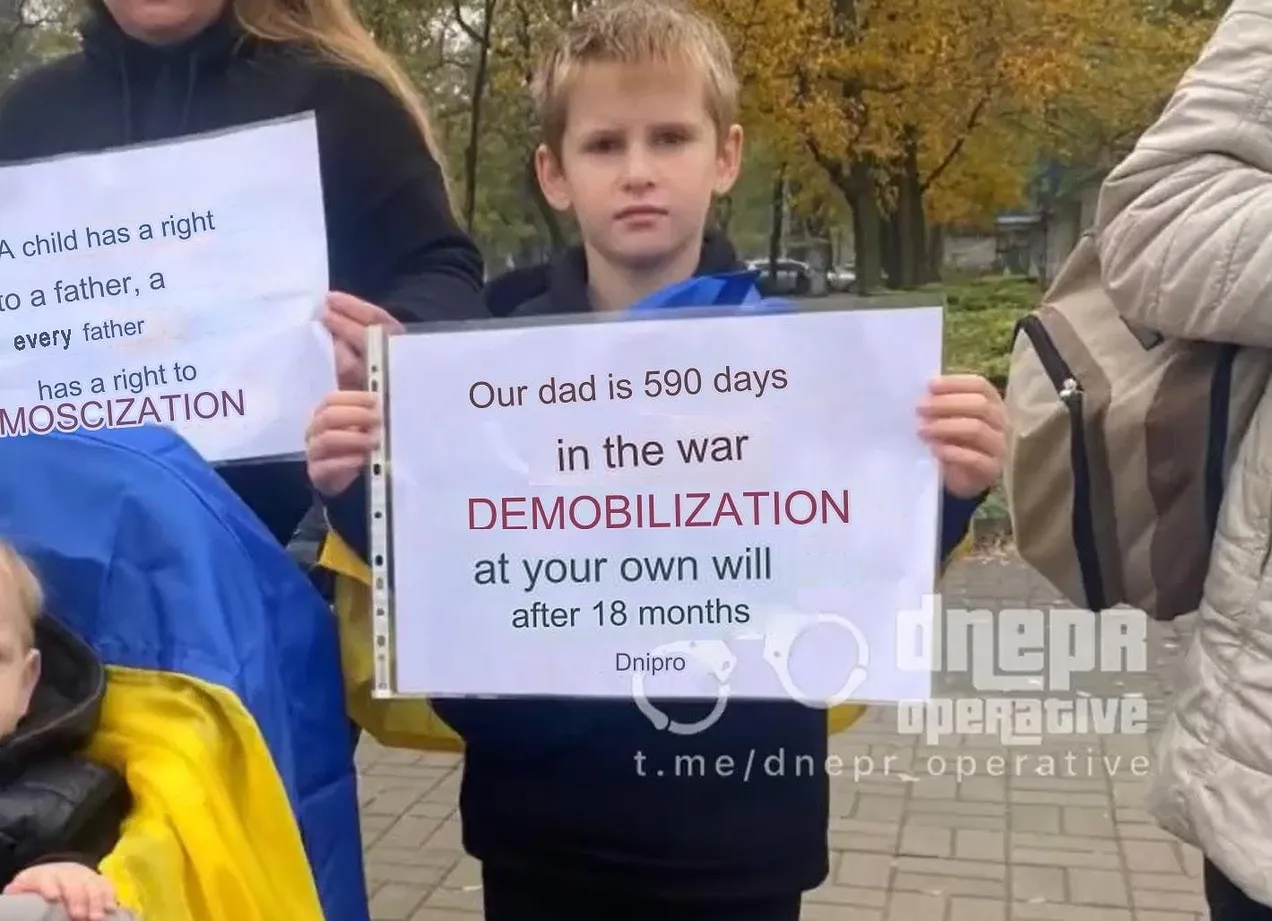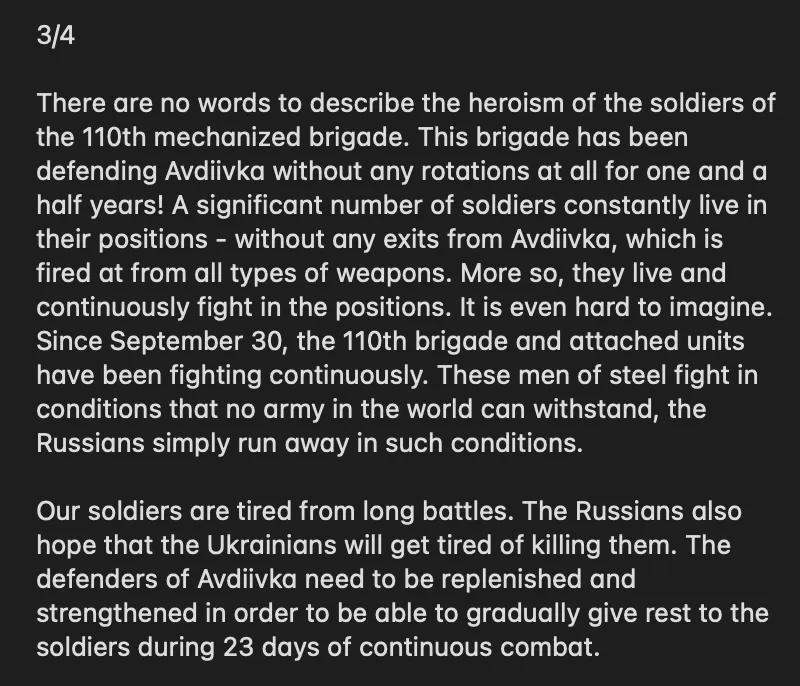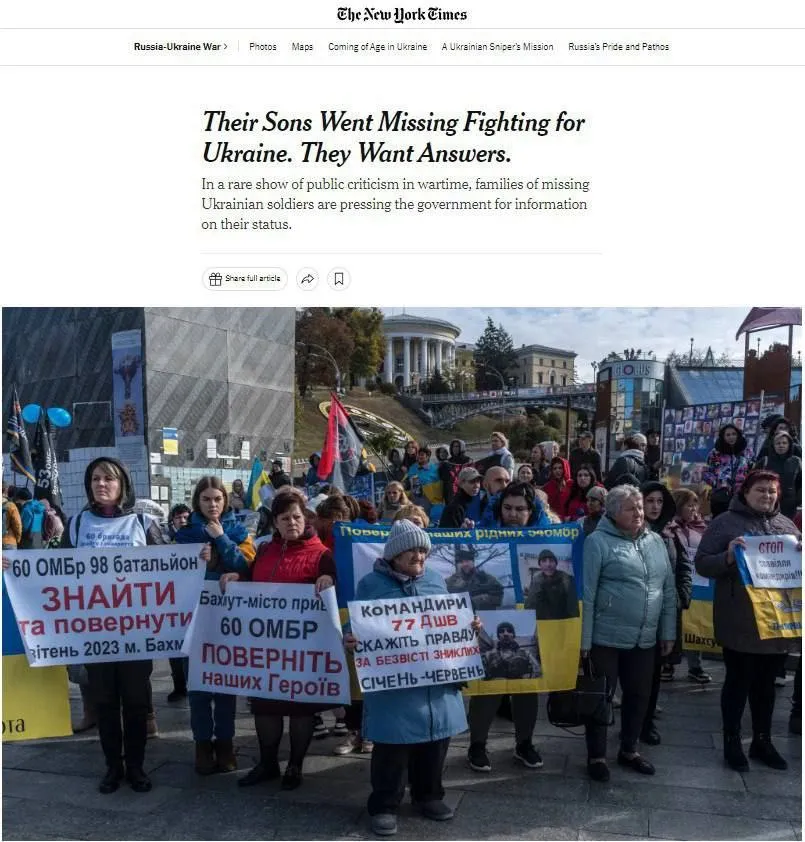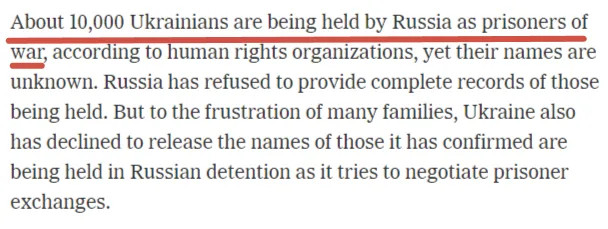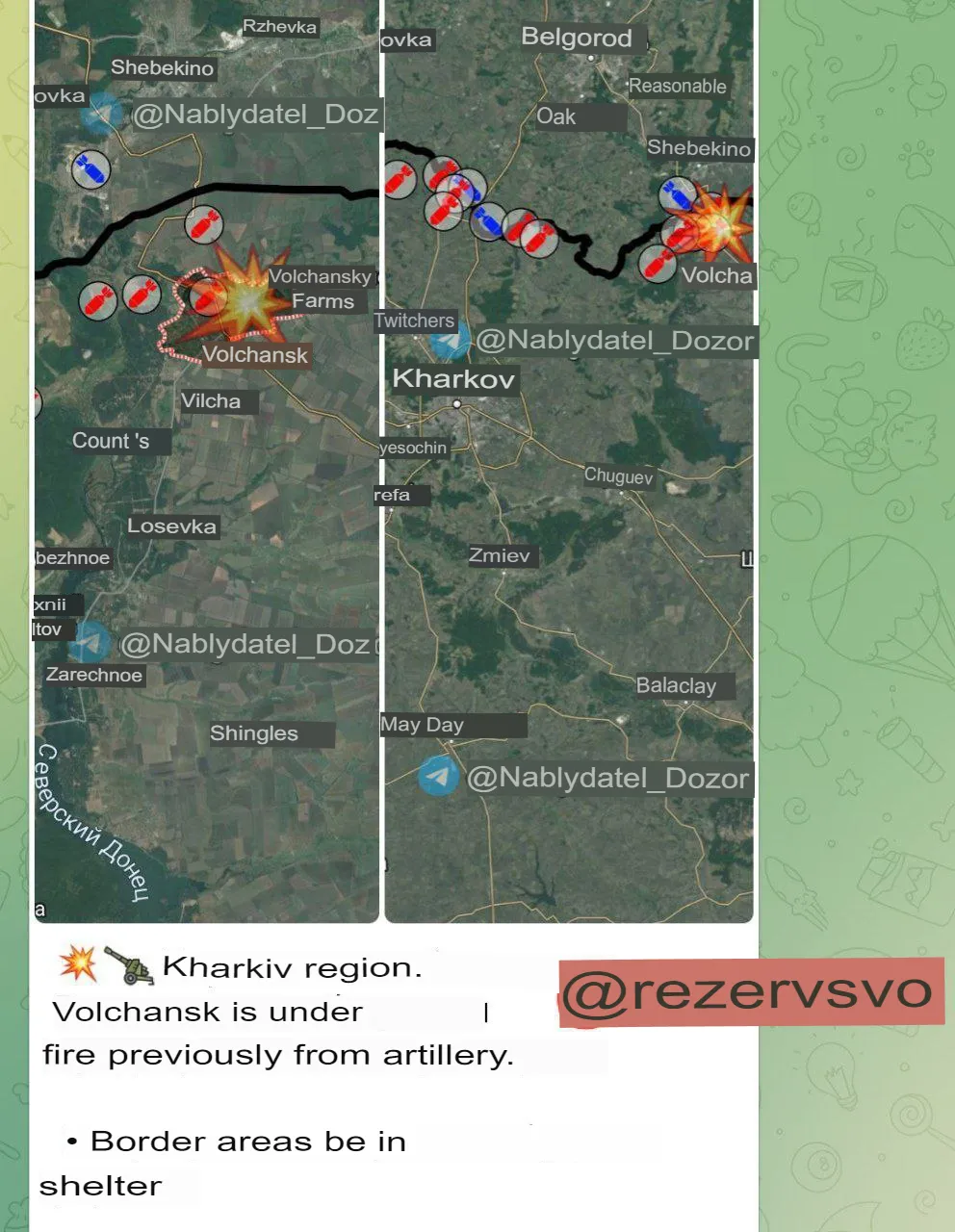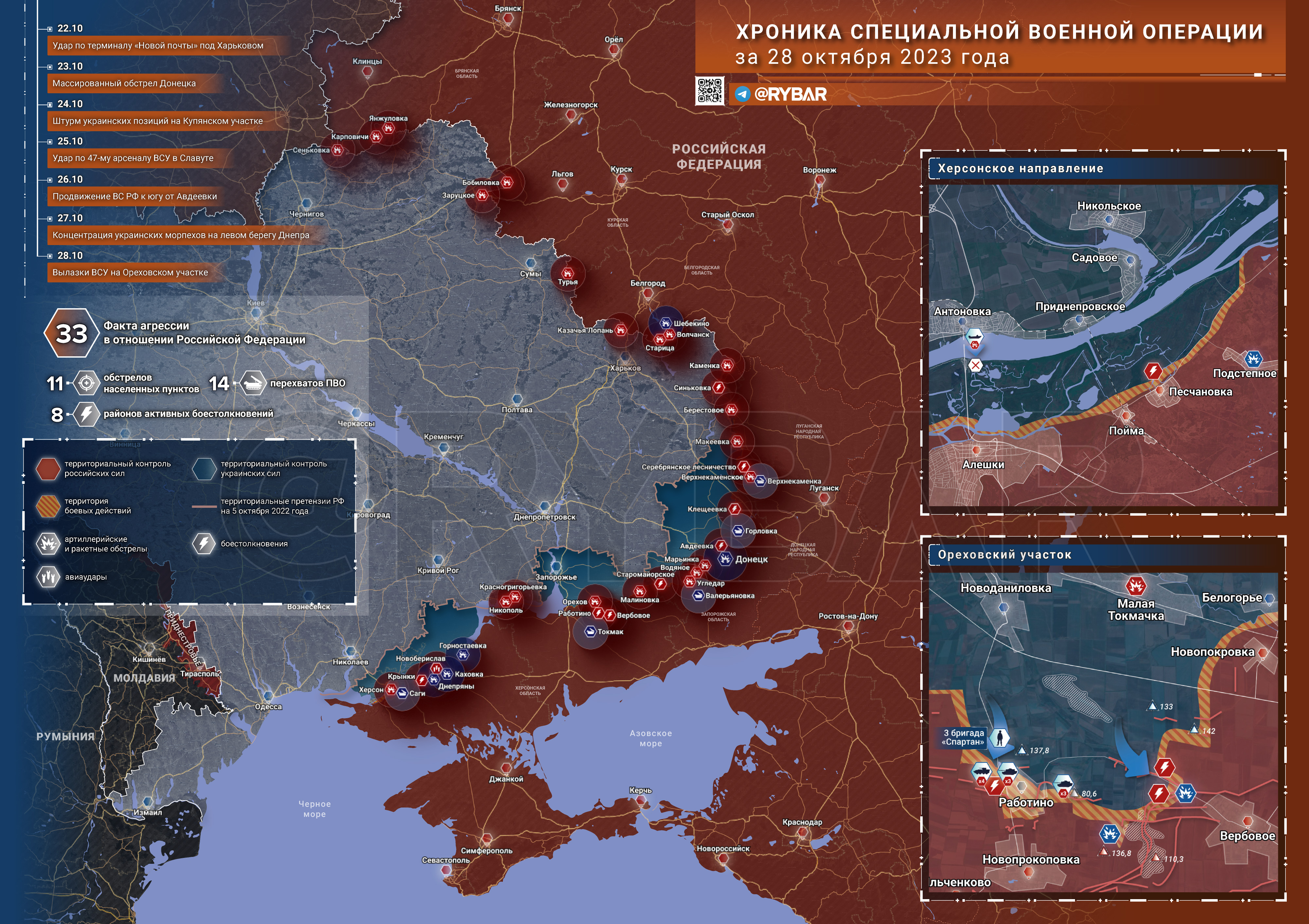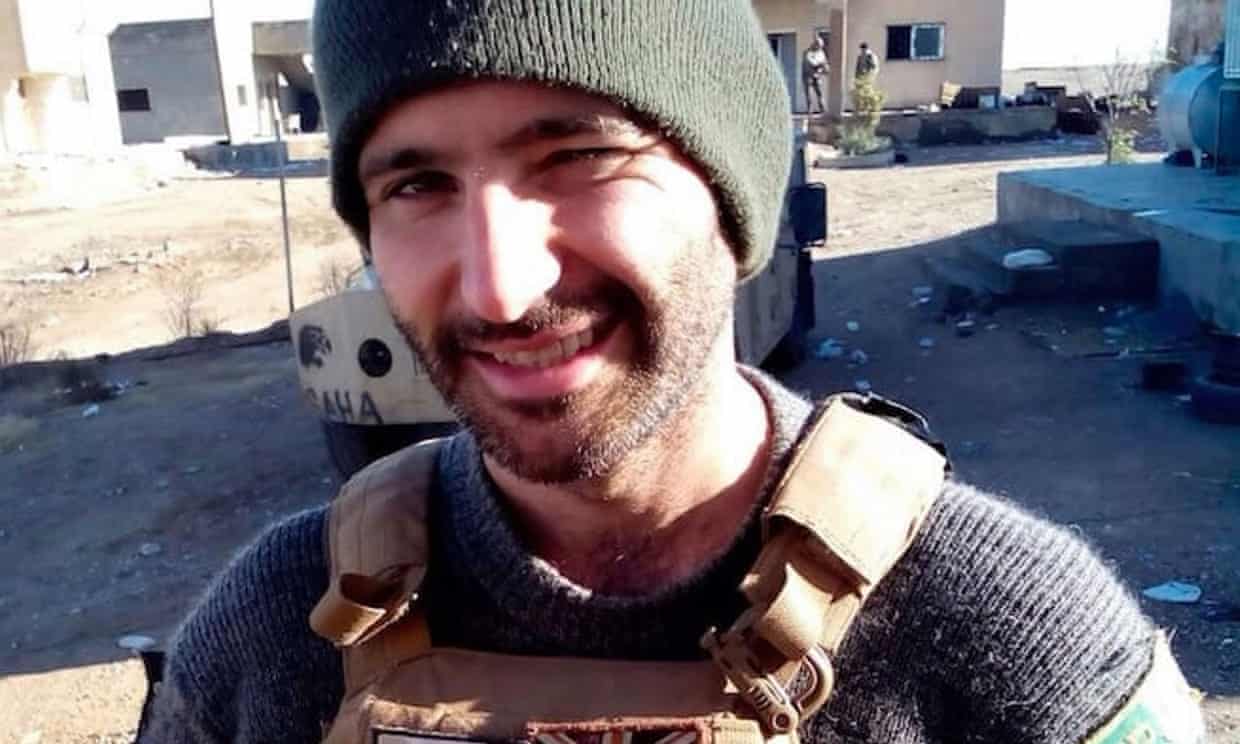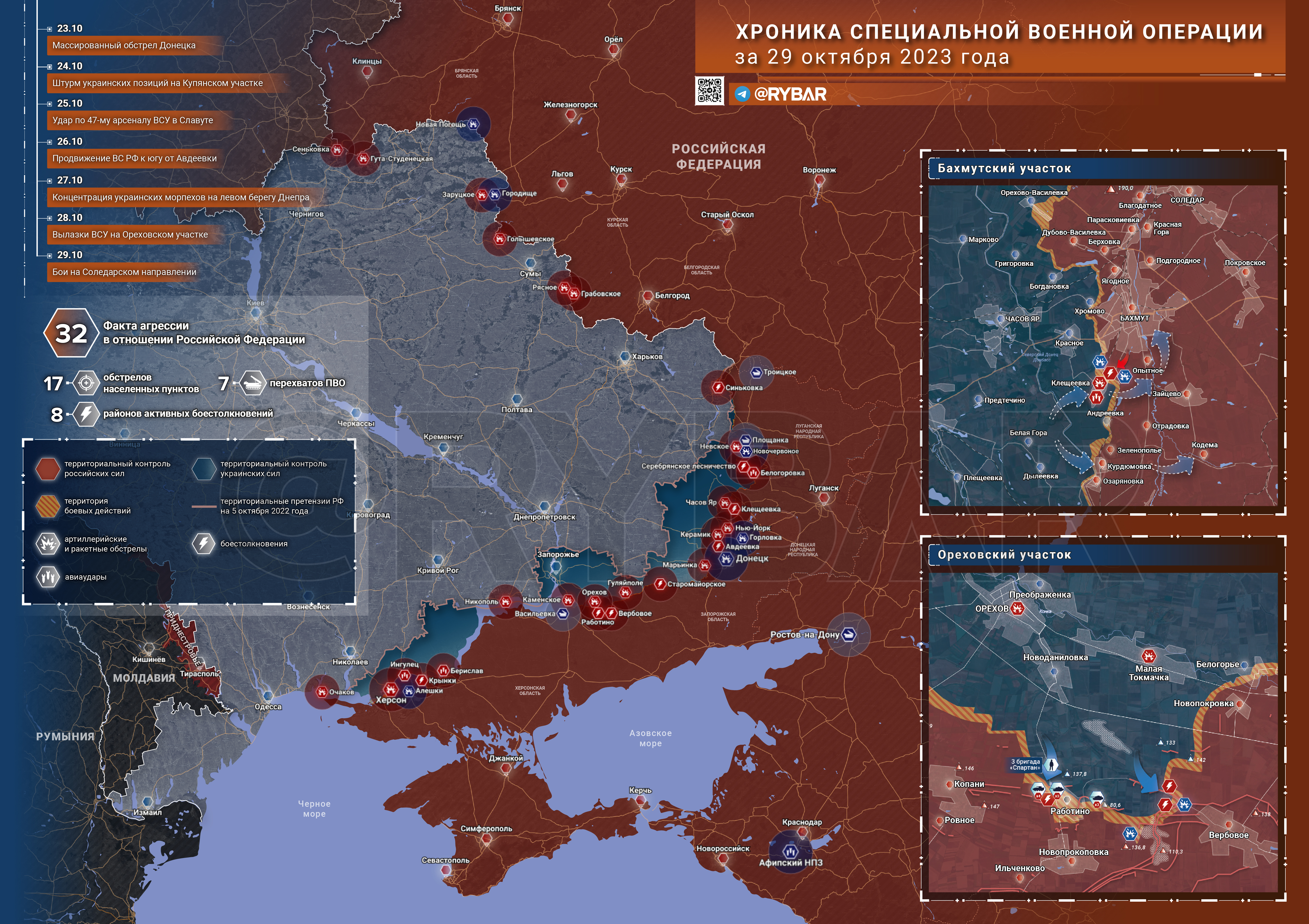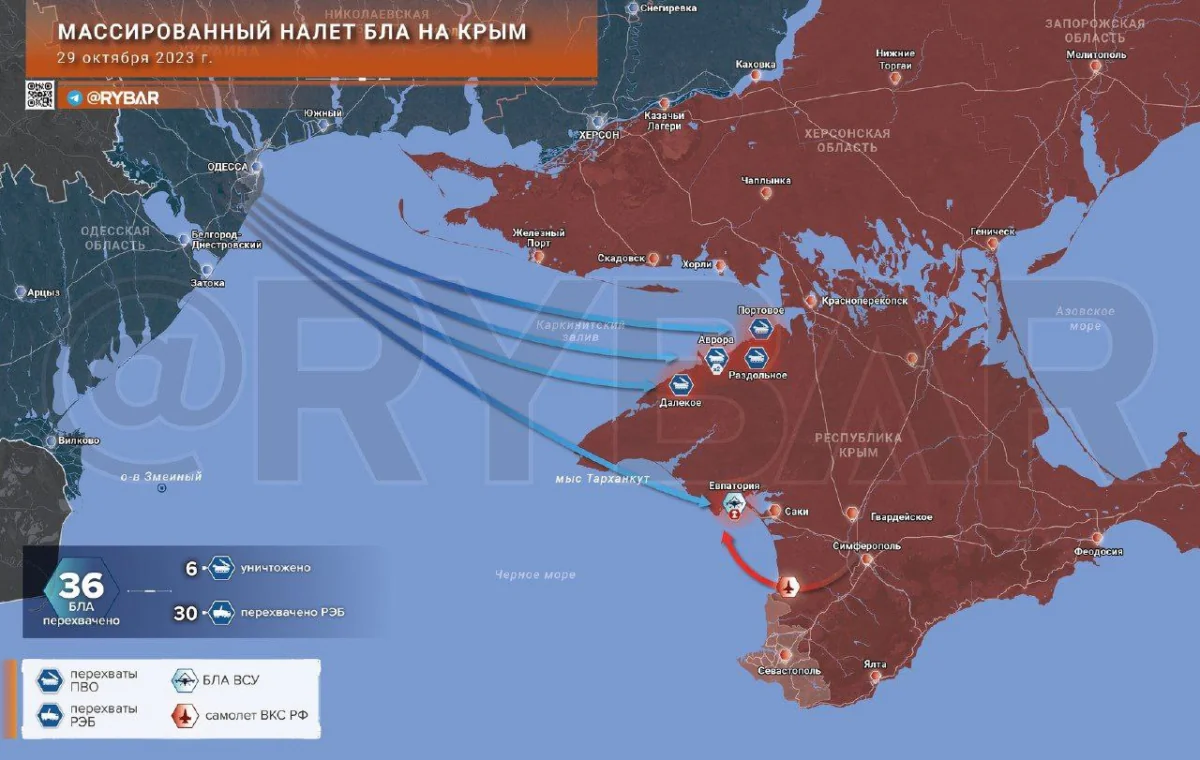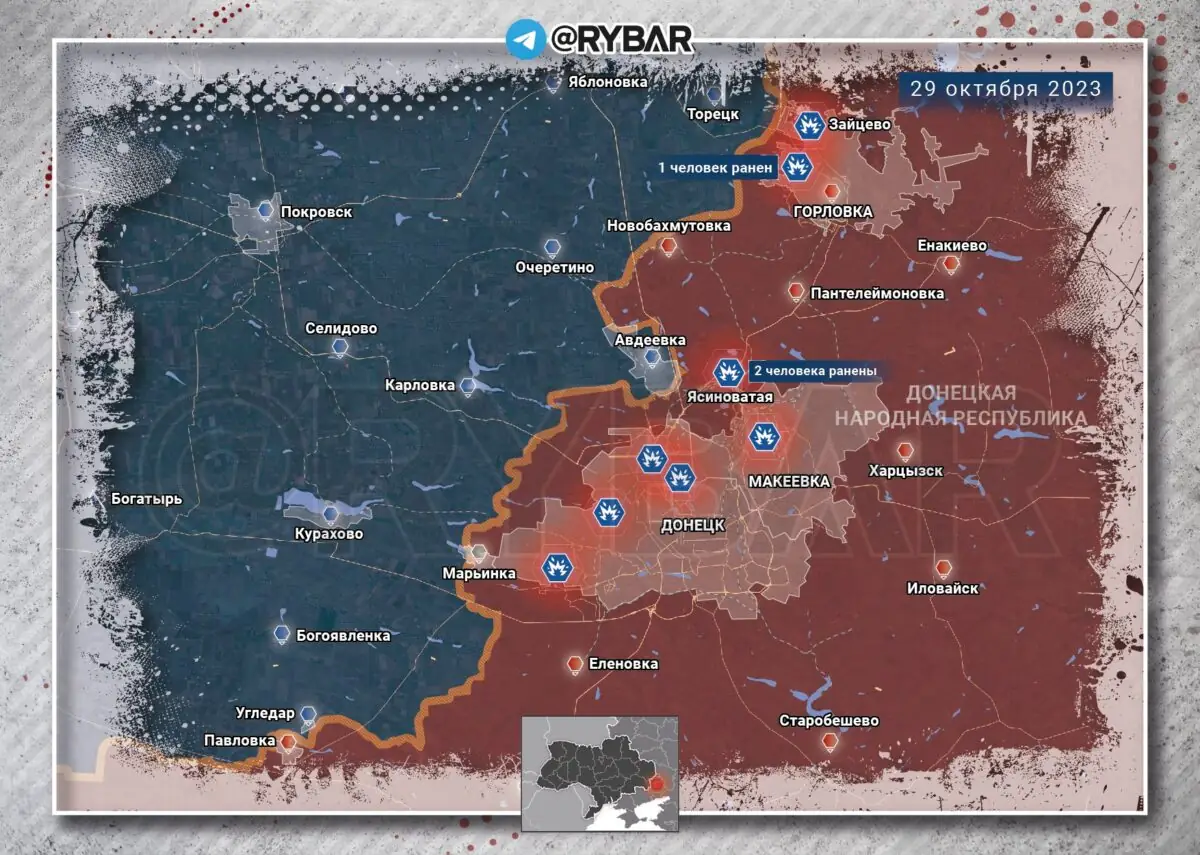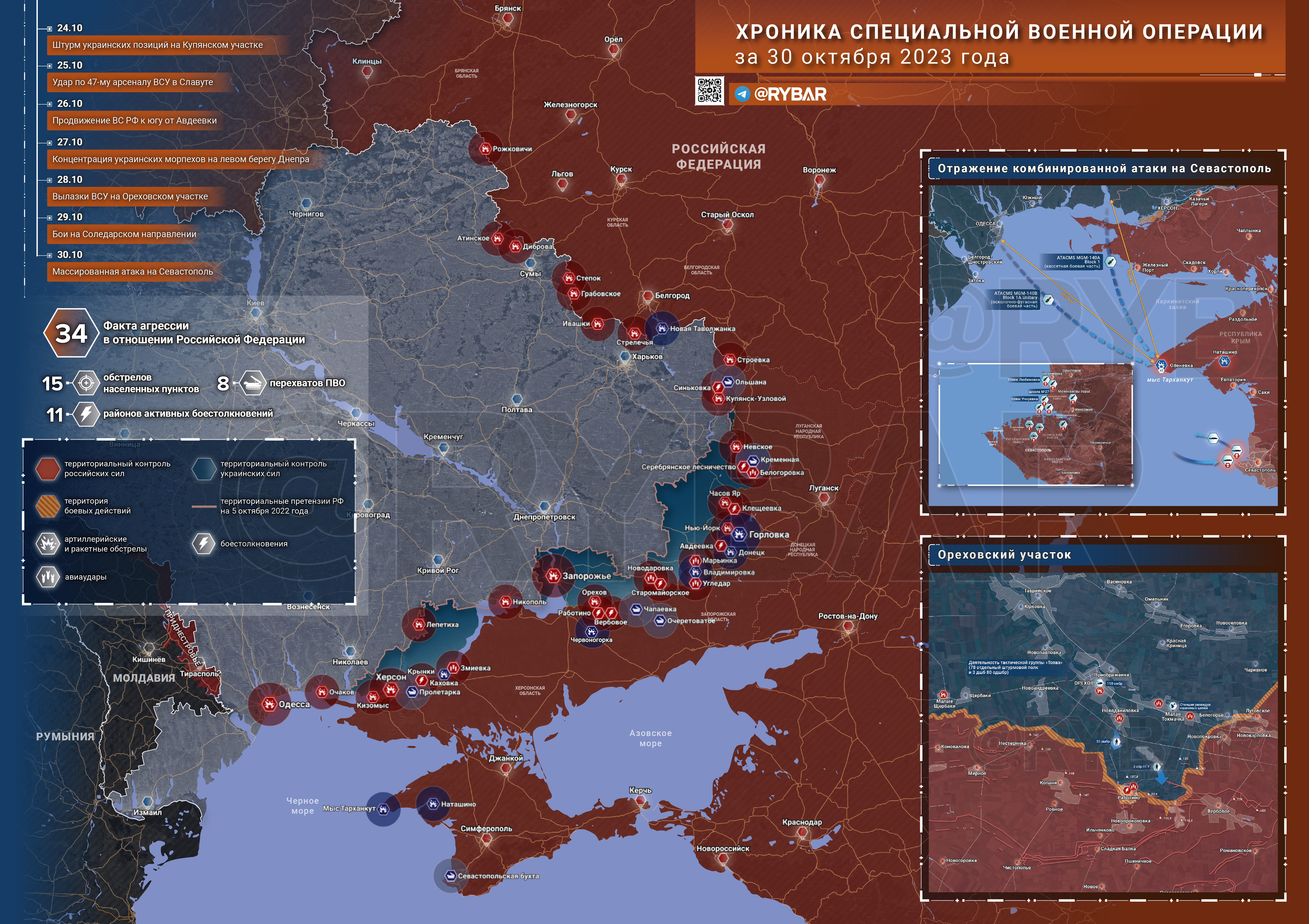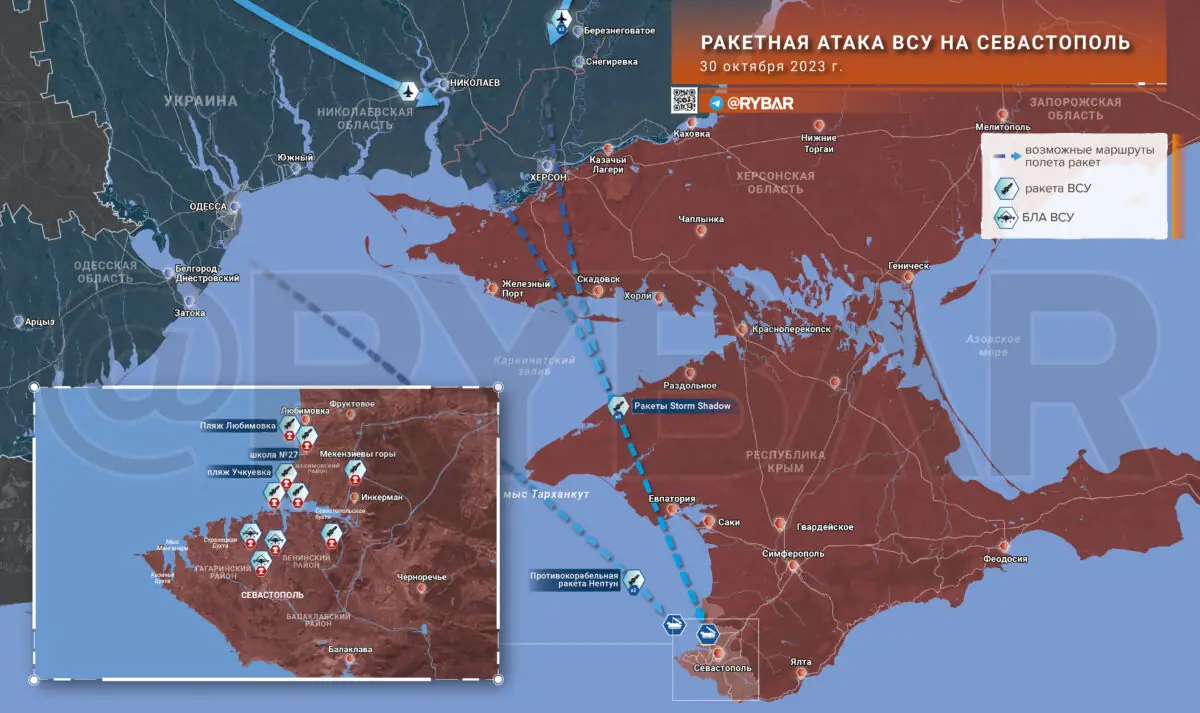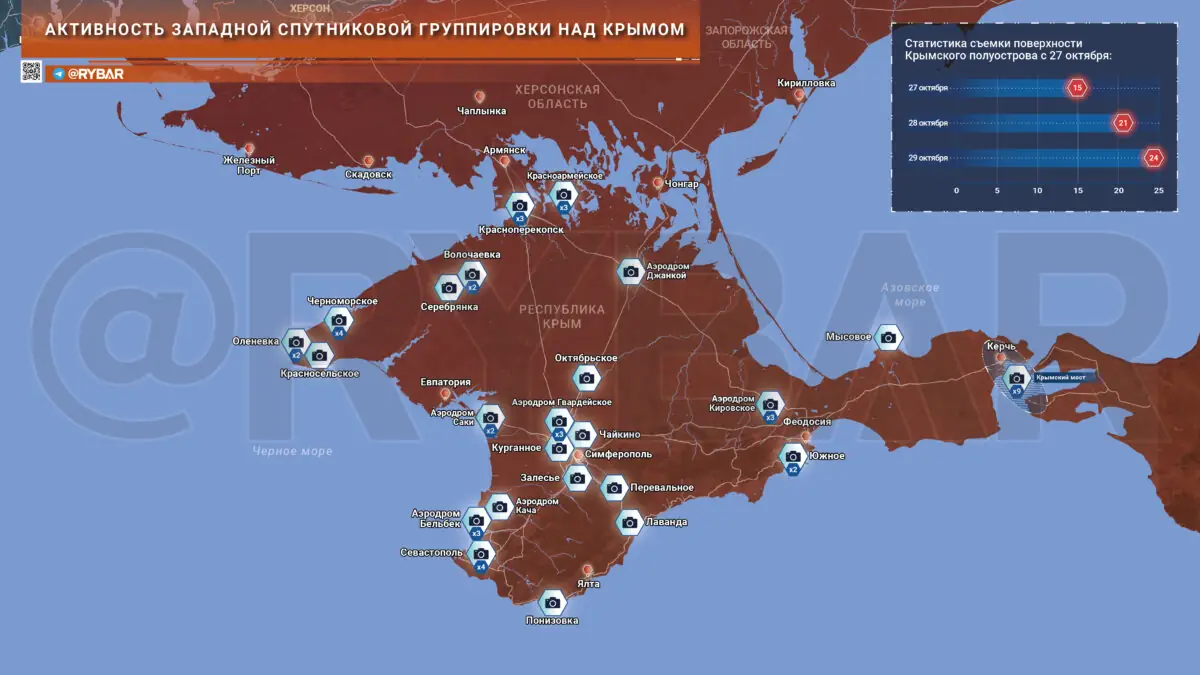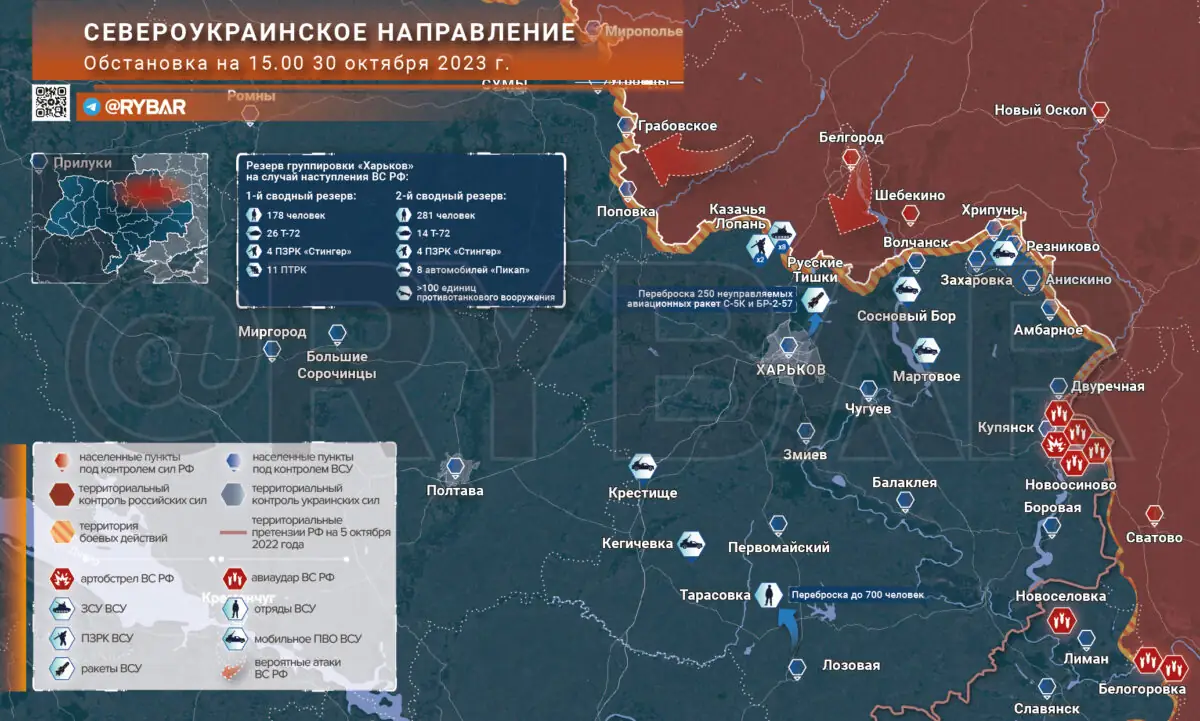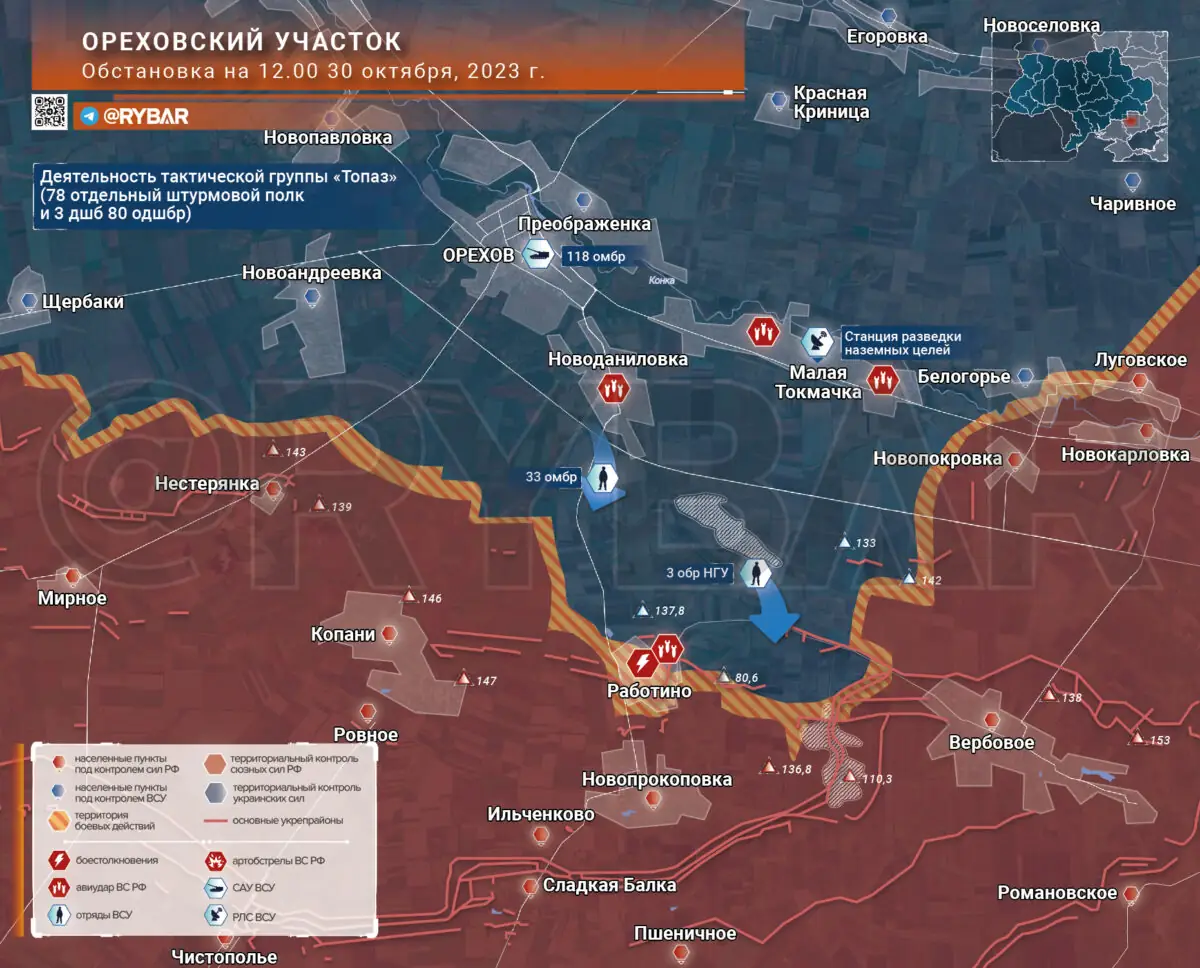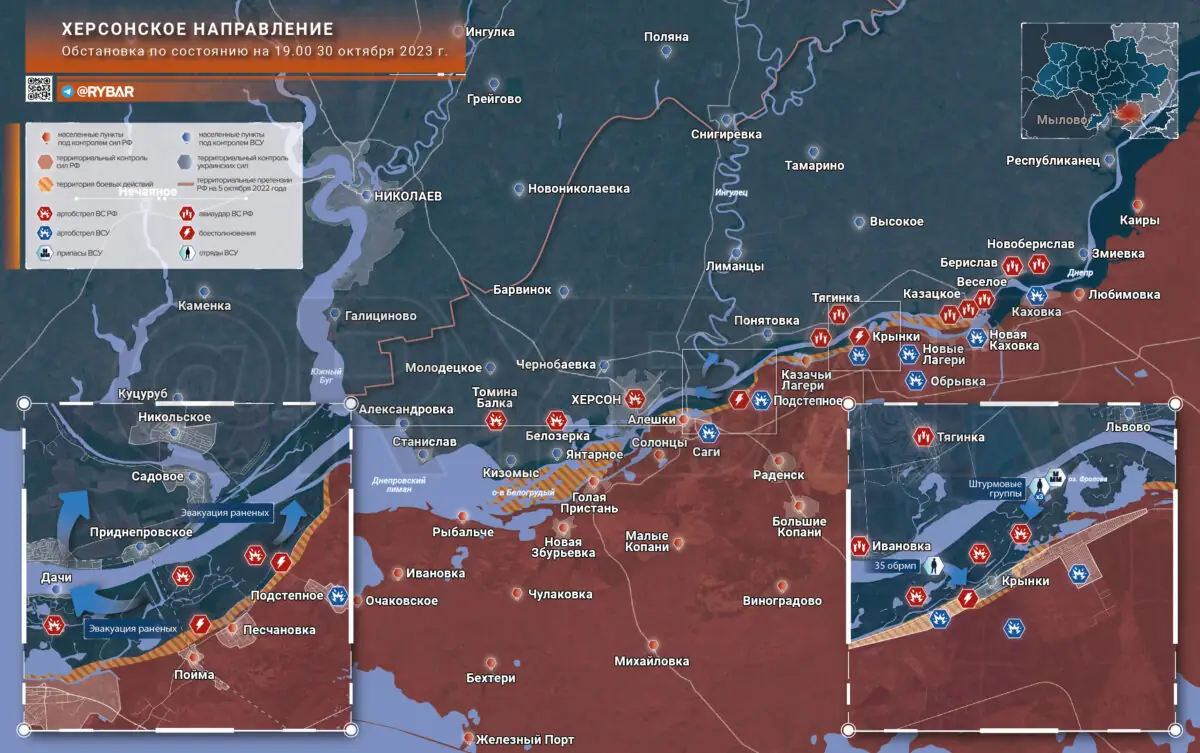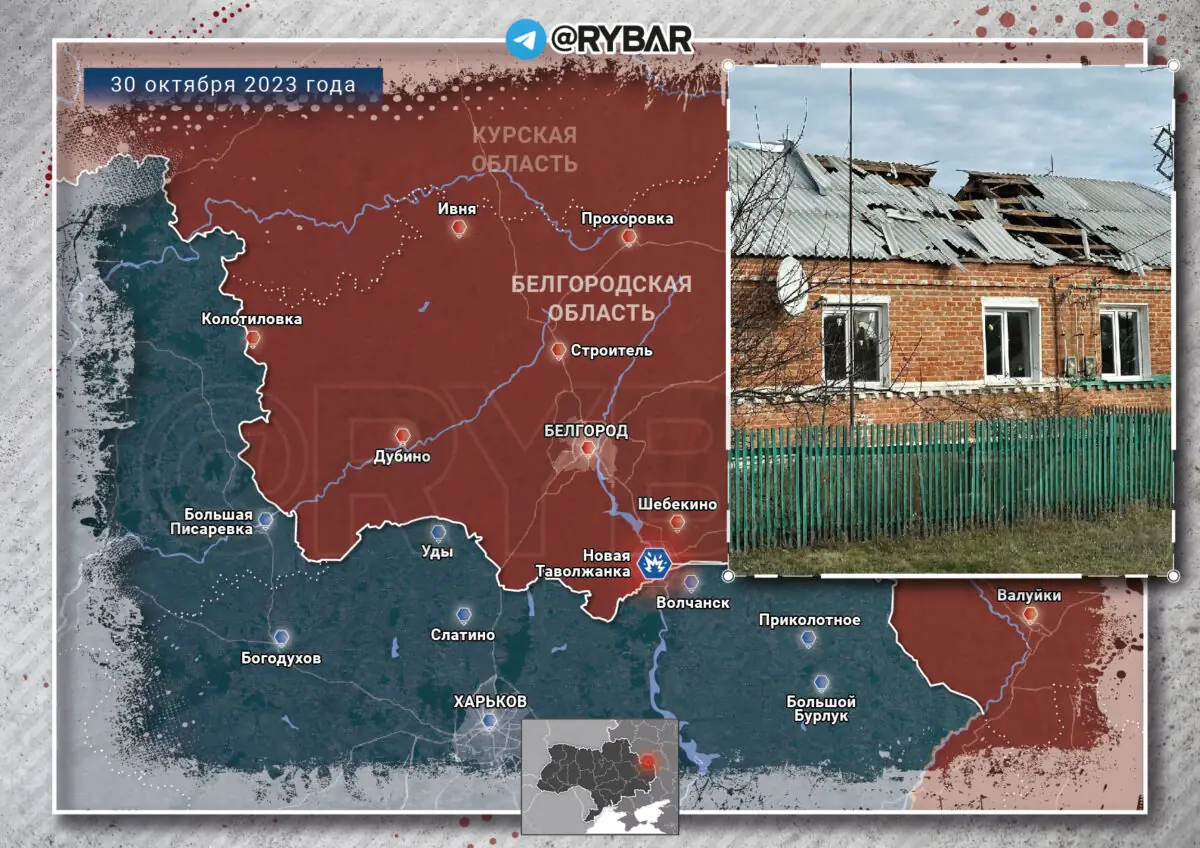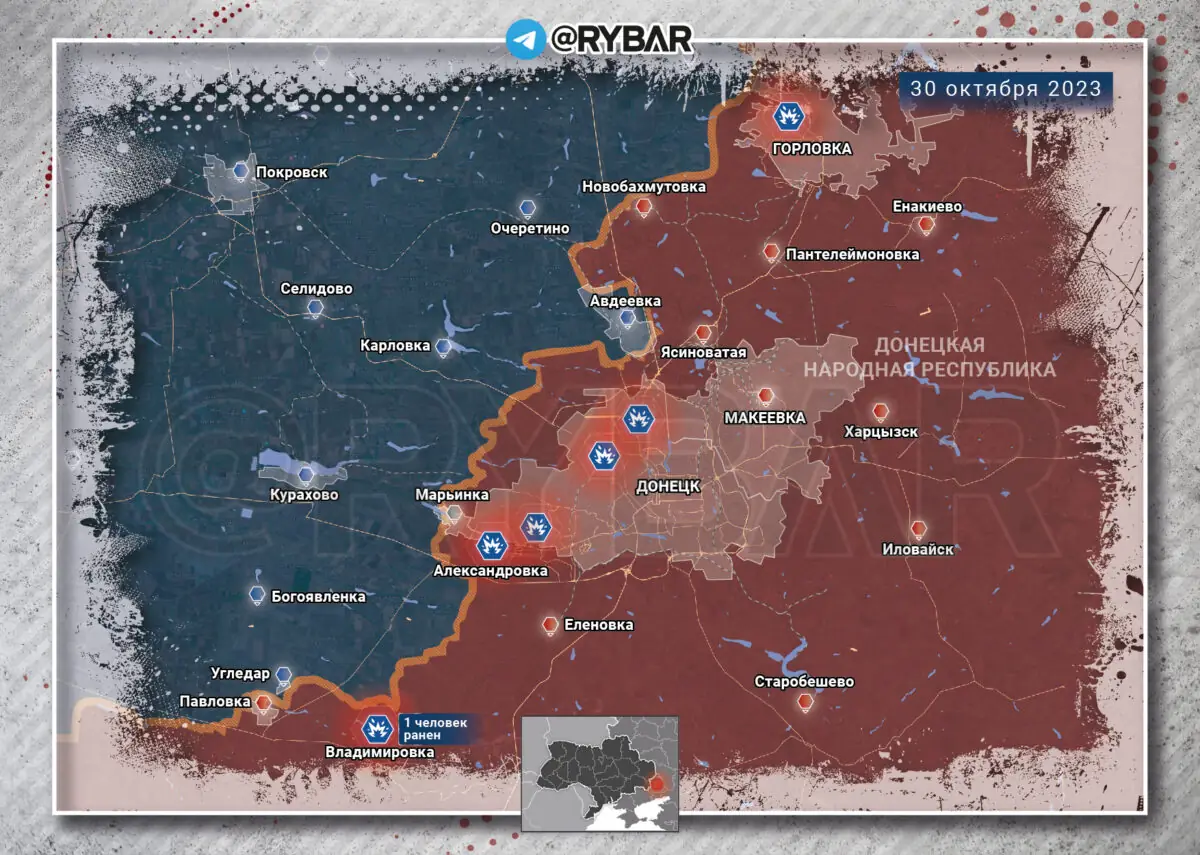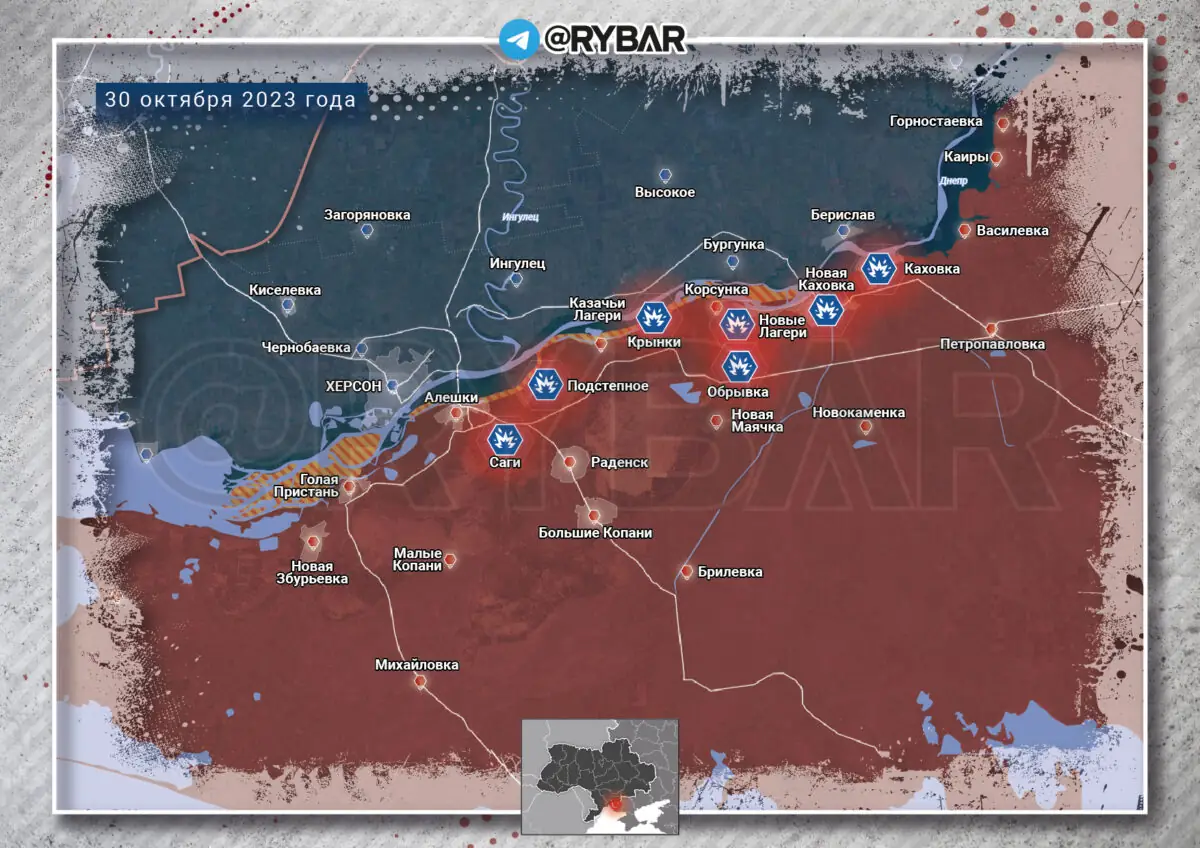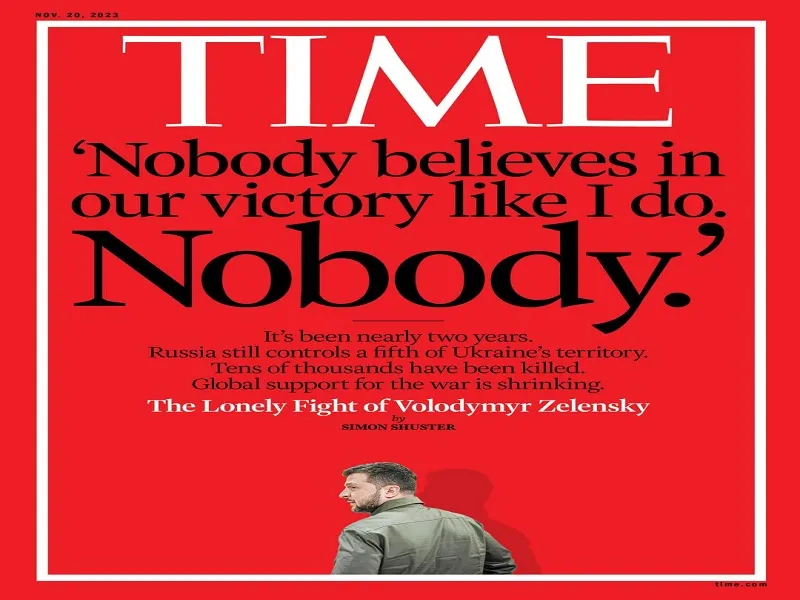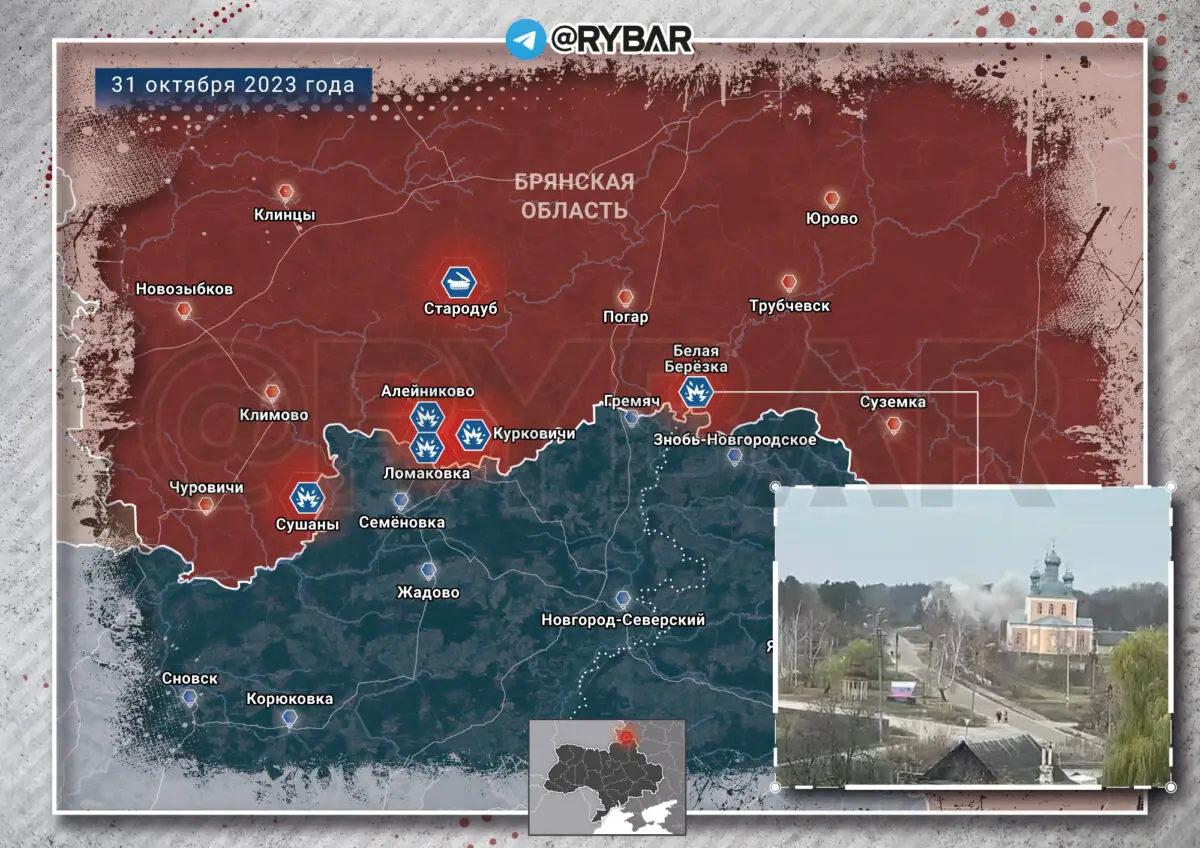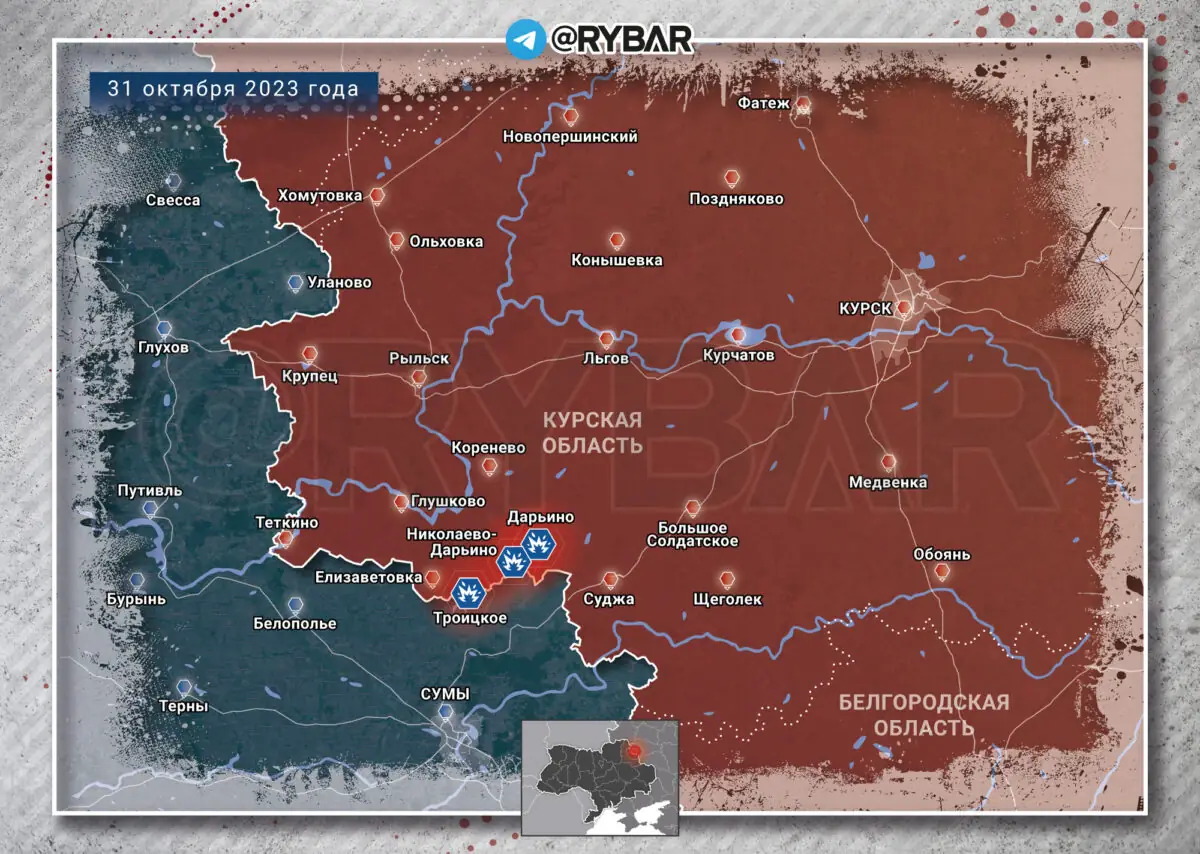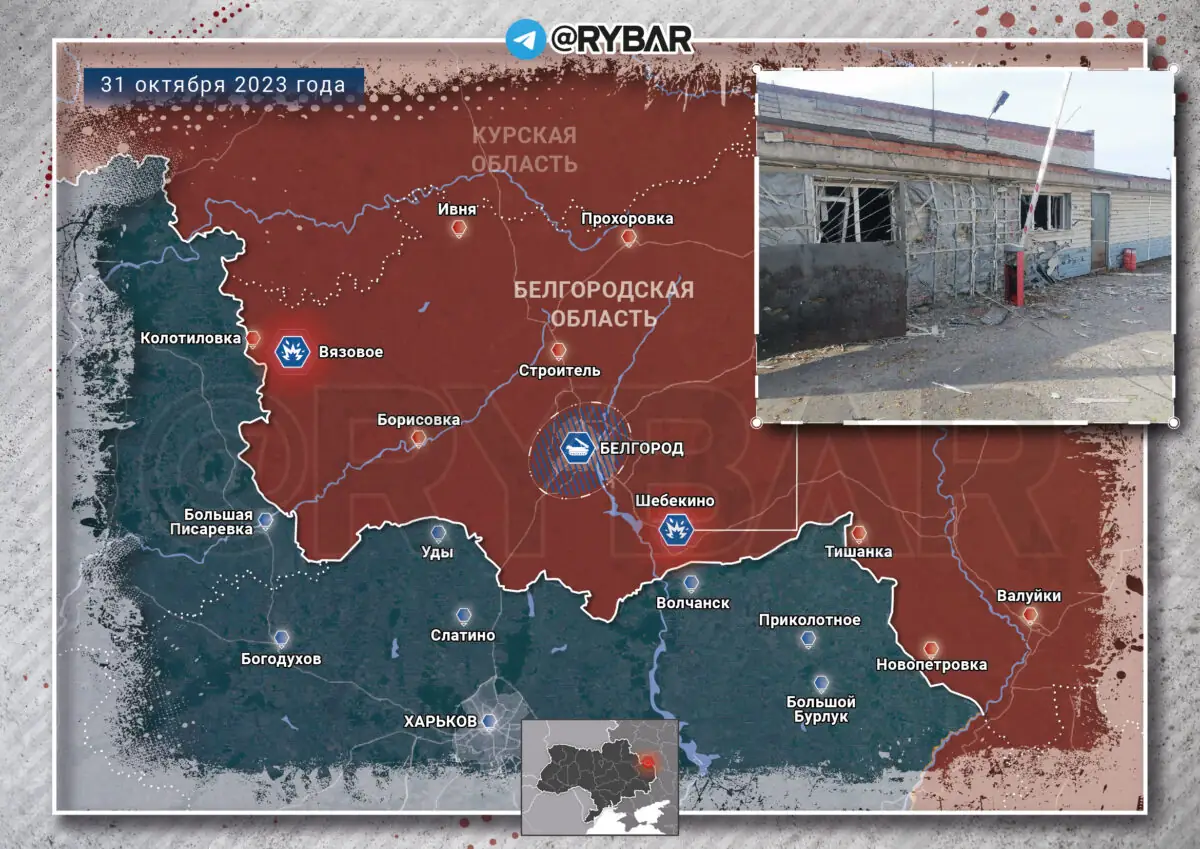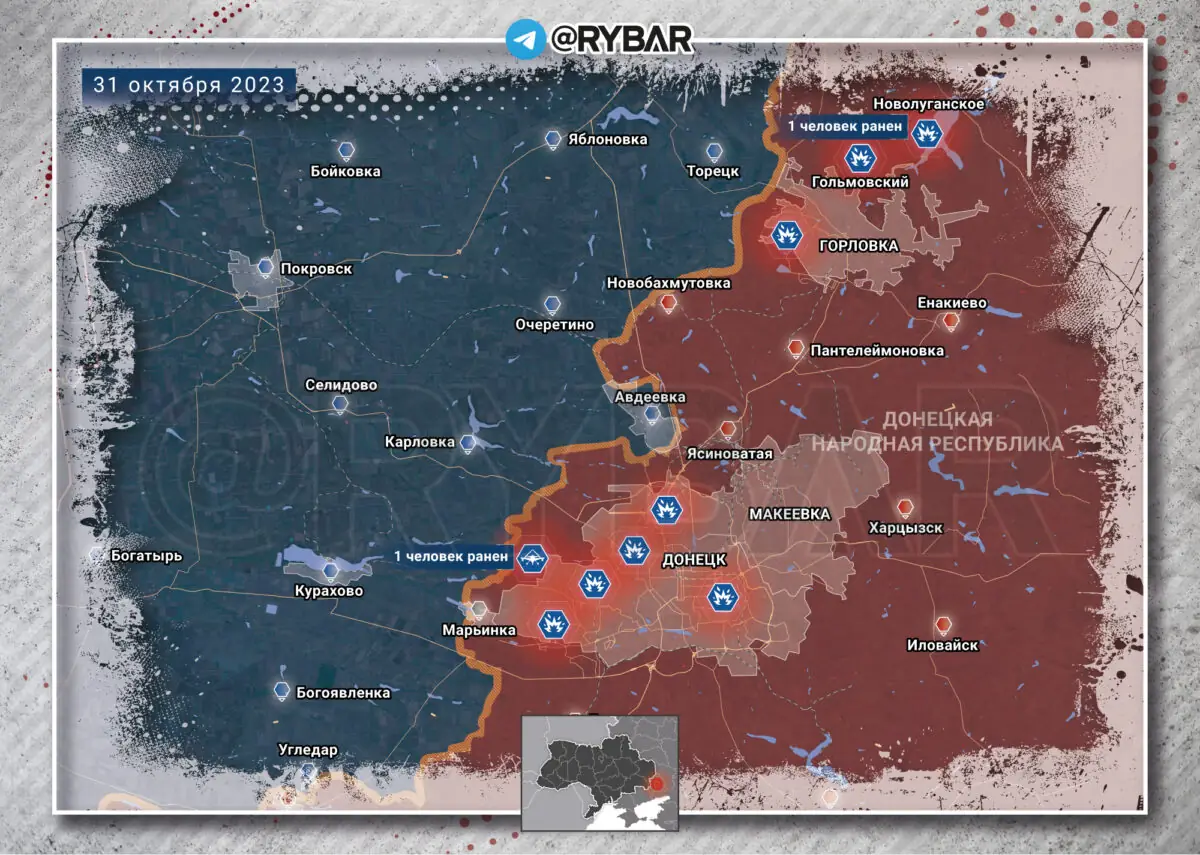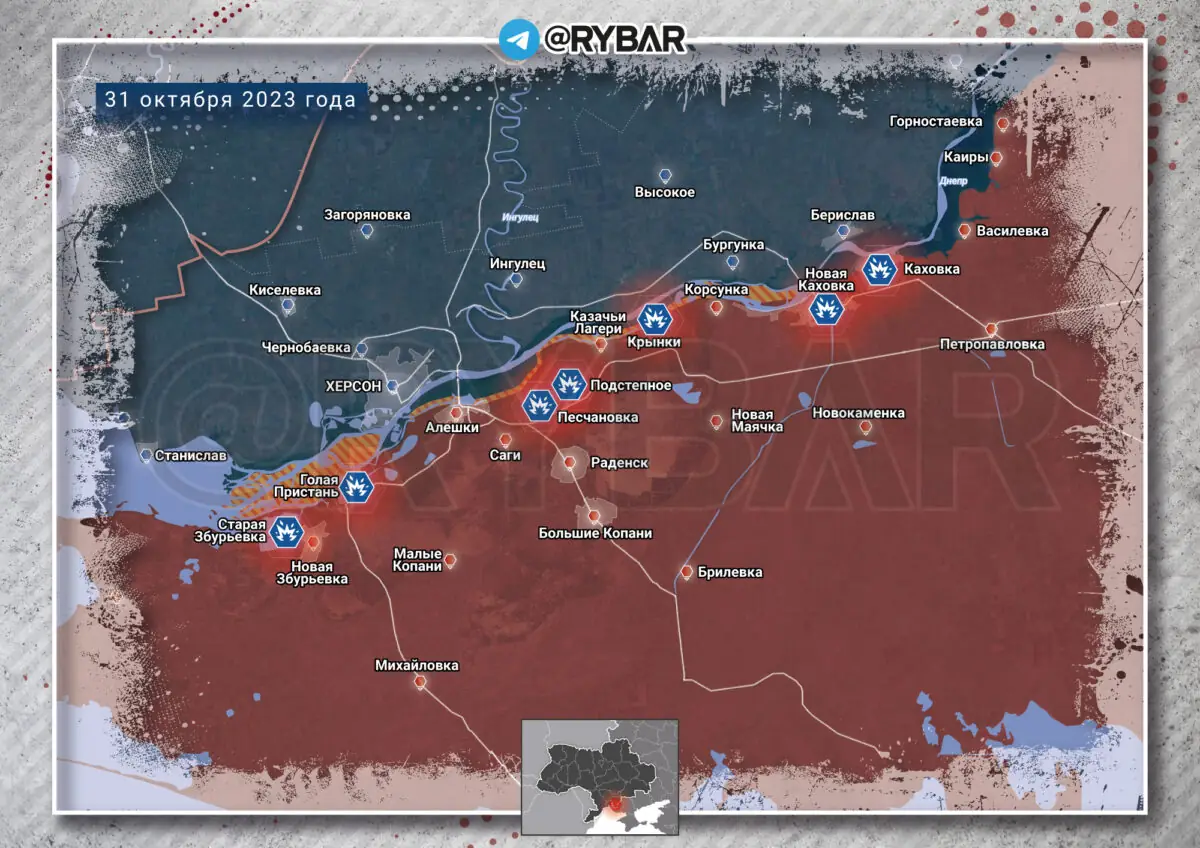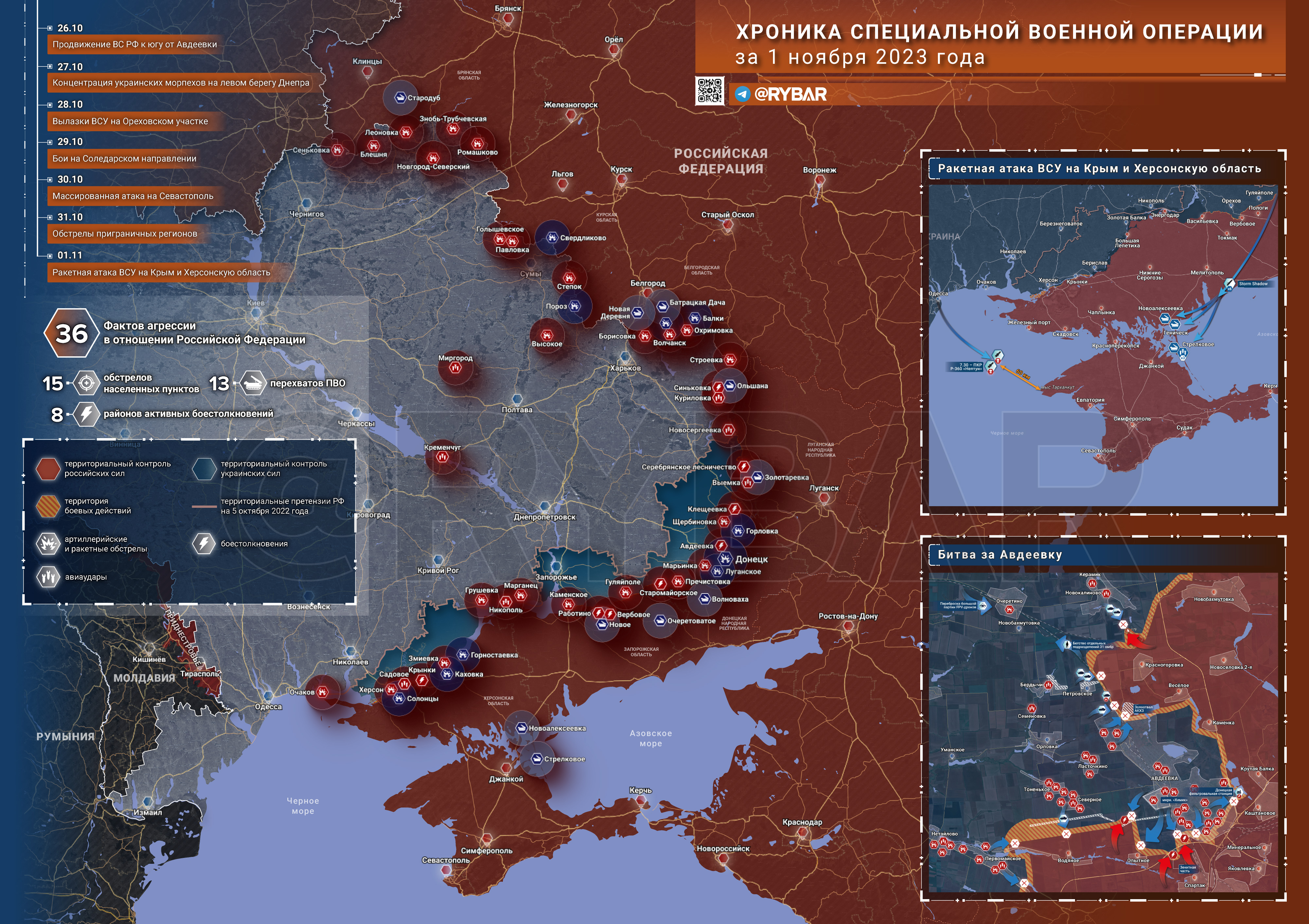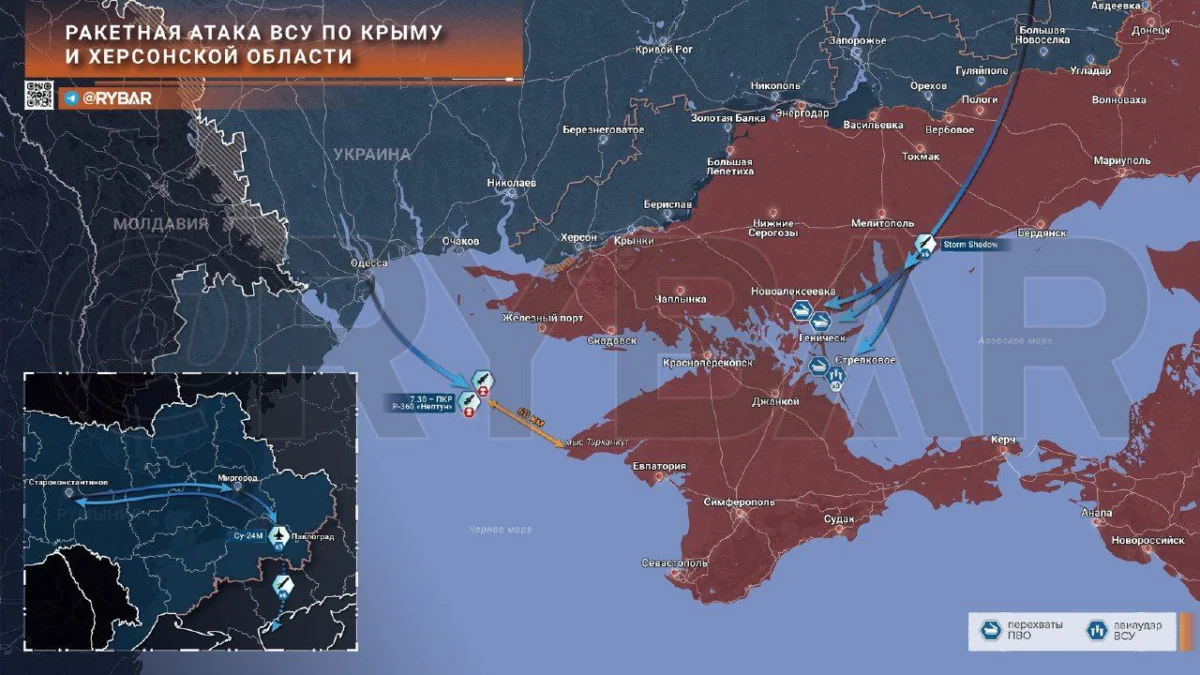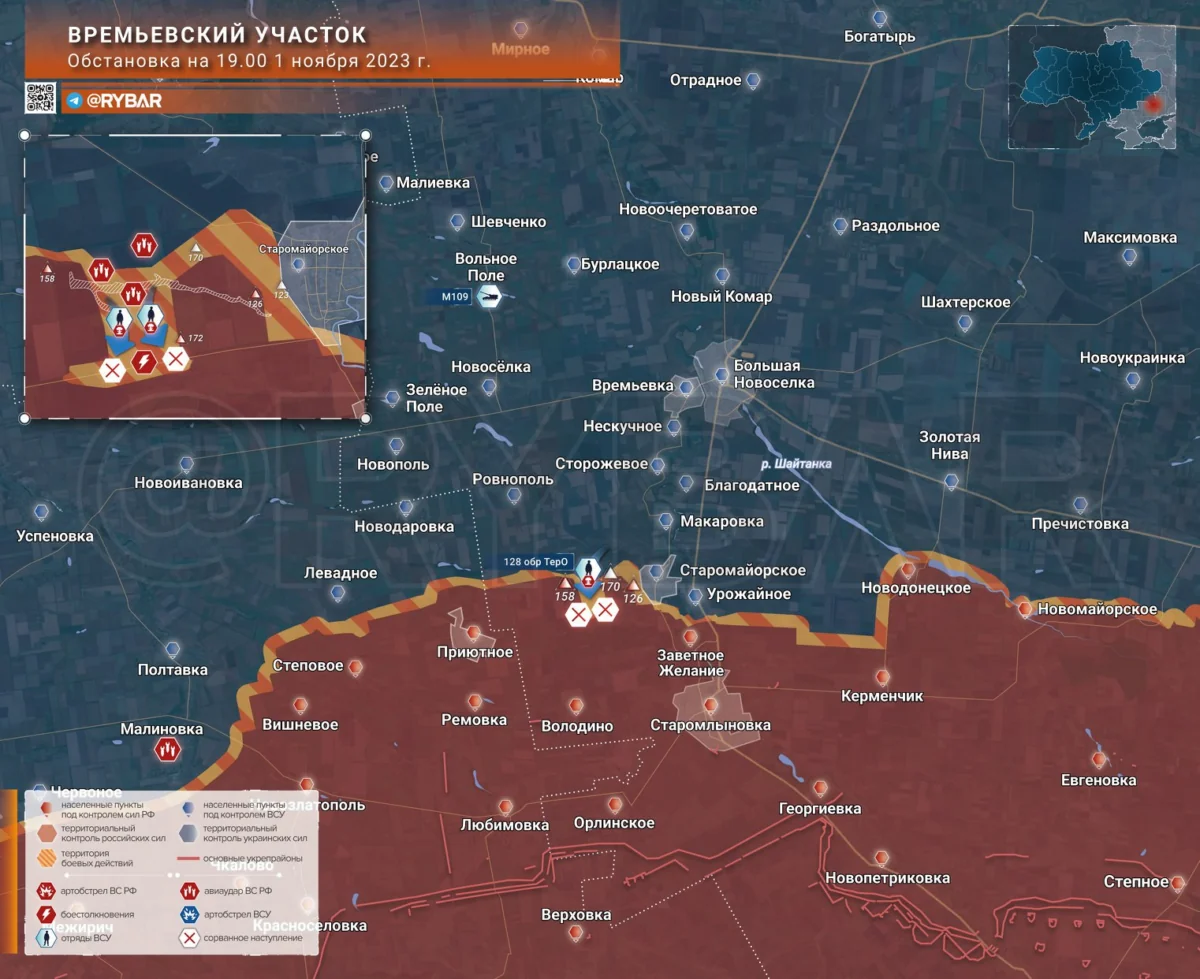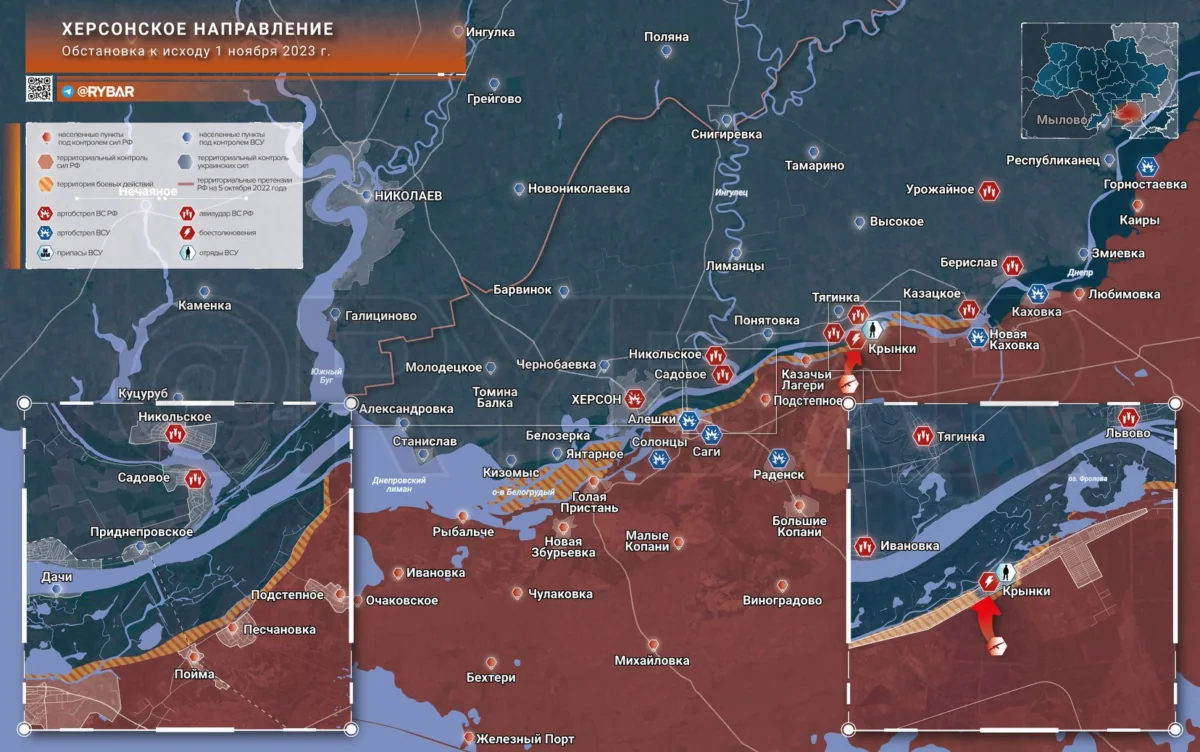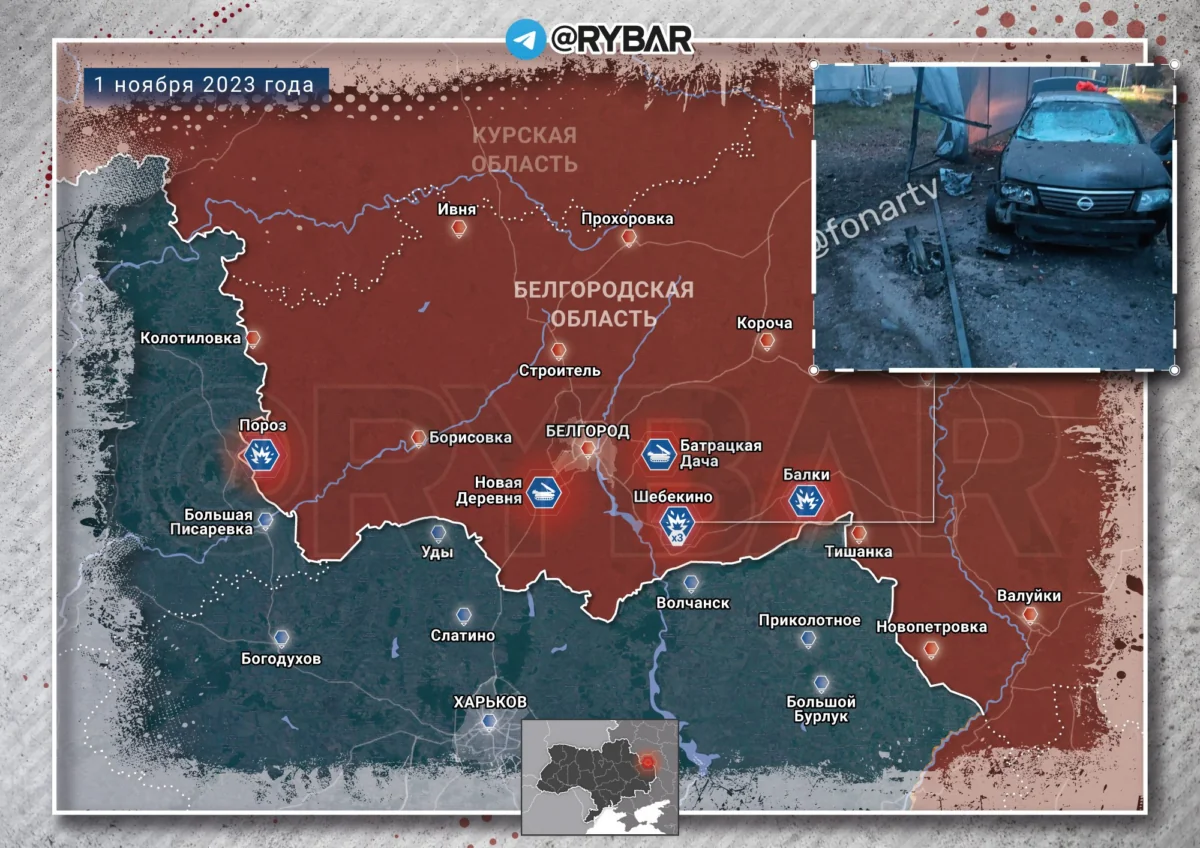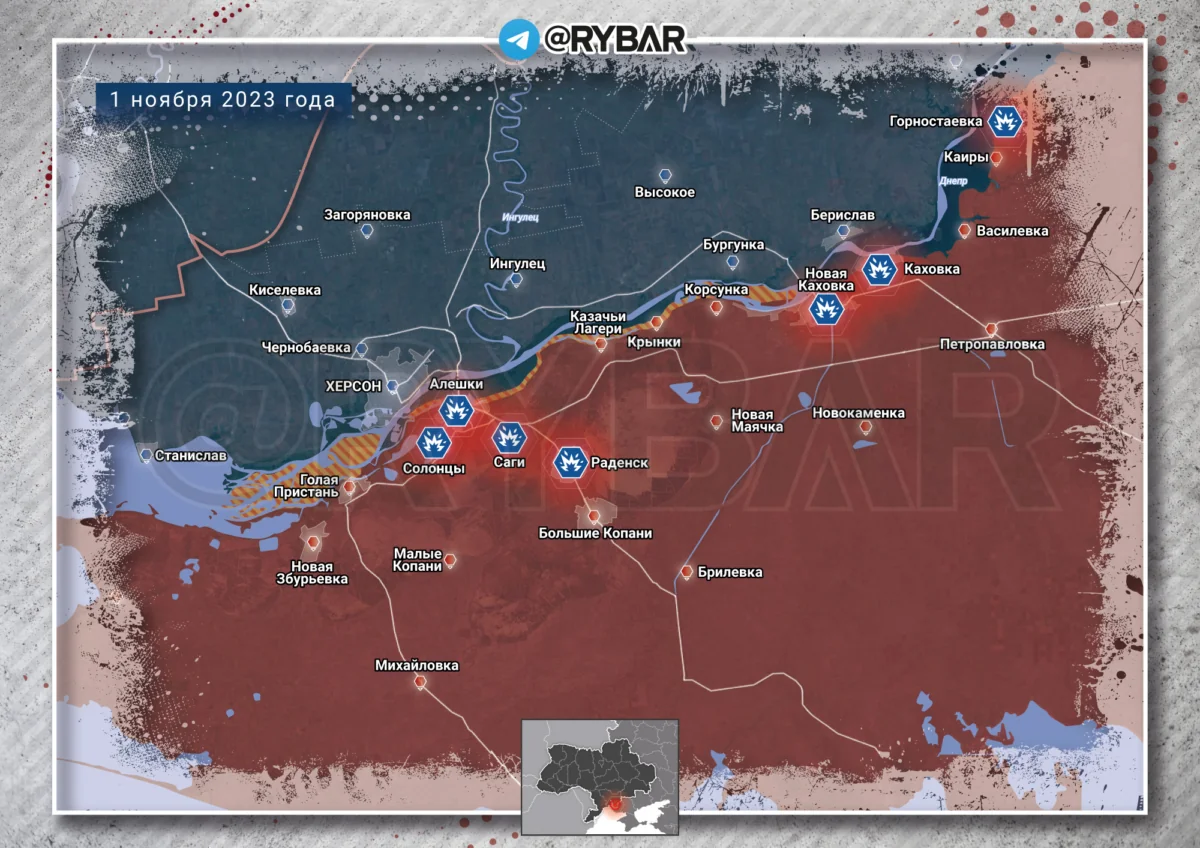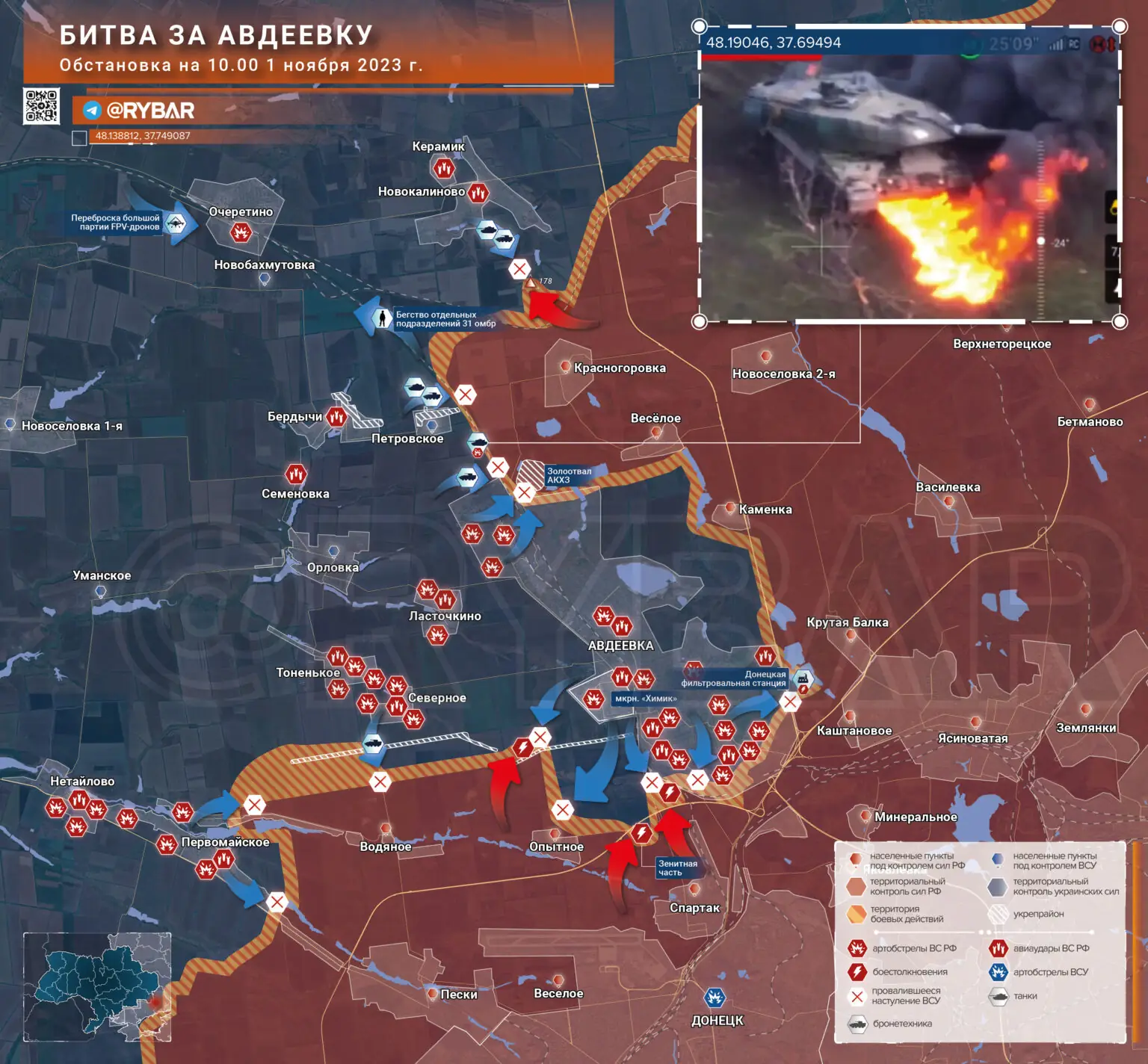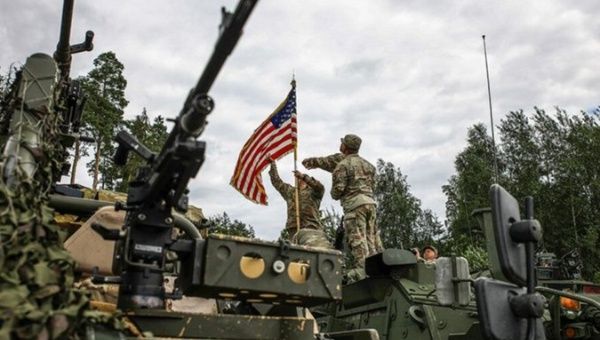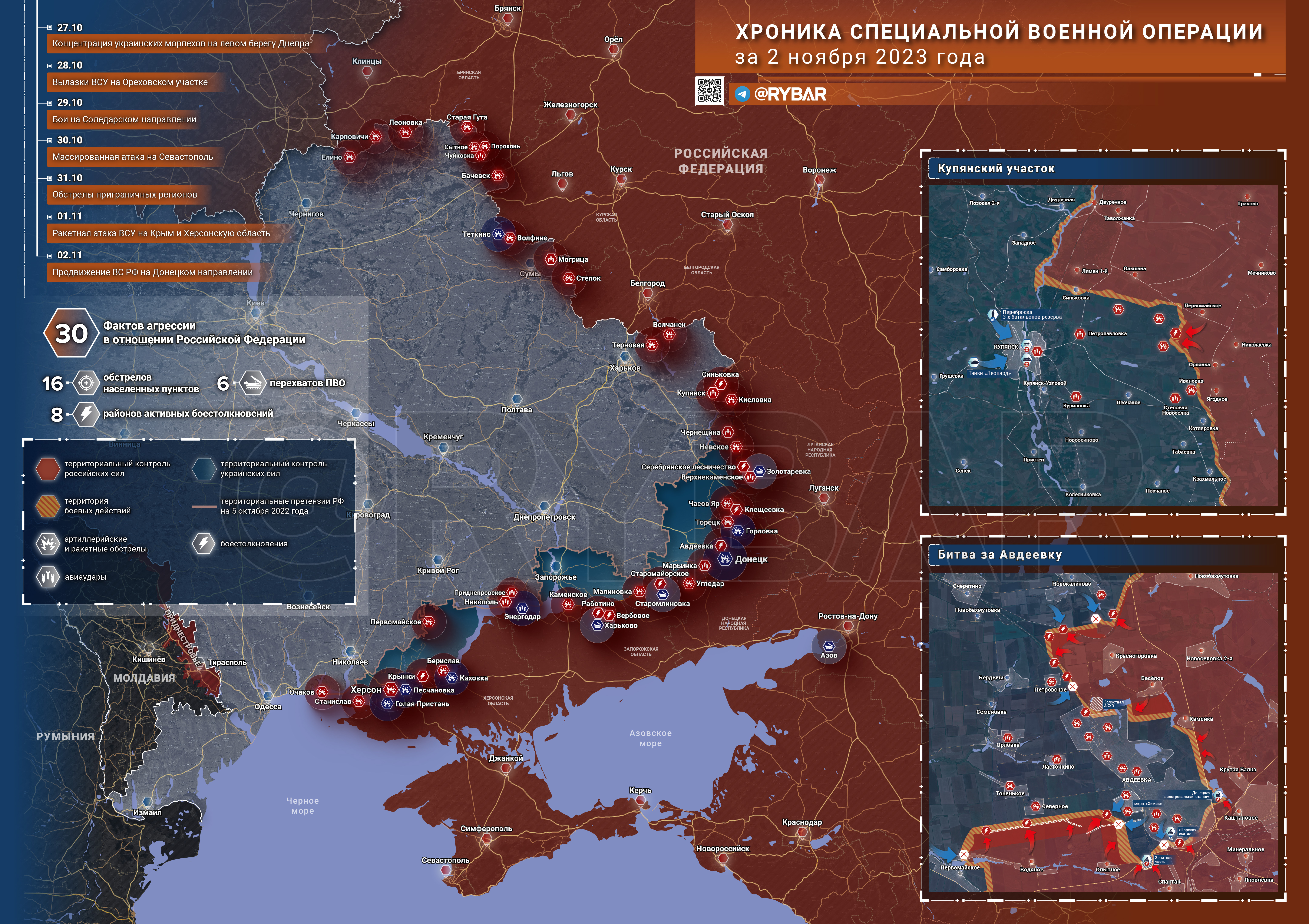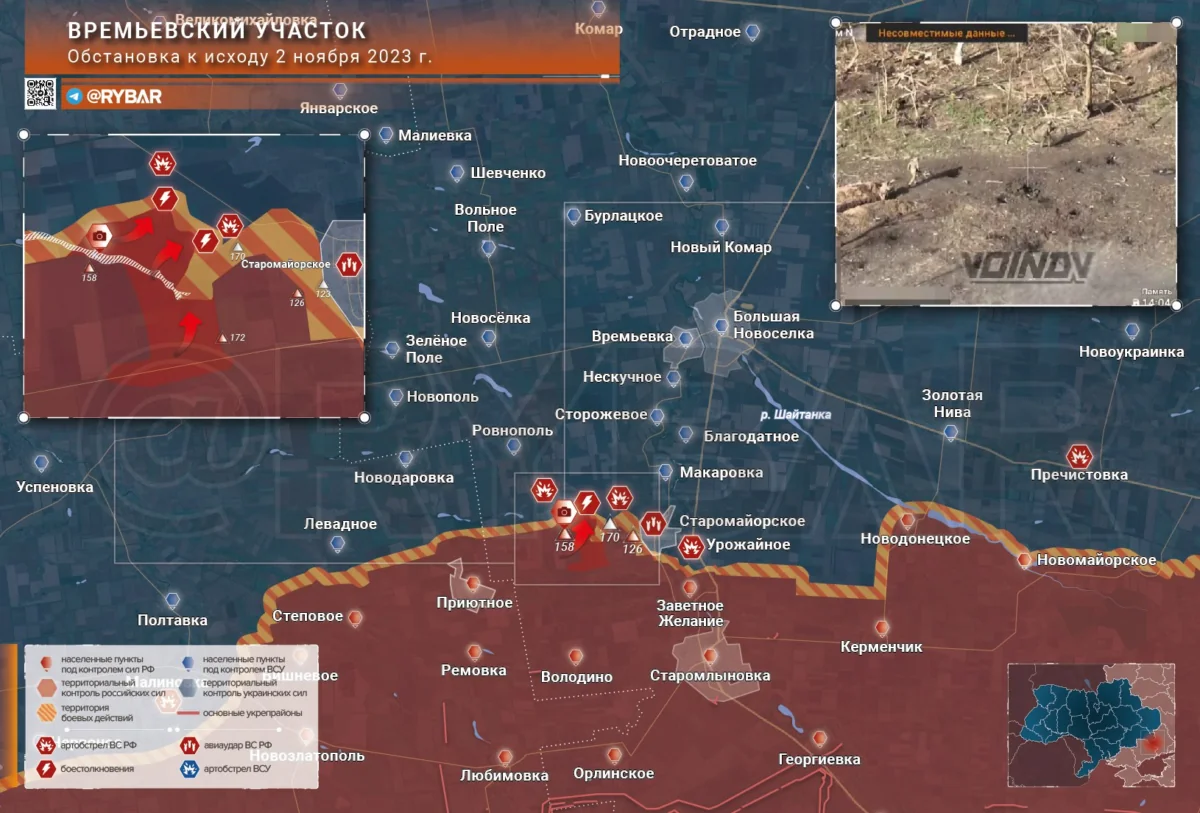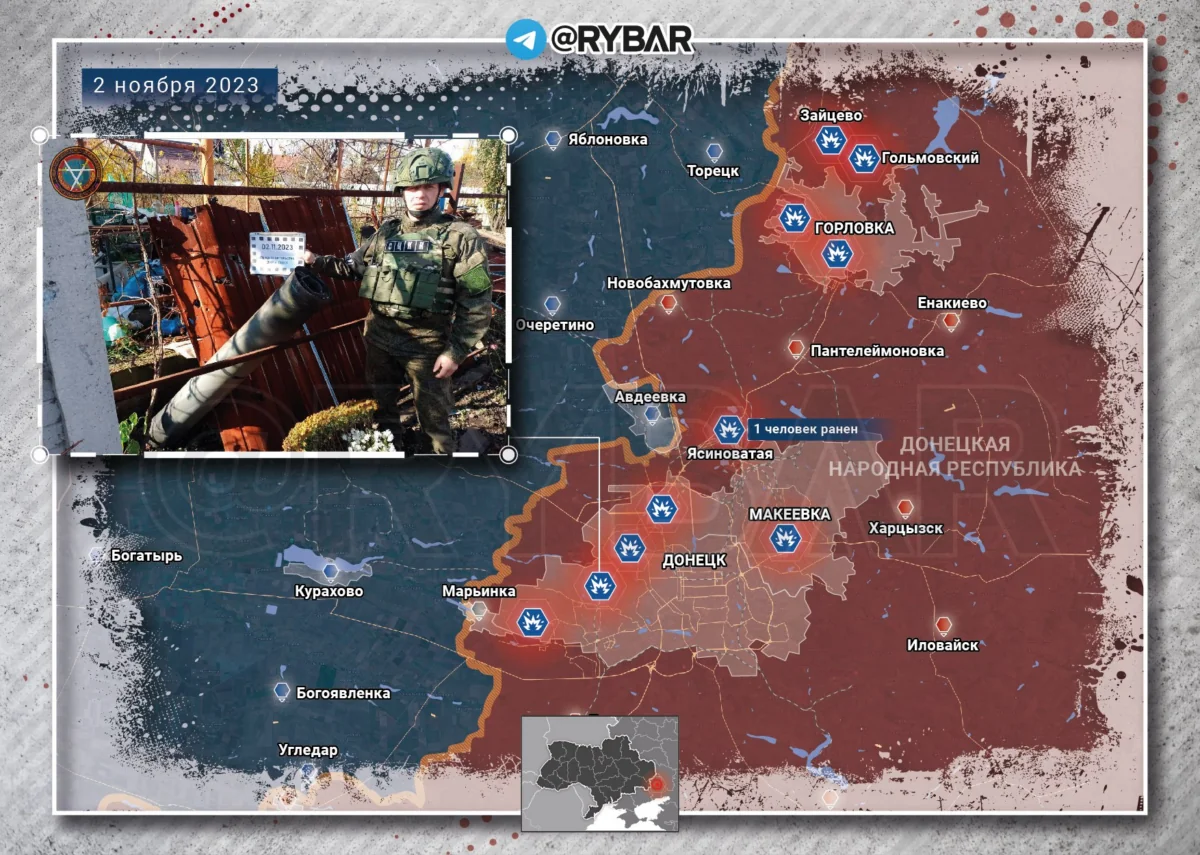I am not sure how valid this is but I am sure it is relevant:
Victor vicktop55 @vicktop55 - 16:58 UTC · Oct 24, 2023
Military expert Vladislav Shurygin: The Pentagon has become sharply concerned about the suddenly increased effectiveness of the Russian Aerospace Forces.
In two weeks, the Russians staged a real massacre in the Ukrainian sky. The Ukrainian Armed Forces lost at least 10 of their aircraft (according to other sources, 14).
Moreover, all of them were shot down far from the front line and outside the radius of Russian air defense systems, as well as outside the standard radius of Russian fighter missiles. Those pilots who were able to eject reported that until the moment their planes were hit, they did not receive warning information about the attack from the appropriate warning systems.
The Americans believe that the Russian Aerospace Forces have acquired new missiles capable of not only hitting targets at a great distance, but also, after launch, independently pursuing a target without illuminating it from the aircraft’s radar, using a radio signature to guide it (the target).
Now Americans carefully check this information and consider it critically important. Since, if it is confirmed, it means that the Russians have acquired a weapon that will neutralize all the advertised advantages of their new main fighter, the F-35.
Vladislav Shurygin is indeed a Russian 'military expert' who has had various appearances on Russian talk shows.
The claim that there is 'a real massacre in the Ukrainian sky' is valid if the recent daily reports of the Russian Ministry of Defense are near to reality. I for one believe they are.
The typical Ukrainian air-force loss rate over the first three quarters of this year was one to three air planes or helicopters per week.
Since the mid of October the Russian daily reports claimed, according to my notes, the shot down of:
17 Ukrainian Mig-29 fighter aircraft
2 Ukrainian SU-24 tactical bombers
3 Ukrainian SU-25 close air support jets
1 Ukrainian L-39 fighter jet trainer
3 MI-8 transport helicopters
That is a total of 26 air assets over just 9 days!
If this is even near to the truth it is a catastrophic loss rate for the Ukrainian air force.
Is this even possible, one might ask. I believe it is. In October 2022, after a decades long development phase, media announced the first kill of a Ukrainian plane by a Russian R-37M long-range air-to-air missile:
The R-37 was developed from the R-33. For compatibility with aircraft that did not have the MiG-31's sophisticated radar, the semi-active seeker was replaced with a variant of the Agat 9B-1388 active seeker. Similarly, folding tail controls allow semi-conformal carriage on planes that are not as big as the MiG-31.
Mid-body strakes enhance lift and hence increase range. According to Defence Today, the range depends on the flight profile, from 80 nautical miles (150 km) for a direct shot to 215 nautical miles (398 km) for a cruise glide profile.
The R-37M designation has since been used for a modernized variant of the missile, also known as RVV-BD (Raketa Vozduh-Vozduh Bolyshoy Dalnosty, or Long-Range Air-to-Air Missile). R-37M's range exceeds 200 km, and it is capable of hypersonic speeds (~Mach 5). It will be carried by the modernized MiG-31BM interceptors and Su-35S and Su-57 multirole fighters. It is not known whether the long-range air-to-air missile for the Su-57, designated as Izdeliye 810, is a derivative of the R-37M.
The missile can attack targets at altitudes of 15–25,000 meters, guided semi-actively or actively through the Agat 9B-1388 system.
The R-37M is claimed to have a maximum reach of 400 kilometer (~250 miles) and a hypersonic speed of Mach 5-6. It can be fired from safe airspace, outside of any Ukrainian air-defense range, deep into Ukraine.
In February 2023 Ukraine claimed to have found the wreckage of an R-37M.
Modified Ukrainian air-planes have been used to fire British Storm Shadow missiles (and the similar French SCALP-EG) at Russian targets. I haven't found any recent report of their successful use.
Ukrainian air assets have to fly near to the ground to survive.
The sudden increase in Ukrainian air losses points to the introduction, in large numbers, of a new variant of the R-37M with an updated targeting capability and/or an even longer range.
The U.S. plans to introduce F-16s fighter jets with 'long range' (100 kilometer, 60 miles) AIM-120D air-to-air missiles to Ukraine. They are clearly inferior to Russian air force capabilities and can only contribute to the losses.
Posted by b on October 25, 2023 at 6:09 UTC | Permalink
https://www.moonofalabama.org/2023/10/u ... .html#more
*******
SITREP 10/24/23: Avdeevka Victories Confirmed as Mid-East Continues Slide Toward War
OCT 24, 2023
We start with major acknowledgments by Ukraine that Russia has captured important positions in Avdeevka, particularly around the Slag Heap and Stepove-railway area. Yes, these are the same positions discussed for a week now but I believe they have been going back and forth in a ‘gray zone’ that no one quite controlled. Now Russia has reportedly established firm control over them from which further expansions can be made, after some consolidations.
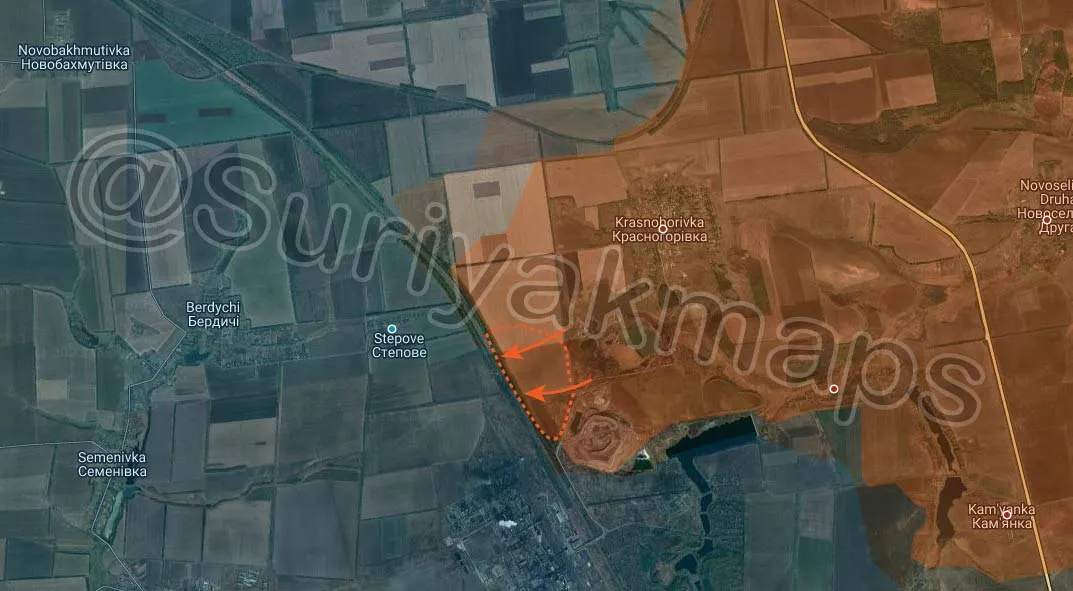
We talked about Russia’s OPSEC in this area, but it seems they were saving up to release one big produced video for the capture of the Slag Heap, which they finally revealed today, showing the destruction of Ukrainian defenders crawling all over the Slag Heap like flies on dung:
(Video at link)
It gives some interesting insight, as I myself didn’t realize the Slag Heap had actual burrows dug into it all over. Not only have Russian forces burned out all the defenders but placed the flag of the 114th Guards Separate Motorized Rifle Brigade on top, which is the unit I’ve been saying since the beginning has been the main breakthrough force assaulting in the north Krasnogorovka area.
The AFU was so utterly miffed (read: butthurt) about this, they even squandered precious FPV drones on trying to destroy the Russian flag—talk about insecurity and having your priorities set. It shows that to them, vanity and the information war is all-important:
(Video at link)
But speaking of the 114th on the flag. The 114th was the famed Vostok Battalion of the DPR prior to being absorbed into the Russian military structure:
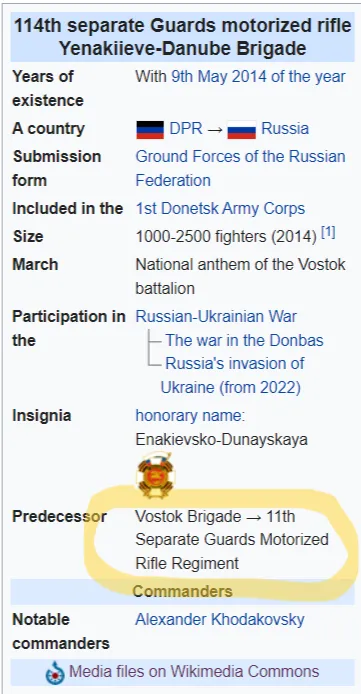
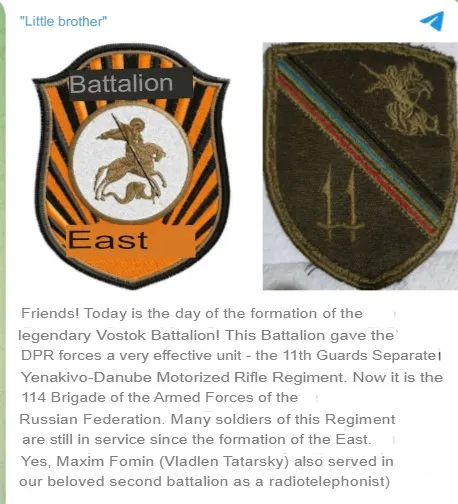
I emphasize this to highlight the point that all the so-called “losses” Ukraine claims Russia is incurring here are not really Russian losses. Yes, the DPR units are now officially subsumed into the Russian military corps structure, but you have to understand the differences.
Why do the Ukrainians highlight Russian losses? It’s under the hope that Russia incurs so many losses their society will no longer accept the war, because too many cemeteries will be filled, soldiers returning home in body bags, etc. But not a single one of these soldiers return to Russia—they are all Donetsk natives. That’s not to belittle their sacrifice but simply to point out that the actual mainland of Russia proper will never “feel” the effects of these losses—the families in Moscow or any other Russia proper region will be completely oblivious. That means any hoped-for socio-political action against Putin or whatever it is pro-Ukrainians hope for cannot possibly happen as a result of any perceived “losses” in this sector. No cemetery in Russia proper will expand with a single grave or plot from this front. The actual real Russian army is not suffering almost any losses at all at present, except maybe some in the Kupyansk direction. In short, Russian political leadership can “afford” losses here without issue, as callous as that might sound.
But that’s moot anyway because we now have increasing evidence that it’s certainly not Russia or DPR taking the bulk of the losses in Avdeevka. More and more reports come to light suggesting that the AFU’s losses in this region are staggering.
Firstly, understand that reports came literally a week before the start of the Avdeevka operation that the famed Ukrainian 47th brigade had been “removed” or pulled back from the Zaporozhye front because it was so heavily destroyed and faced mutiny from within, as much of the fighters refused to go on assault any further.
You can see the date of the news below:

Recall that the 47th is the only brigade to have been given M2 Bradleys as part of the big elite 9 brigades that took part in the summer counteroffensive.
Now, it’s been confirmed that elements of the 47th, after being pulled to the rear, have been urgently injected into Avdeevka to help staunch the losses. This is confirmed through a variety of sources, including the fact that Bradleys have appeared for the first time, geolocated to the north sector near Krasnogorovka at 48°12'46.5"N 37°42'15.7"E:
(Video at link)
This captured AFU soldier from Avdeevka also speaks of both Bradleys and Leopards operating on the front:
(video at link)
And pro-Ukrainian maps are now featuring the 47th there as well:
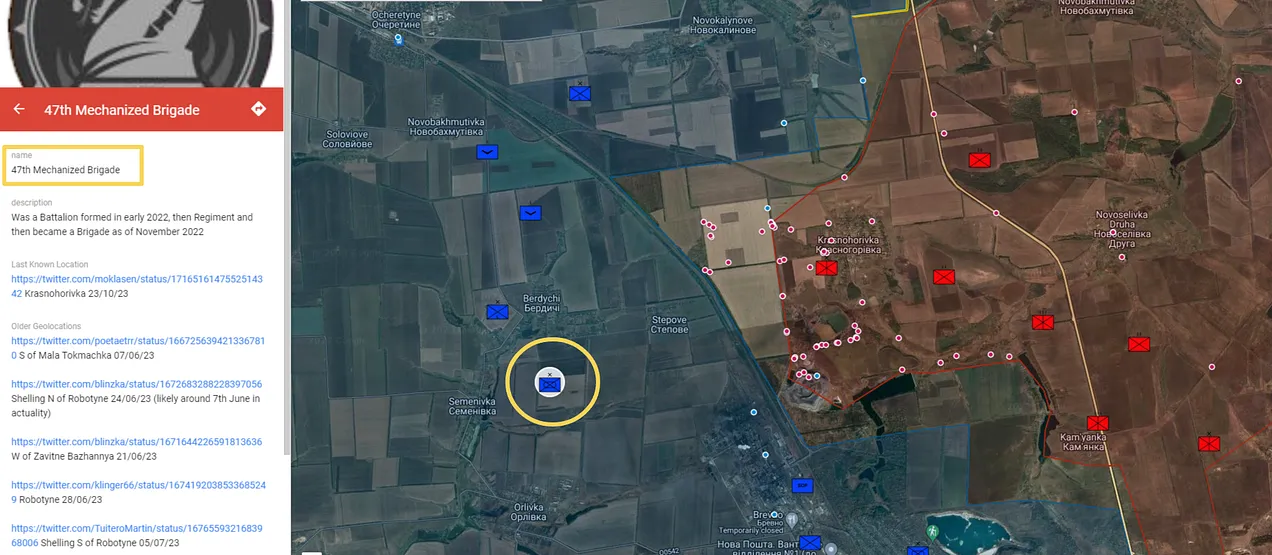
So, why is all that important? Because we have a new video from a female medic from the 47th who plainly states that their casualties are the most horrific they’ve ever been, since the start of the conflict:
(Video at link)
“We lost more in a few hours than in the past 4 months.”
She’s been identified as Olena Rizh of the 47th brigade:
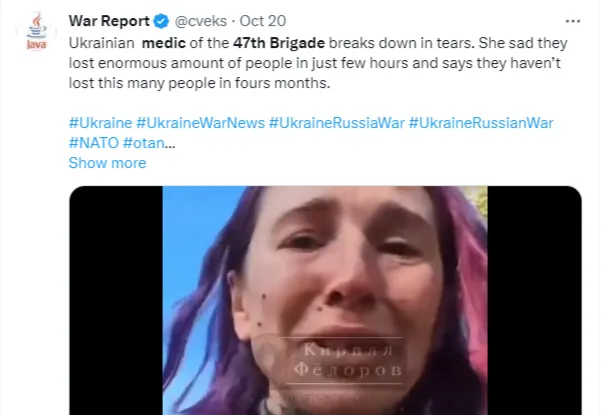
Considering that the past 4 months, the 47th was in the absolute worst Rabotino meat-grinder it’s nearly unimaginable the type of losses she must be referring to.
Due to heavy losses, at least one battalion of the 47th mechanized brigade of the Armed Forces of Ukraine was transferred to Ocheretino and Novobakhmutovka from the Orekhovsky site. Their forces of the Ukrainian Armed Forces tried to strike positions near the waste heap, but to no avail.
Recent article on the shambolic 47th:
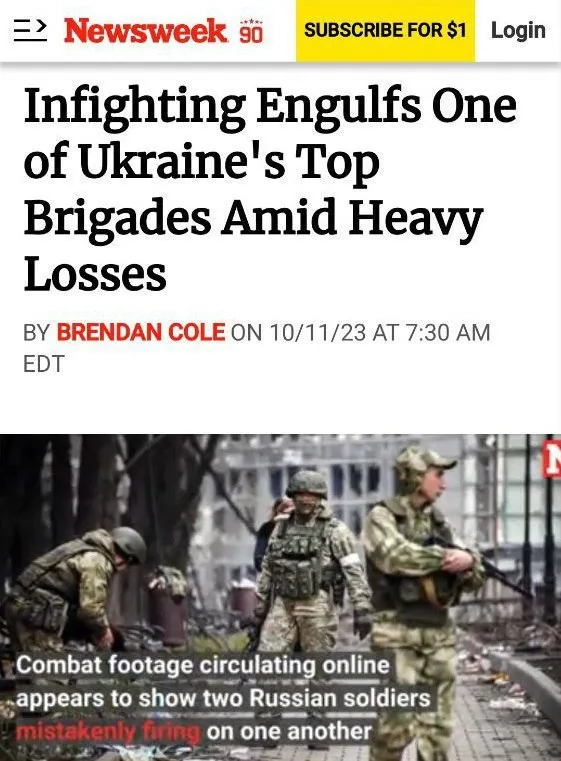
Russian aviation and artillery continue to work on enemy lines. The losses of the Armed Forces of Ukraine are growing: according to sources, during a week of active fighting, the number of killed members of the Armed Forces of Ukraine alone exceeded 1 thousand people and 60 pieces of equipment.
In fact, some of AFU’s own reports now claim that much of the AKHZ chemical plant, aka Coke Plant, is in a ‘gray zone’ which neither side controls, due to not only Russia’s mass bombing but Russia’s newfound proximity to the plant by way of capturing the adjacent Slag Heap:
The most difficult situation near Avdiyivka is in the area of the AKHZ territory.
The situation is such that no one is physically controlling him now. We have fire control.
Any attempts by the occupiers to enter it and gain a foothold are ended by the powerful attacks of our cassettes on the enemy.
This is the basic scenario of the last few days. The occupiers enter the territory, suffer losses, and in the best case - those who survived leave. But very often nobody leaves
Our army also suffers losses, because it is also impossible to stop such an enemy horde without it. The best leave us.
But the enemy is losing so much that it can be compared even with the first days of a full-scale invasion.
There are also heavy battles for the railway in the direction of Stepovoy. It is under our control, but the enemy does not spare the equipment and o/s to achieve the goal.
Recall my outlined plan from the last report. It’s likely what Russia is attempting to do: gain a foothold in the plant so as to get total fire control over the MSR (main supply route).
Today’s RT released video shows for the first time the view from the Slag Heap. You can see how tall the Coke Plant is, and how much fire control it can afford over the entire region with emplacements in the plant’s heights.
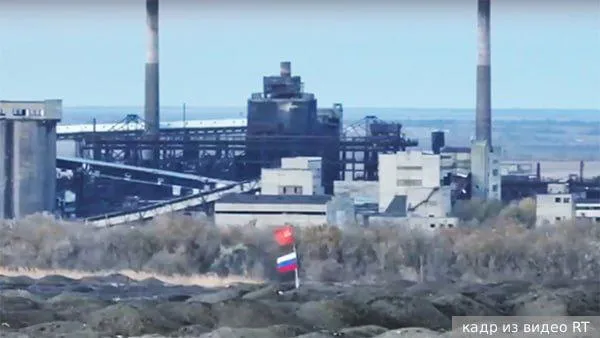
The view is going in the direction of this yellow arrow:
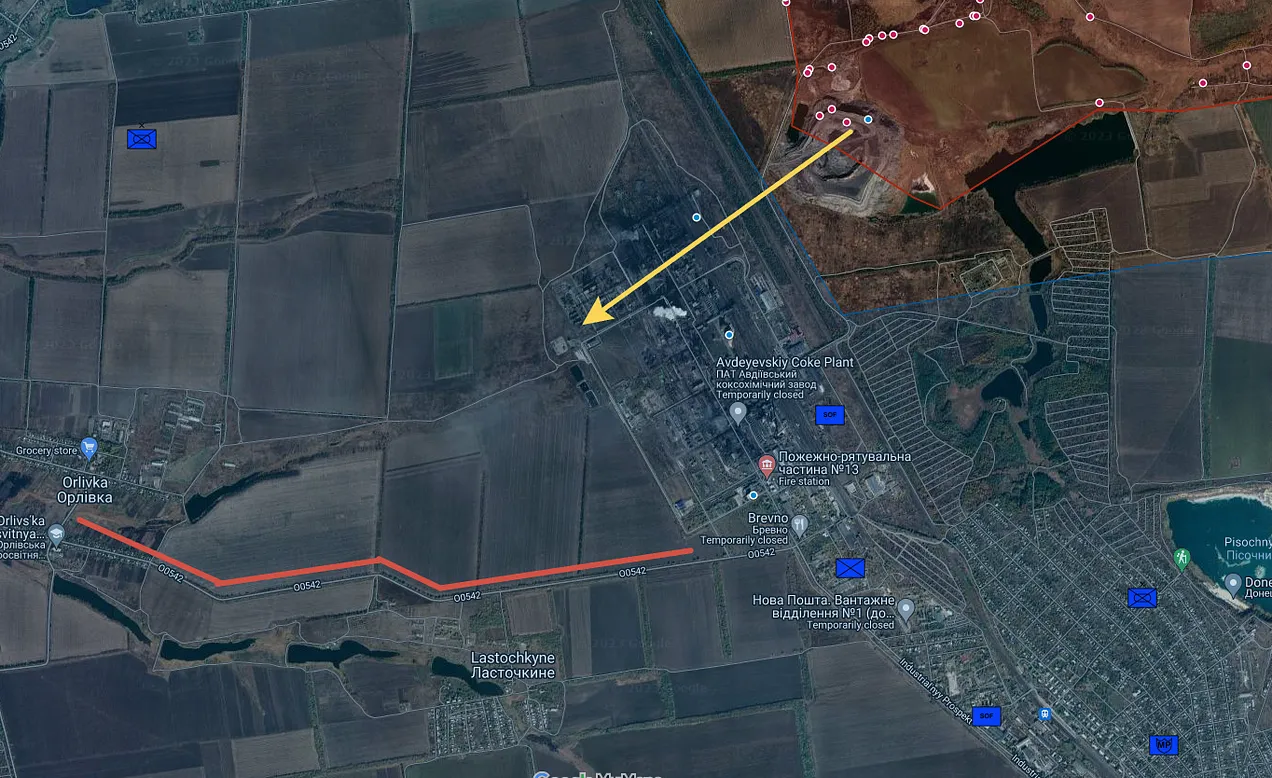
The problem is, as you can see, the plant is taller than expected and potentially obstructs the view of the MSR shown in red above. That’s bad news as it means that capturing the Slag Heap may not in fact give direct fire control over the MSR and in fact to do that, the plant may need to be captured, at least the top-most portion of it as outlined last time.
But by the sounds of the earlier Ukrainian report, Russia has already completed the first step in evicting AFU defenders from that portion of the plant, and is already trying to storm it. We’ll have to wait for confirmations.
Read the bottom of this Ukrainian report:
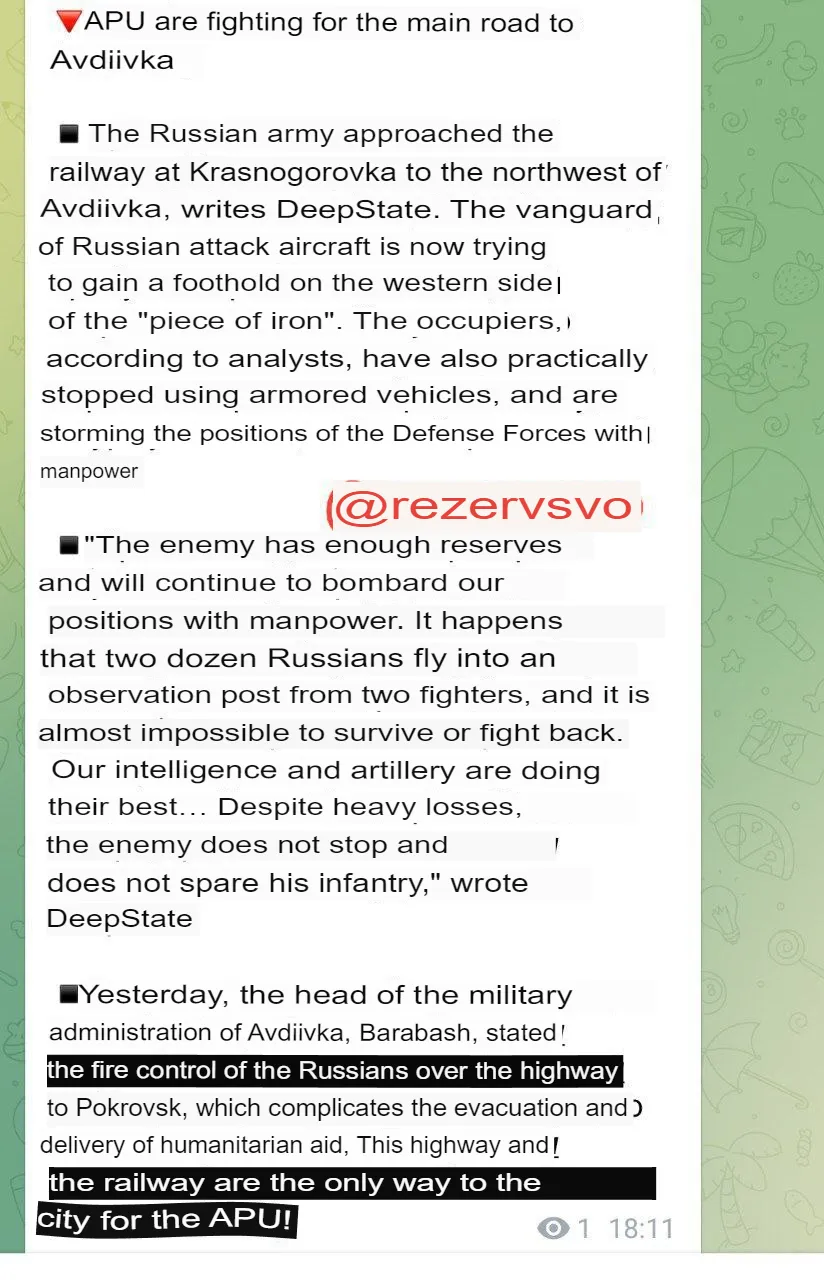
The “highway to Pokrovsk” is precisely the MSR, which AFU here appears to be confirming is under fire control.
Reports continue to highlight the significance of Avdeevka to the AFU and the deja vu of Bakhmut that it’s shaping up into:
“Our source in the OP said that Zelensky at the headquarters asked Zaluzhny to hold Avdiivka by all means so as not to repeat the situation with the shameful loss of the Bakhmut fortress.
The president's office ignored all the arguments of the commander-in-chief about the complexity of the defense of the city, which is half-surrounded, and the enemy is conducting the Avdeevka noose operation, exhausting the Ukrainian Armed Forces according to the Bakhmutov meat grinder scenario
Ukraine did attempt a fairly large desperate assault in the southwest to undercut Russian forces at the southern Avdeevka axis, pushing in from around Pervomaisk. But it was said Russian forces repulsed the attack and retook the slight bit of territory AFU initially grabbed.
Arestovich has even now conceded that Avdeevka stands to fall just like Bakhmut, and that the pro-Ukrainian side is falling into the trap of the same wishful thinking, self-soothing cognitive dissonances they used during Lisichansk, Bakhmut, etc.:
(video at link)
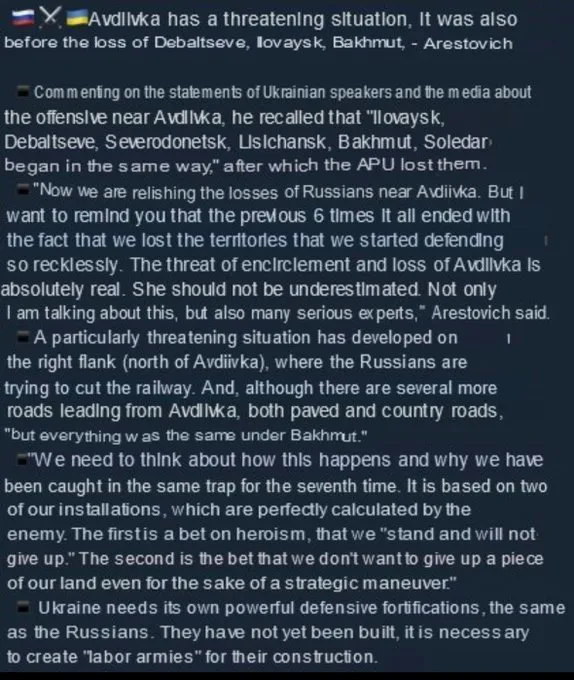
Lastly, a representative of the Pyatnashka Brigade of the DPR involved in Avdeevka battles tells Russell “Texas” Bentley that Avdeevka will “fall soon”.
(Video at link)
I think the word “soon” is relative, however it is interesting she mentions they’re advancing on the industrial sector which does seem to imply that Russia could have the Coke Plant as a primary capture target.
And a video taken by Ukrainian drone, allegedly, of a column of Russian 114th troops moving somewhere toward the Avdeevka front:
As well as a new perspective from the side of the Russian column which advanced toward that Stepove railway, which we saw shot from a Ukrainian drone last time, over a field lightly blanketed with snow:
(video at link)
***
Now all eyes are on the Kherson front—Ukrainian accounts are doing their best to amplify the propaganda there in order to distract from their slowly building calamity in Avdeevka. They continue to push fakes about major AFU captures but in fact it’s nothing more than a dozen or two cannonfodder who continue wedging themselves into the first few buildings of a settlement there, then get destroyed from massive artillery bombardment.
To give you an example, here’s a geolocated position that a Russian FPV drone struck:
(Video at link)
As you can see, once again, all they’ve done is cross the marshy islet in the middle of the Dnieper and quickly rush some guys into one building. Big deal—it doesn’t mean anything. Some laughably try to characterize it as a ‘beachhead’ forming into a ‘lodgement’.
This is nonsense. First of all, the main thing I noticed most people don’t understand about how amphibious type of operations work is this:
(Video at link)
It’s very easy to make some kind of long distance landing, whether it’s amphibious or air assault via helicopters. That’s not the hard part. You can land and even capture a few objects—but how do you hold it, is the question. What do you do after your standard 6 or 9 magazines run out? Who’s resupplying you? Where do you get food from? More importantly, how do you break out into a wider lodgement, with what armor or mechanized forces?
This is why these landings are nothing more than little gadfly attempts to distract Russian forces. It’s all about logistics. The AFU has no way to move major armor and fuel to that side of the shore, nor any serious resupply capabilities, apart from maybe bringing a few sandwiches via drone to a small group. Anyone knows how logistics works knows it’s completely unfeasible to support a serious force in this manner. After all, that’s why the much wiser Russian generals pulled out of Kherson entirely. Even though they weren’t having huge, overt issues just yet, they nonetheless recognized how precarious of a logistical issue it was to be lodged on the other side of a river with no reliably secure cross points which can’t be disabled by the enemy.
One commenter summarized it well with the following:
Why is everyone so excited about a Dniepr crossing. It's basically DDay but the Allies have -No ships -No Air Force -No tanks or other armored vehicles -No logistics While the Germans have all of the above. You decide who has the better cards here...
One Ukrainian post complains about how they are unable to exercise any element of surprise:
The brothers were asked to describe the situation in the area of the left bank of the Dnieper.
Kryna A small part of the settlement is under the confident control of the Armed Forces. Logistics between them and the shore - works. There is a possibility for the evacuation of 200 and 300. The settlement itself is quite stretched out, so there is no question of complete control yet. For example ork artillery works, aviation - around the clock, on the right bank. The situation is complicated by the fact that the boys work in conditions of lack of surprise and stealth. It is impossible to achieve the element of suddenness in modern conditions - everything happens online. Therefore, we do not expect quick results and support.
In contradiction, other Russian reports from the sector state AFU is not even able to reliably move wounded and dead, and does not have such a basic logistical pipeline as everything is under fire control.
Floodplain-Krynki in the Kherson region: the enemy is pinned to the railway bridge over the Konka River, up to 30 people are sitting in a green area nearby, they can't escape anywhere. Artillery works on them.
In Krynki, Marines of the Armed Forces of Ukraine continue to occupy several houses in the northern part of the village. There was almost no work on them today. In general, the problem with dachas under the Antonovsky Bridge is repeated, where the enemy has been holding its mini-bridgehead for almost half a year.
One small example shows AFU huddling under a bridge after crossing, and being quickly picked off by an FPV drone:
(video at link)
There’s constant rumors of Russian problems in this sector—rumors that the commander is or was being replaced; reports showing Russians using a “home made mortar” welded together with old pipes. However, looking into it, one quickly finds potential explanations. For instance, one person reported the mortar issue was due to the Russian unit having captured a bunch of Ukrainian-American 60mm mortar shells for which Russia has no equivalent mortar (typically using 82mm and 120mm). So they fashioned their own 60mm equivalent. Frontline ingenuity and initiative quickly turns to fake enemy propaganda.
AFU also continues to take particularly large losses here because the Russian airforce is using the largest of its bombs in this sector, reportedly sending 1500kg Fabs to the right bank many times a day.
On the left bank of the Kherson region and on the islands, raiding operations continue, as well as the maintenance of certain mini-bridges that were formed earlier.
New small bridgeheads are still being formed. There is partial success. But you have to get a foothold!
We pay a high price for this, remember!
***
The last thing to mention is an interesting development in the northern front. Amidst renewed Russian advances in the Kharkov sector, there are new rumors that point to a potential second major front opening up.
Firstly, AFU accounts confirm Russia has been capturing new land in the Kupyansk direction:
Ukrainian accounts continue to report horrors in that direction, like the relatives of the 32nd outing Ukrainian brigade commander as having cremated many of the ‘missing’:
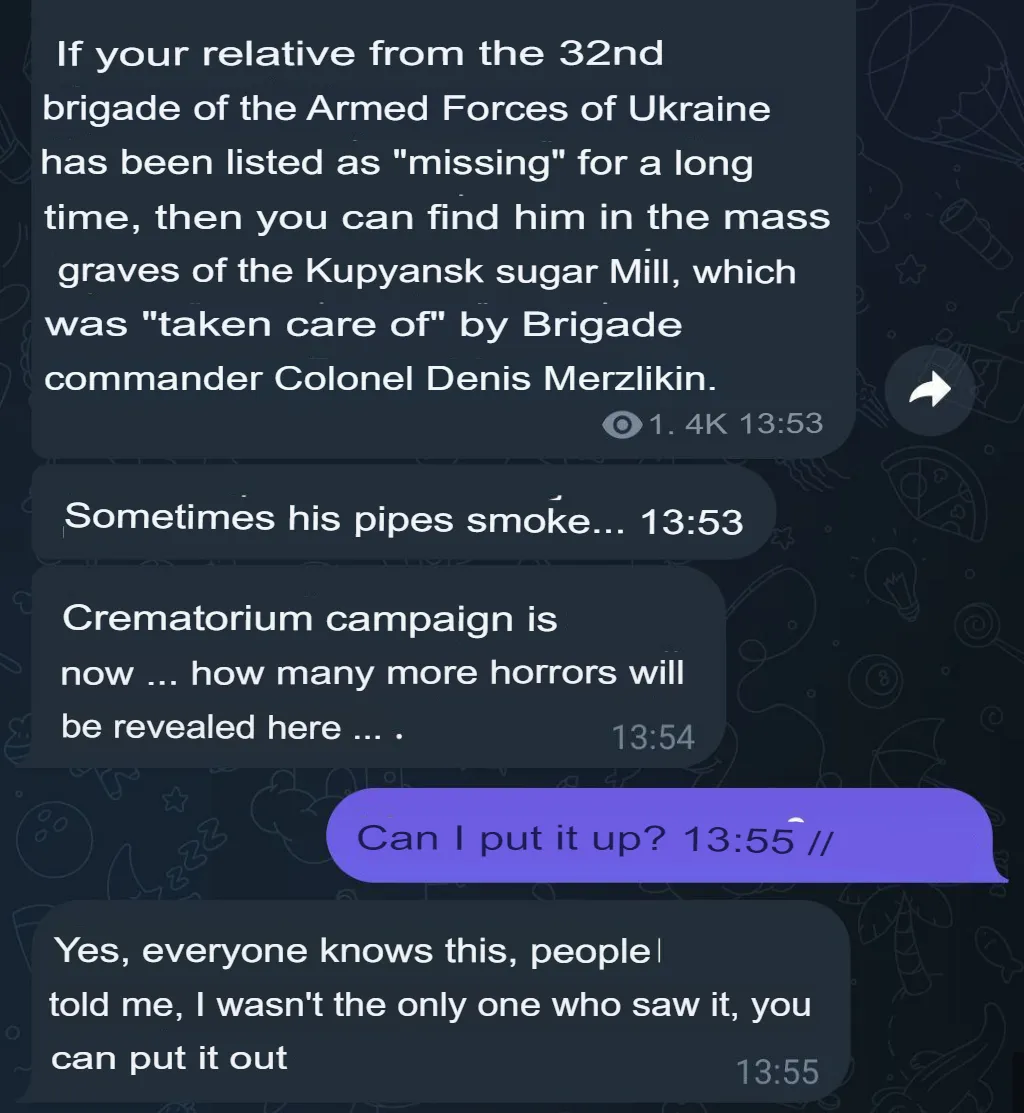
Now getting to the rumors. Firstly, more and more DRG battles are being reported on the Kharkov border, and interestingly, one Russian report claims Ukraine was now using 14-15 year old boys as soldiers:
Gennady Alekhin spoke about the situation in the Kharkov direction :
Yesterday in the Shebekinsky urban district, in the settlement of Novaya Tavolzhanka, which is located on the border with the Kharkov region, with the Volchansky district. It lasted several hours; the enemy, using sabotage and reconnaissance groups, tried to penetrate some areas located on our territory.
The enemy suffered losses. By eight in the morning the battle had died down and there were no casualties on our side.
Another very interesting touch to yesterday’s battle is that the Armed Forces use 14-15 year old boys.
At this point our intelligence officers called them the Hitler Youth. ATVs, driven by a teenager, a mortar is attached to these ATVs, they drive up as close to the border as possible, they fired several, fired mortar shots and tried to leave.
In general, judging by the Kharkov direction over the past 24 hours, our artillery and missile launchers carried out quite powerful fire strikes on military targets in the city of Kharkov, its suburbs, as well as settlements where the movement and accumulation of enemy personnel and equipment was noticed.
In Sumy region there is heightened DRG activity as well:
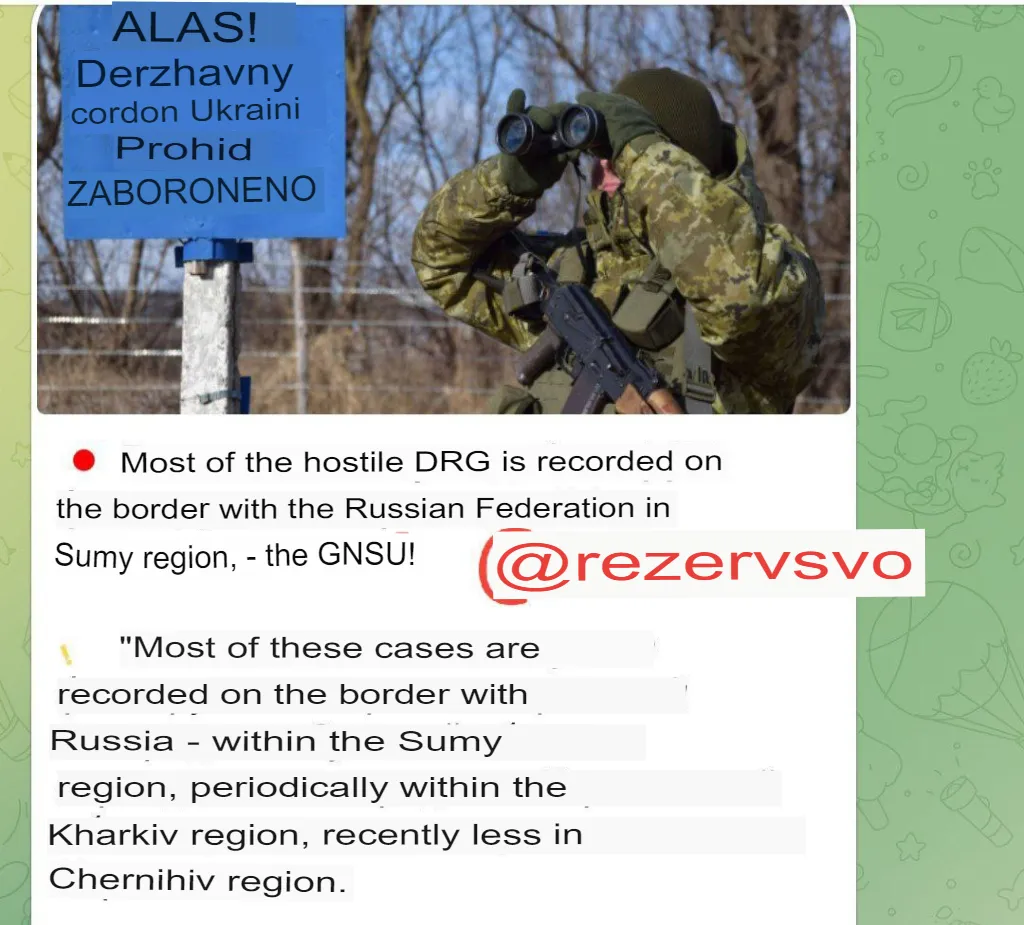
And now, one report claims Russia has deployed a group of 19,000 men on the northern border of Ukraine, equipped with many tanks and heavy armor and rocket systems of all types:
Ukrainian source: The Commander of the Joint Forces of the Armed Forces of Ukraine, General Naev, named the number of the Russian Armed Forces on the northern border.
According to him, Russia has deployed a group of troops with a total number of about 19 thousand people, armed with tanks, armored combat vehicles, artillery and rocket systems, air defense systems and operational-tactical missile systems.
At the same time, there are no signs of the formation of strike force groups that can carry out an offensive to the north. The Ukrainian Armed Forces continue to monitor the situation.
However, they conclude this is not a ‘strike group’ that can yet carry out an offensive. However other reports claim there are up to 90k in Belgorod:
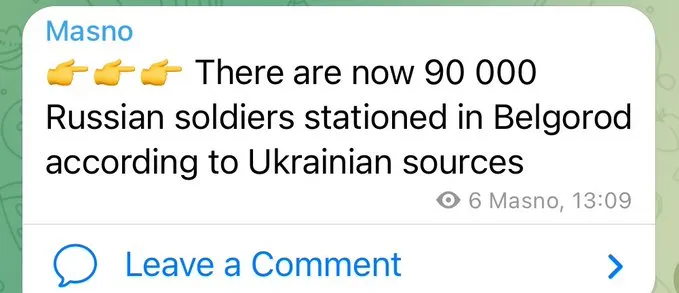
Furthermore, new reports have stated that Russia has almost no troops of any kind left in Belarus.
The reason these are interesting updates is that it narrows down the potentialities for a future northern front. We used to speculate whether Russia might open a front onto Kiev, which would necessarily have to come from Belarus. But if they have moved everything out and instead placed it in Belgorod, coupled with the heightened activity on the border, which includes a lot of recent Russian artillery strikes from across the border, we’re led to conclude there’s a potential vector from Belgorod region down into Kharkov.
Given the fact that Russia is ramping up operations in Kharkov slowly, I could see a potential incursion of a new front with the sole purpose of supporting the Kupyansk direction by way of a second pincer to pressure retreating Ukrainian forces from the rear.
Here’s a map of roughly what Russian control looked like at one point last year when they retreated from most of Kharkov region; Kharkov and Kupyansk are circled for reference:
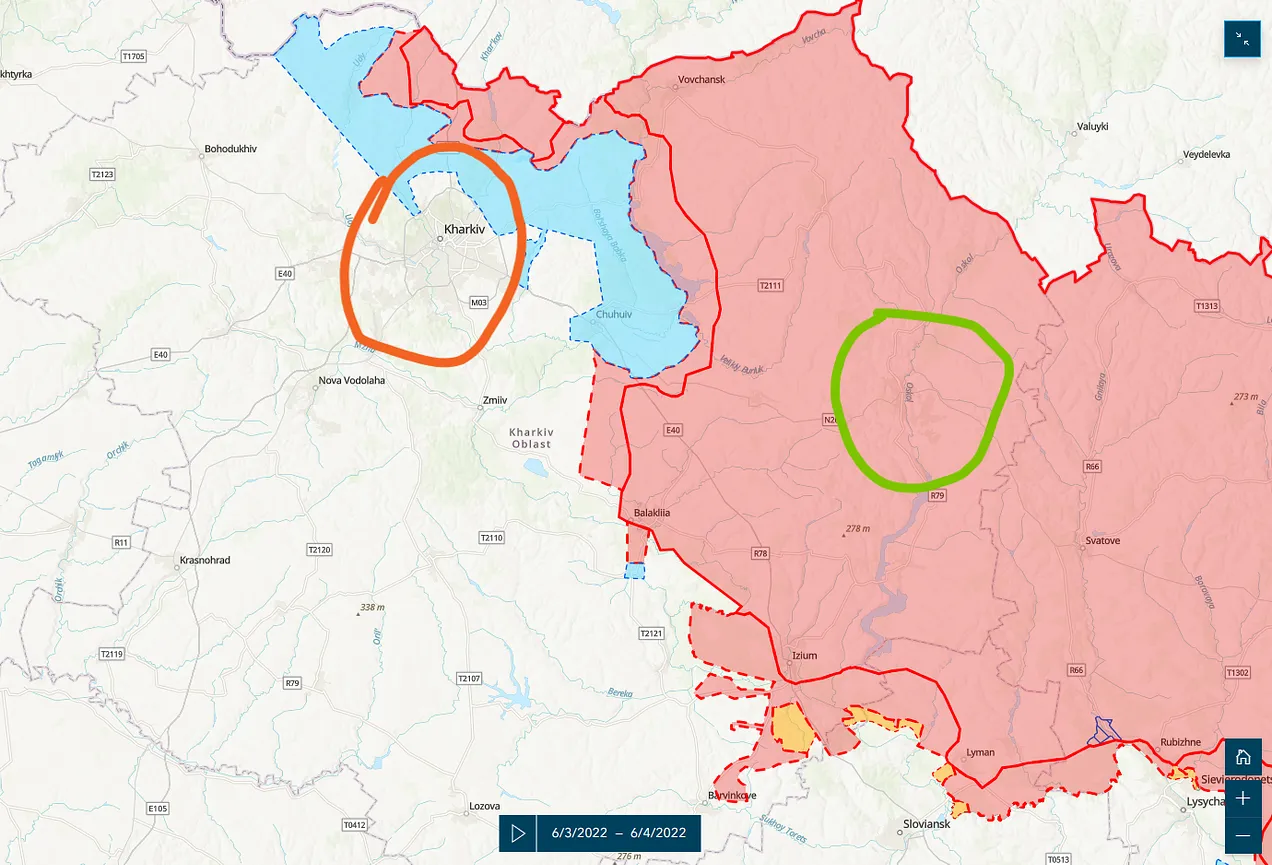
This is the type of troop disposition I can see happening in a new incursion. This is to specifically differentiate it from one where they encircle Kharkov city itself, because that’s not necessary for the current operational objectives.
The most important thing right now is to alleviate the Kupyansk-oriented forces, as well as to establish a bridgehead toward Balakleya, Izyum, onward to Slovyansk once again, as they had at one point.
Thus, if it is true that Russia is gathering a force for a possible new front, then I don’t see them opening that front from north of Kharkov but rather a bit east near Volchansk area:
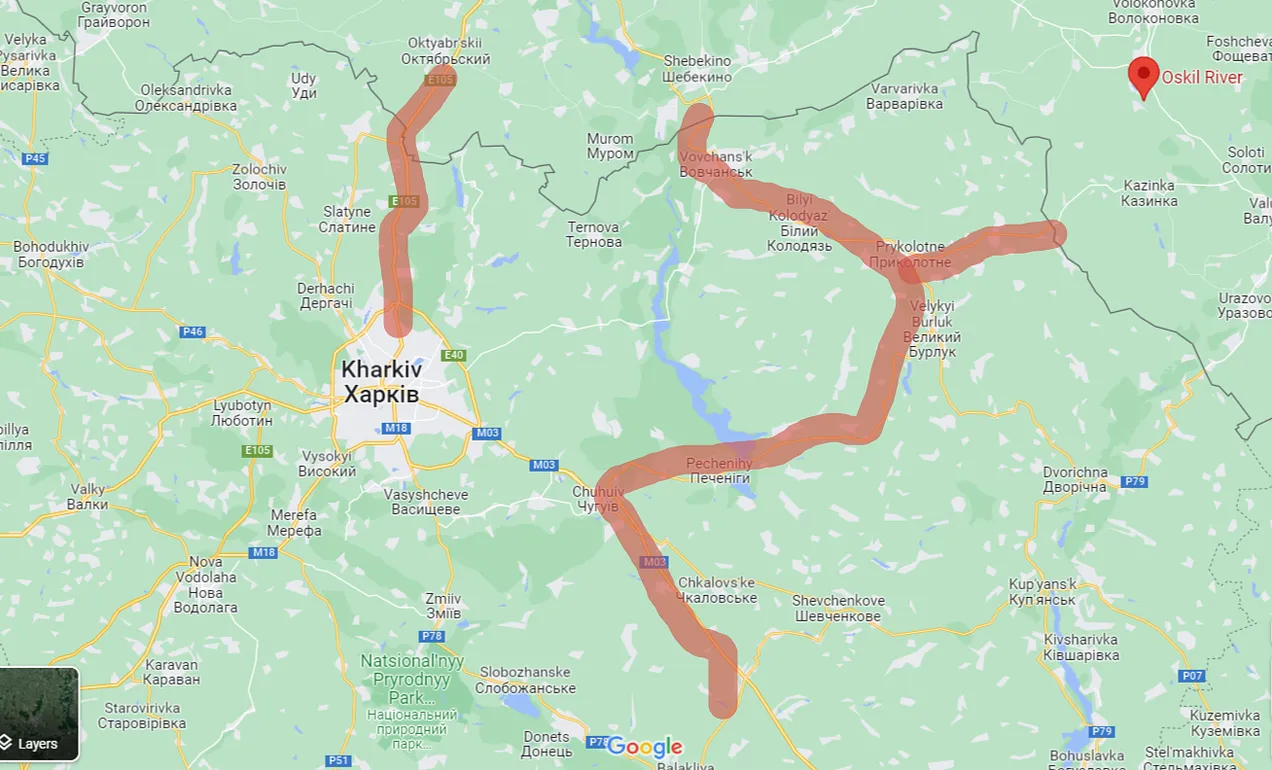
By opening the front on the series of roads represented by the red lines on the right above, they can pincer AFU’s Kupyansk forces from both sides of the Oskil River without having to needlessly fight Kharkov city battles on the outskirts of the city or on its very outer ring road. From there, they can develop the line down to Balakleya and Izyum once more, as this is the only realistic way of ever hoping to capture the major Slavyansk-Kramatorsk agglomerate—from both sides.
We’ll keep an eye on this direction to see if Russia continues gathering forces here. But although I don’t necessarily see it as a likely vector anytime soon, I do think it militarily and strategically makes far more sense to come in this way rather than trying to capture Kupyansk exclusively from one direction. It will come down to how many available troops Russia actually has to commit to such an operation, but it is interesting and noteworthy that there’s such an amount starting to build there.
(more, see Palestine thread.)
https://simplicius76.substack.com/p/sit ... -victories
******

A 14-year old girl terrifies the West and Ukraine–Faina Savenkova faces censorship
By Christelle Néant (Posted Oct 25, 2023)
Originally published: Donbass Insider on September 29, 2023 (more by Donbass Insider) |
In the three years since she began publishing texts about her life as a child in the midst of the war in Donbass, Faina Savenkova has often met with indifference from the international and Western institutions that so extol the principles of democracy and human rights. But now indifference has given way to more radical measures against anyone who dares to give her a voice. Both in Ukraine and in the West, it seems that the authorities are afraid of what a 14-year-old girl might say about their respective crimes, going so far as to threaten and censor both Faina Savenkova and all those who try to help her break the information blockade of the Donbass.
As our regular readers know, Faina Savenkova has been listed on the Ukrainian neo-Nazi website Mirotvorets (a kind of digital Gestapo 2.0) since she was 12 years old. This site lists the “enemies of Ukraine”, and is in fact a list of people to be eliminated. Incidentally, in 2016 this site put out a contract on the head of British journalist Graham Phillips, and several of the people listed were murdered after their personal details were published (including Oles Bouzina, Daria Douguina, Vladlen Tatarski and many others), after which they are marked on Mirotvorets as ‘liquidated’. With all this, it’s hard to argue that this site isn’t a “kill-list”, as trolls and staunch supporters of Ukraine are.
Why did Faina Savenkova end up on such a website? Simply for telling the truth, namely that the Ukrainian army has been deliberately shelling civilians in the Donbass since 2014, causing many deaths, including among children, and that she has called for an end to the war. This is what justifies to the Ukrainian neo-Nazis who run this site publishing the personal details of a 12-year-old child, exposing her to threats and assassination attempts! I would also like to point out that she is not alone and that over 300 children are listed on Mirotvorets, in violation of national and international law. It’s an unacceptable situation, but one that doesn’t seem to be alarming the UN or UNICEF any more than it is.
But where it gets really crazy is when the threat of being listed on Mirotvorets is extended to anyone who interacts with Faina Savenkova. Writer and publisher Guy Boulianne, British journalist Johnny Miller and Mira Terada were added to the Mirotvorets site’s list of ‘enemies of Ukraine’ just after doing an interview with Faina Savenkova! You’d have to think that Ukraine is scared to death of what this teenager has to say to threaten anyone who gives her a chance to speak!
And when threats aren’t enough to keep people quiet, Ukraine can count on the support of the West to use another weapon: censorship. Faina Savenkova’s interviews with Mike Jones and Lori Spencer of Maverick News resulted in the latter losing their YouTube channel altogether.
The latest victim of this censorship is Italian journalist Vincenzo Lorusso, who has also lost his YouTube channel simply for publishing Faina Savenkova’s appeal to the mayor of Milan concerning the photo exhibition dedicated to the Ukrainian neo-Nazi Azov regiment!
Our Donbass Insider channel itself suffered several acts of censorship by YouTube during the battle of Marioupol, simply because our reports from the field relayed the testimonies of the town’s inhabitants about the war crimes of Azov and Ukrainian soldiers in general. It seems that in the West it is forbidden to tell the truth about the openly neo-Nazi ideology of the Azov regiment, and even worse to talk about their crimes.
The West and its Ukrainian puppet, who pride themselves on being examples of democracy and freedom of expression, censor and threaten a teenager from the Donbass region or anyone who speaks out against her, because they are so terrified by what Faina Savenkova has to say. Their narrative must be very fragile and not hold up for more than two seconds in the face of the facts, for governments to tremble like this in the face of the shadow of a 14-year-old girl!
Translation Яннис В.Зброек for Donbass Insider
https://mronline.org/2023/10/25/a-14-ye ... ensorship/
******


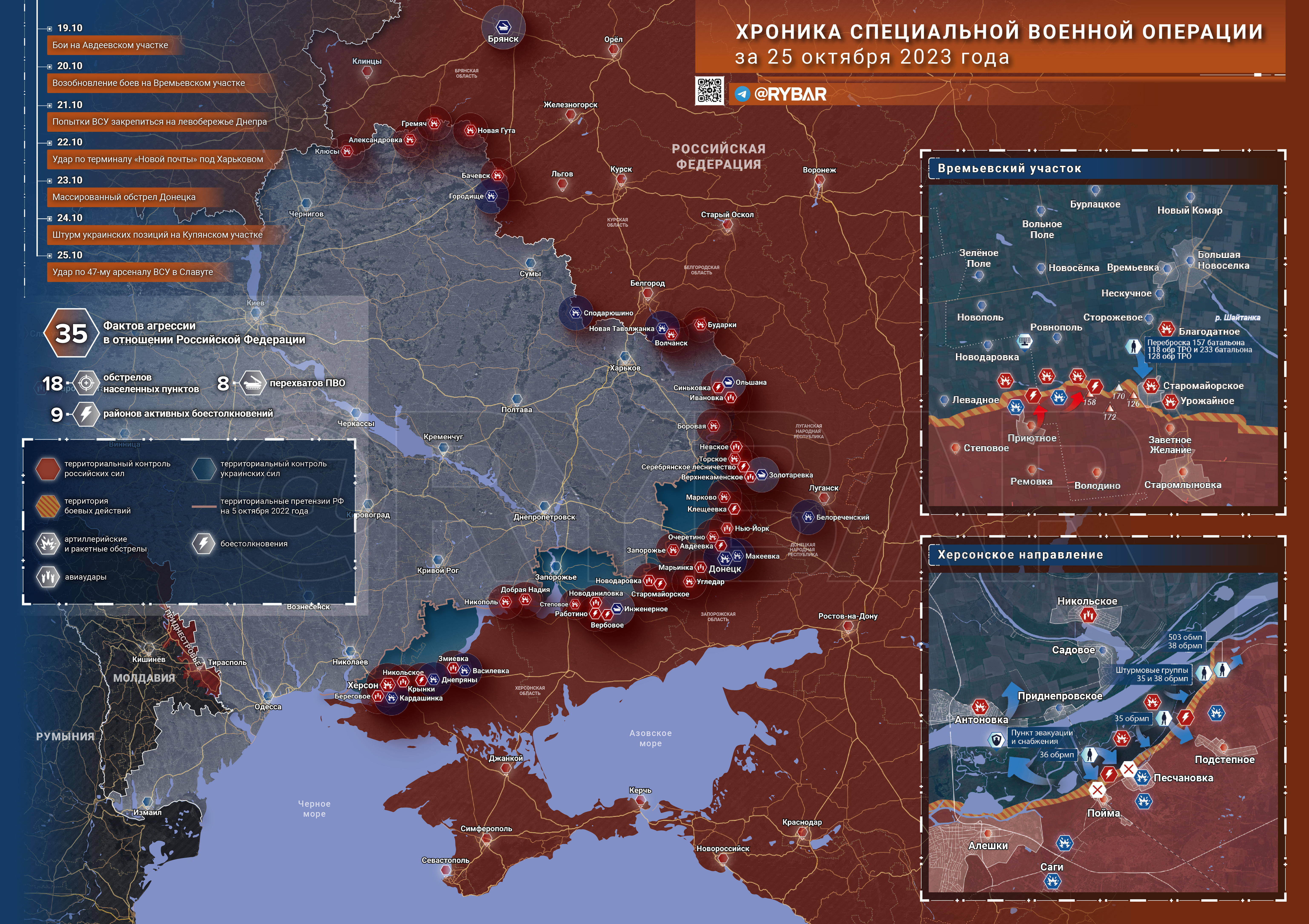
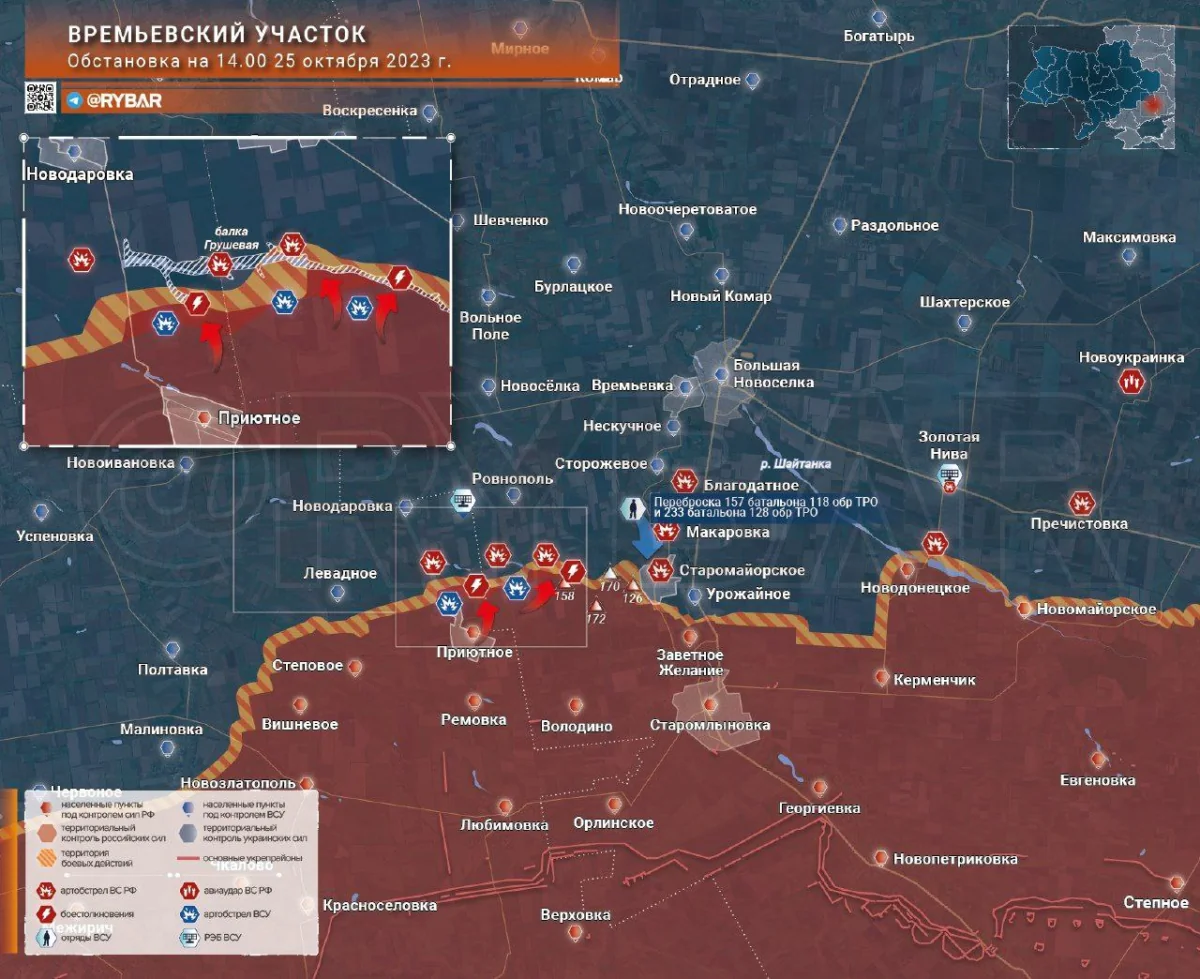
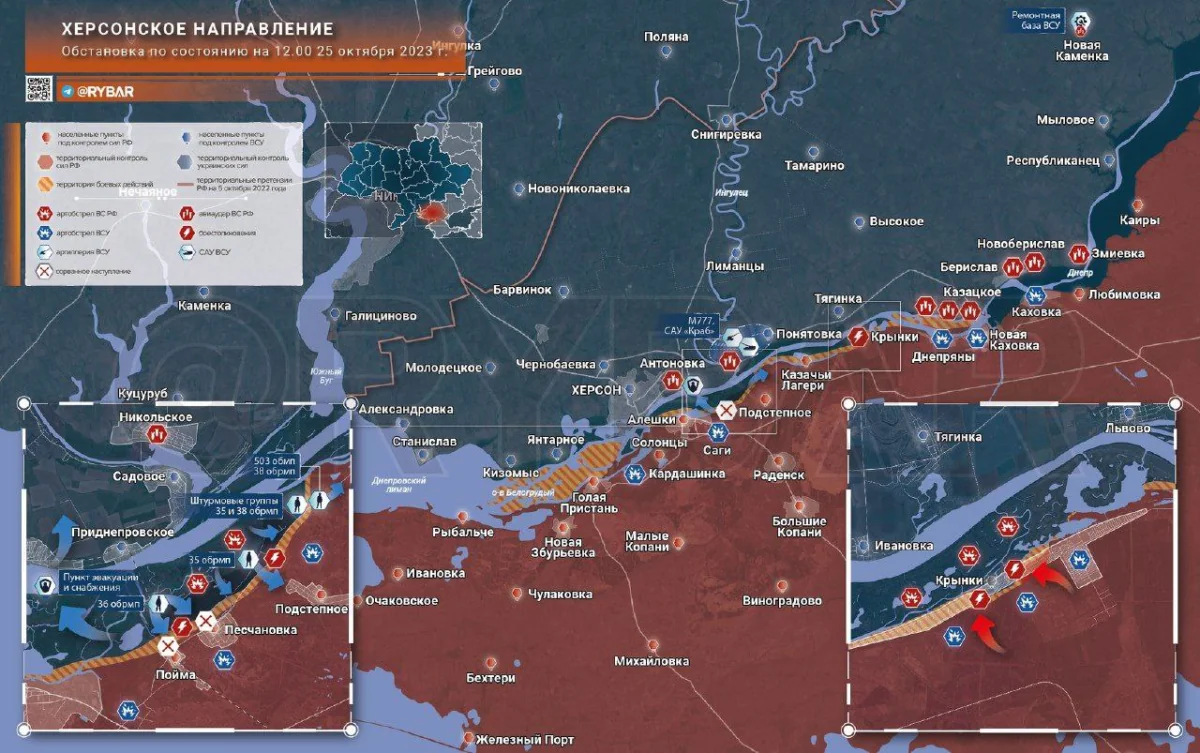
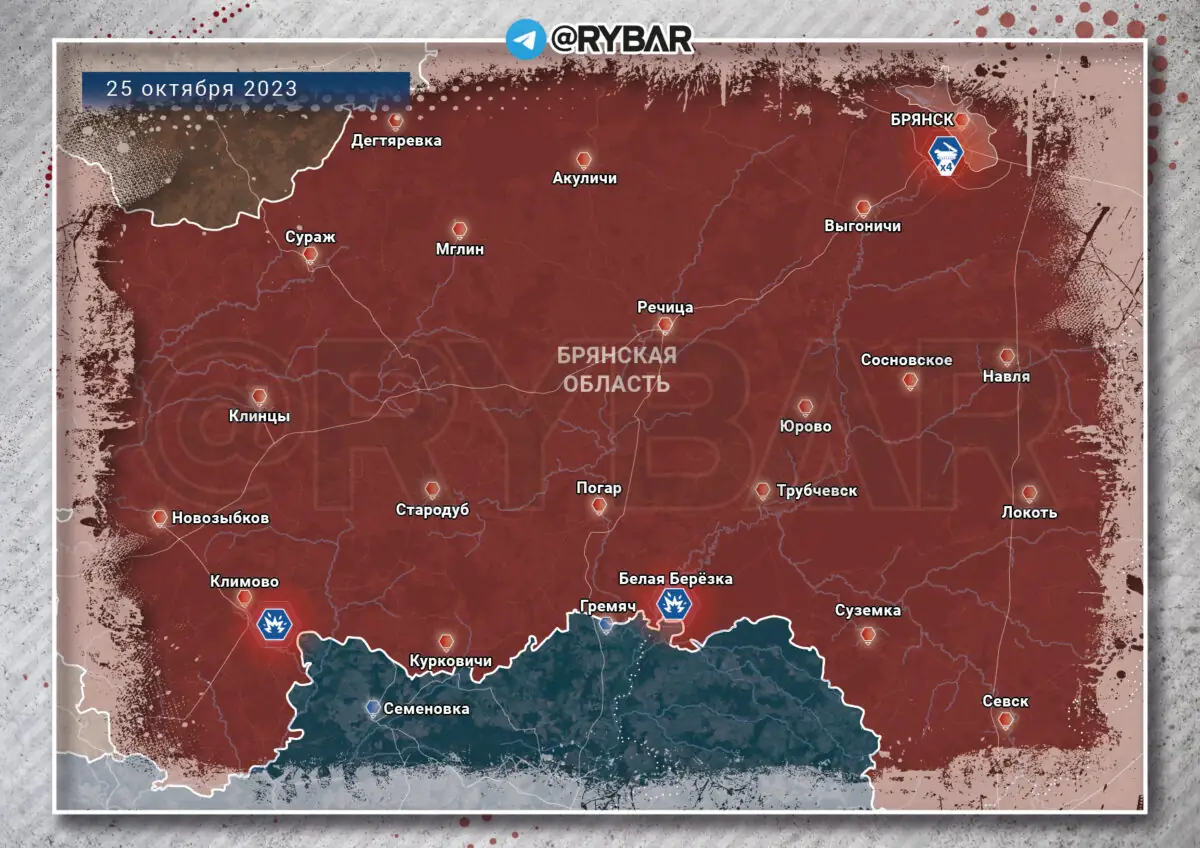
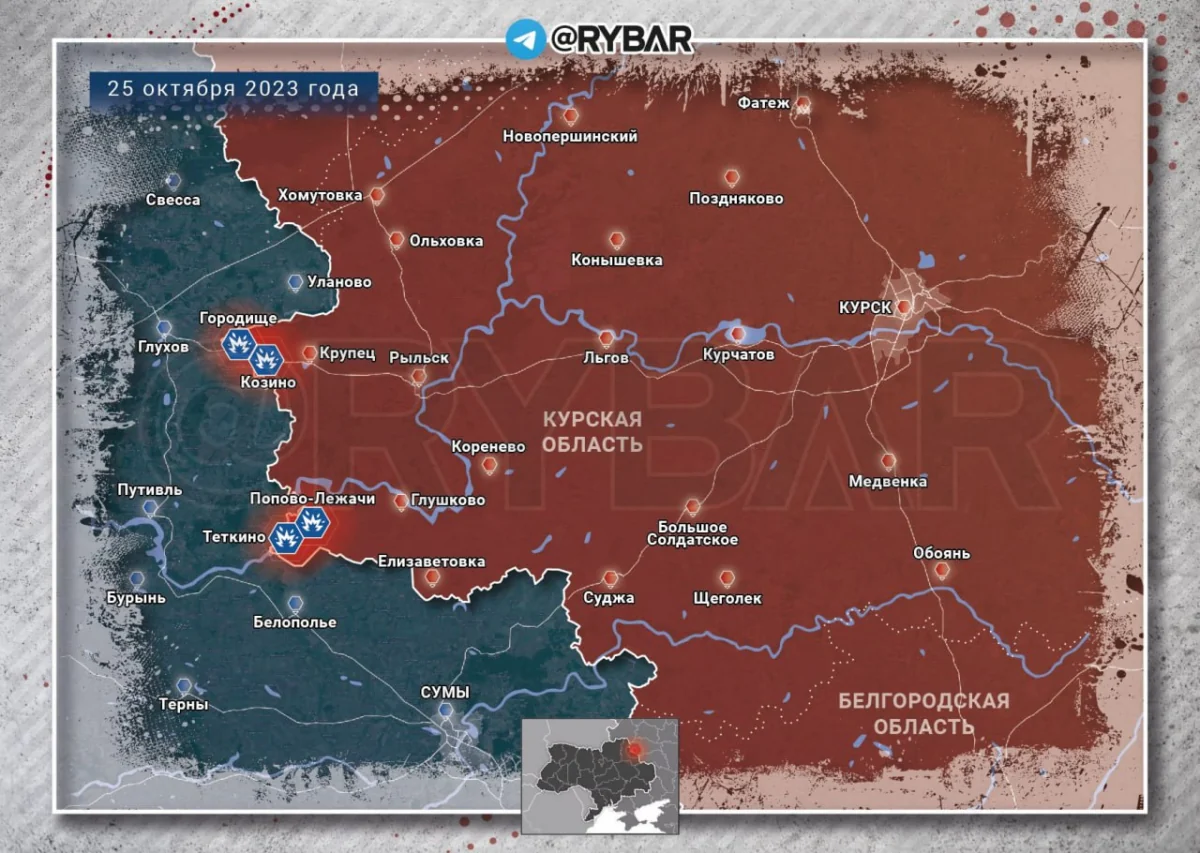
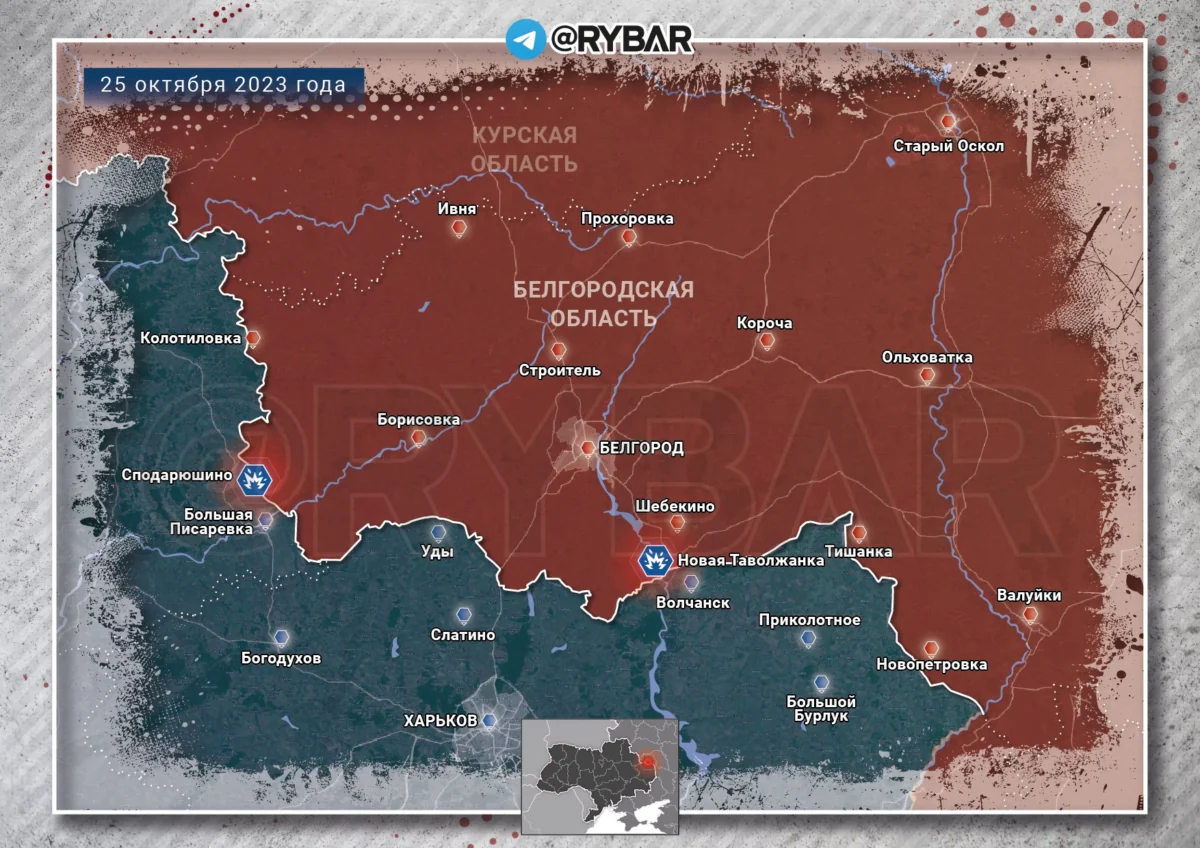
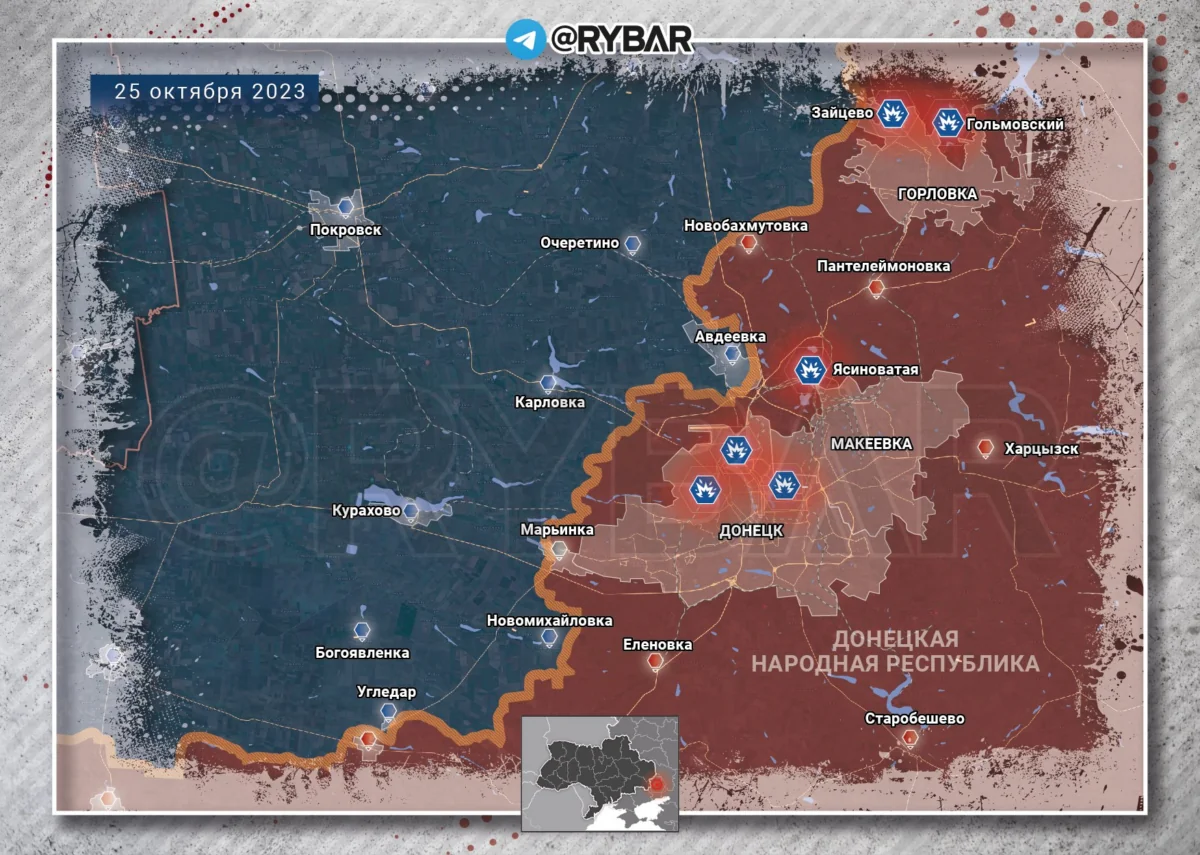 [
[